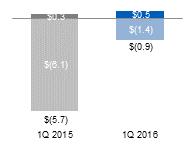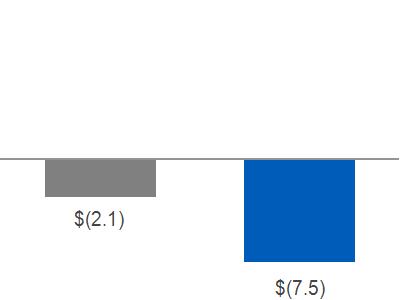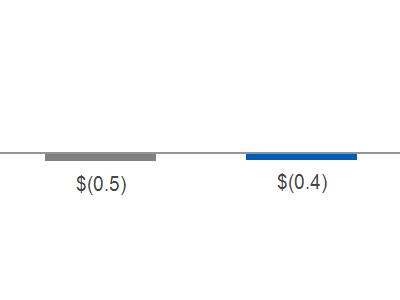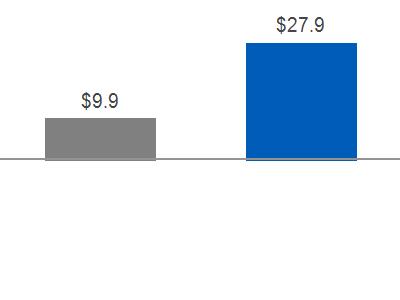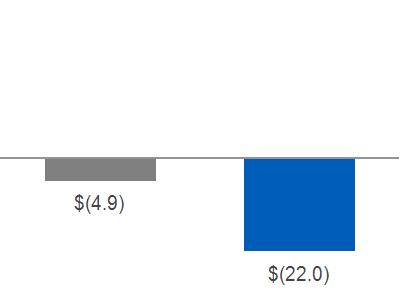UNITED STATES SECURITIES AND EXCHANGE COMMISSION
WASHINGTON, D.C. 20549
FORM 10-Q
(Mark One) QUARTERLY REPORT PURSUANT TO SECTION 13 OR 15(d) OF THE SECURITIES EXCHANGE ACT OF 1934 For the quarterly period ended March 31, 2016 OR |
| |
TRANSITION REPORT PURSUANT TO SECTION 13 OR 15(d) OF THE SECURITIES EXCHANGE ACT OF 1934 |
| |
| For the transition period from ____ to ____ |
| |
Commission file number 001-00035 GENERAL ELECTRIC COMPANY (Exact name of registrant as specified in its charter) |
| New York | | 14-0689340 |
| (State or other jurisdiction of incorporation or organization) | | (I.R.S. Employer Identification No.) |
| | | |
| 3135 Easton Turnpike, Fairfield, CT | | 06828-0001 |
| (Address of principal executive offices) | | (Zip Code) |
| |
(Registrant's telephone number, including area code) (203) 373-2211 _______________________________________________ (Former name, former address and former fiscal year, if changed since last report) |
Indicate by check mark whether the registrant (1) has filed all reports required to be filed by Section 13 or 15(d) of the Securities Exchange Act of 1934 during the preceding 12 months (or for such shorter period that the registrant was required to file such reports), and (2) has been subject to such filing requirements for the past 90 days. Yes No
Indicate by check mark whether the registrant has submitted electronically and posted on its corporate Web site, if any, every Interactive Data File required to be submitted and posted pursuant to Rule 405 of Regulation S-T (§232.405 of this chapter) during the preceding 12 months (or for such shorter period that the registrant was required to submit and post such files). Yes No
Indicate by check mark whether the registrant is a large accelerated filer, an accelerated filer, a non-accelerated filer, or a smaller reporting company. See the definitions of "large accelerated filer," "accelerated filer" and "smaller reporting company" in Rule 12b-2 of the Exchange Act. (Check one):
Large accelerated filer | Accelerated filer |
Non-accelerated filer | Smaller reporting company |
Indicate by check mark whether the registrant is a shell company (as defined in Rule 12b-2 of the Exchange Act). Yes No
There were 9,195,657,000 shares of common stock with a par value of $0.06 per share outstanding at March 31, 2016.
TABLE OF CONTENTS
| | Page |
| | |
| Forward Looking Statements | 3 |
| Management's Discussion and Analysis of Financial Condition and Results of Operations (MD&A) | 4 |
| Key Performance Indicators | 8 |
| Consolidated Results | 10 |
| Segment Operations | 14 |
| Corporate Items and Eliminations | 34 |
| Discontinued Operations | 36 |
| Other Consolidated Information | 37 |
| Statement of Financial Position | 38 |
| Financial Resources and Liquidity | 39 |
| Exposures | 45 |
| Critical Accounting Estimates | 46 |
| Other Items | 47 |
| Controls and Procedures | 48 |
| Other Financial Data | 48 |
| Regulations and Supervision | 49 |
| Legal Proceedings | 50 |
| Financial Statements and Notes | 53 |
| Exhibits | 102 |
| Form 10-Q Cross Reference Index | 103 |
| Signatures | 104 |
FORWARD LOOKING STATEMENTS
This document contains "forward-looking statements" – that is, statements related to future, not past, events. In this context, forward-looking statements often address our expected future business and financial performance and financial condition, and often contain words such as "expect," "anticipate," "intend," "plan," "believe," "seek," "see," "will," "would," or "target."
Forward-looking statements by their nature address matters that are, to different degrees, uncertain, such as statements about our announced plan to reduce the size of our financial services businesses, including expected cash and non-cash charges associated with this plan and earnings per share of GE Capital's retained businesses (Verticals); expected income; earnings per share; revenues; organic growth; growth of our Digital business; margins; cost structure; restructuring charges; cash flows; return on capital; capital expenditures, capital allocation or capital structure; dividends; and the split between Industrial and Capital earnings.
For us, particular uncertainties that could cause our actual results to be materially different than those expressed in our forward-looking statements include:
| | obtaining (or the timing of obtaining) any required regulatory reviews or approvals or any other consents or approvals associated with our announced plan to reduce the size of our financial services businesses; |
| | our ability to complete incremental asset sales as part of that plan in a timely manner (or at all) and at the prices we have assumed; |
| | our ability to reduce costs as we execute that plan; |
| | changes in law, economic and financial conditions, including interest and exchange rate volatility, commodity and equity prices and the value of financial assets, including the impact of these conditions on our ability to sell or the value of incremental assets to be sold as part of our announced plan to reduce the size of our financial services businesses as well as other aspects of that plan; |
| | the impact of conditions in the financial and credit markets on the availability and cost of GE Capital Global Holdings, LLC's (GE Capital) funding, and GE Capital's exposure to counterparties; |
| | the impact of conditions in the housing market and unemployment rates on the level of commercial credit defaults; |
| | pending and future mortgage loan repurchase claims and other litigation claims and investigations in connection with WMC, which may affect our estimates of liability, including possible loss estimates; |
| | our ability to maintain our current credit rating and the impact on our funding costs and competitive position if we do not do so; |
| | the adequacy of our cash flows and earnings and other conditions which may affect our ability to pay our quarterly dividend at the planned level or to repurchase shares at planned levels; |
| | GE Capital's ability to pay dividends to GE at the planned level, which may be affected by GE Capital's cash flows and earnings, financial services regulation and oversight, and other factors; |
| | our ability to convert pre-order commitments/wins into orders/bookings; |
| | the price we realize on orders/bookings since commitments/wins are stated at list prices; |
| | customer actions or developments such as early aircraft retirements or reduced energy demand and other factors that may affect the level of demand and financial performance of the major industries and customers we serve; |
| | the effectiveness of our risk management framework; |
| | the impact of regulation and regulatory, investigative and legal proceedings and legal compliance risks, including the impact of financial services regulation and litigation; |
| | our capital allocation plans, as such plans may change including with respect to the timing and size of share repurchases, acquisitions, joint ventures, dispositions and other strategic actions; |
| | our success in completing, including obtaining regulatory approvals for, announced transactions, such as the Appliances disposition and our announced plan and transactions to reduce the size of our financial services businesses; |
| | our success in integrating acquired businesses and operating joint ventures; |
| | our ability to realize anticipated earnings and savings from announced transactions, acquired businesses and joint ventures; |
| | the impact of potential information technology or data security breaches; and |
| | the other factors that are described in "Risk Factors" in our Annual Report on Form 10-K for the year ended December 31, 2015. |
These or other uncertainties may cause our actual future results to be materially different than those expressed in our forward-looking statements. We do not undertake to update our forward-looking statements. This document includes certain forward-looking projected financial information that is based on current estimates and forecasts. Actual results could differ materially.
MANAGEMENT'S DISCUSSION AND ANALYSIS OF FINANCIAL CONDITION AND RESULTS OF OPERATIONS (MD&A)
PRESENTATION
The consolidated financial statements of General Electric Company (the Company) combine the industrial manufacturing and services businesses of General Electric Company (GE) with the financial services businesses of GE Capital Global Holdings, LLC, and its predecessor, General Electric Capital Corporation (GE Capital or Financial Services).
We believe that investors will gain a better understanding of our company if they understand how we measure and talk about our results. Because of the diversity in our businesses, we present our financial statements in a three-column format, which allows investors to see our industrial operations separately from our Financial Services operations. We believe that this, along with further disaggregation of our results into segments and GE Capital Verticals, provides useful information to investors. When used in this report, unless otherwise indicated by the context, we use the terms to mean the following:
| | General Electric or the Company – the parent company, General Electric Company. |
| | GE – the adding together of all affiliates other than GE Capital, whose continuing operations are presented on a one-line basis, giving effect to the elimination of transactions among such affiliates. Transactions between GE and GE Capital have not been eliminated at the GE level. We present the results of GE in the center column of our consolidated statements of earnings, financial position and cash flows. An example of a GE metric is GE cash from operating activities (GE CFOA). |
| | General Electric Capital Corporation or GECC – the predecessor to GE Capital Global Holdings, LLC. |
| | GE Capital Global Holdings, LLC or GECGH – the adding together of all affiliates of GECGH, giving effect to the elimination of transactions among such affiliates. |
| | GE Capital or Financial Services – refers to GECGH, or its predecessor GECC, and is the adding together of all affiliates of GE Capital giving effect to the elimination of transactions among such affiliates. We present the results of GE Capital in the right-side column of our consolidated statements of earnings, financial position and cash flows. |
| | GE consolidated – the adding together of GE and GE Capital, giving effect to the elimination of transactions between the two. We present the results of GE consolidated in the left-side column of our consolidated statements of earnings, financial position and cash flows. |
| | Industrial – GE excluding the continuing operations of GE Capital. We believe that this provides investors with a view as to the results of our industrial businesses and corporate items. An example of an Industrial metric is Industrial CFOA, which is GE CFOA excluding the effects of dividends from GE Capital. |
| | Industrial segment – the sum of our eight industrial reporting segments, without giving effect to the elimination of transactions among such segments. This provides investors with a view as to the results of our industrial segments, without inter-segment eliminations and corporate items. An example of an industrial segment metric is industrial segment revenue growth. |
| | Total segment – the sum of our eight industrial segments and one financial services segment, without giving effect to the elimination of transactions among such segments. This provides investors with a view as to the results of all of our segments, without inter-segment eliminations and corporate items. |
| | GE Capital Verticals or Verticals – the adding together of GE Capital businesses that we expect to retain, principally its vertical financing businesses—GE Capital Aviation Services (GECAS), Energy Financial Services (EFS) and Industrial Finance (which includes Healthcare Equipment Finance and Working Capital Solutions)—that relate to the Company's core industrial domain and other operations, including our run-off insurance activities, and allocated corporate costs. |
We integrate acquisitions as quickly as possible. Revenues and earnings from the date we complete the acquisition through the end of the fourth quarter following the acquisition are considered the acquisition effect of such businesses.
Discussion of GE Capital's total assets includes deferred income tax liabilities, which are presented within assets for purposes of our consolidated statement of financial position presentations for this filing.
Amounts reported in billions in graphs within this report are computed based on the amounts in millions. As a result, the sum of the components reported in billions may not equal the total amount reported in billions due to rounding. Certain columns and rows within the tables may not add due to the use of rounded numbers. Percentages presented are calculated from the underlying numbers in millions.
Discussions throughout this MD&A are based on continuing operations unless otherwise noted.
The MD&A should be read in conjunction with the Financial Statements and Notes to the consolidated financial statements.
OTHER TERMS USED BY GE
| | Backlog – unfilled customer orders for products and product services (expected life of contract sales for product services). |
| | Digital revenues – revenues related to software-enabled product upgrades, internally developed software (including Predix) and associated hardware, and software-enabled productivity solutions. These revenues are largely generated from our operating businesses and are included in their segment results. |
| | Earnings – unless otherwise indicated, we refer to captions such as "earnings from continuing operations attributable to common shareowners" simply as earnings. |
| | Earnings per share (EPS) – unless otherwise indicated, when we refer to earnings per share, it is the diluted per-share amount of "earnings from continuing operations attributable to common shareowners". |
| | Ending Net Investment (ENI) – the total capital we have invested in the Financial Services business. It is the sum of short-term borrowings, long-term borrowings and equity (excluding noncontrolling interests) adjusted for unrealized gains and losses on investment securities and hedging instruments. Alternatively, it is the amount of assets of continuing operations less the amount of non-interest-bearing liabilities. |
| | Equipment leased to others (ELTO) – rental equipment we own that is available to rent and is stated at cost less accumulated depreciation. |
| | GE Capital Exit Plan – our plan, announced on April 10, 2015, to reduce the size of our financial services businesses through the sale of most of the assets of GE Capital, and to focus on continued investment and growth in our industrial businesses. |
| | Industrial operating profit margin – Industrial segment profit plus corporate items and eliminations (excluding gains, restructuring, and pre-tax non-operating pension costs) divided by industrial segment revenues plus corporate items and eliminations (excluding gains and GE-GE Capital eliminations). |
| | Industrial segment gross margin – industrial segment sales less industrial segment cost of sales. |
| | Non-operating pension costs – comprise the expected return on plan assets, interest cost on benefit obligations and net actuarial gain (loss) amortization for our principal pension plans. |
| | Operating earnings – GE earnings from continuing operations attributable to common shareowners excluding the impact of non-operating pension costs. |
| | Operating earnings per share – unless otherwise indicated, when we refer to operating earnings per share, it is the diluted per-share amount of "operating earnings". |
| | Operating pension costs – comprise the service cost of benefits earned, prior service cost amortization and curtailment loss for our principal pension plans. |
| | Organic revenues – revenues excluding the effects of acquisitions, dispositions and foreign currency exchange. |
| | Product services – for purposes of the financial statement display of sales and costs of sales in our Statement of Earnings, "goods" is required by SEC regulations to include all sales of tangible products, and "services" must include all other sales, including other services activities. In our MD&A section of this report, we refer to sales under product services agreements and sales of both goods (such as spare parts and equipment upgrades) and related services (such as monitoring, maintenance and repairs) as sales of "product services," which is an important part of our operations. We refer to "product services" simply as "services" within the MD&A. |
| | Product services agreements – contractual commitments, with multiple-year terms, to provide specified services for products in our Power, Renewable Energy, Oil & Gas, Aviation and Transportation installed base – for example, monitoring, maintenance, service and spare parts for a gas turbine/generator set installed in a customer's power plant. |
| | Revenues – unless otherwise indicated, we refer to captions such as "revenues and other income" simply as revenues. |
| | Segment profit – refers to the operating profit of the industrial segments and the net earnings of the Financial Services segment. See the Segment Operations section within the MD&A for a description of the basis for segment profits. |
NON-GAAP FINANCIAL MEASURES
In the accompanying analysis of financial information, we sometimes use information derived from consolidated financial data but not presented in our financial statements prepared in accordance with U.S. generally accepted accounting principles (GAAP). Certain of these data are considered "non-GAAP financial measures" under the SEC rules. Specifically, we have referred, in various sections of this report, to:
| | Industrial segment organic revenue growth |
| | Operating and non-operating pension costs |
| | Adjusted Corporate costs (operating) |
| | Operating earnings, operating EPS and Industrial operating earnings |
| | Industrial operating + Verticals earnings and EPS |
| | Industrial operating profit and operating profit margin (excluding Alstom) |
| | Industrial segment operating profit and operating profit margin (excluding Alstom) |
| | Industrial cash flows from operating activities (Industrial CFOA) |
| | Capital ending net investment (ENI), excluding liquidity |
The reasons we use these non-GAAP financial measures and the reconciliations to their most directly comparable GAAP financial measures are included in the Supplemental Information section within this MD&A. Non-GAAP financial measures referred to in this report are designated with an asterisk (*).
OUR OPERATING SEGMENTS
We are a global digital industrial company, transforming industry with software-defined machines and solutions that are connected, responsive and predictive. With products and services ranging from aircraft engines, locomotives, power generation and oil and gas production equipment to medical imaging, financing and industrial products.
OUR INDUSTRIAL OPERATING SEGMENTS
| Power | | Energy Connections | | Transportation |
| Renewable Energy | | Aviation | | Appliances & Lighting |
| Oil & Gas | | Healthcare | | |
OUR FINANCIAL SERVICES OPERATING SEGMENT
Operational and financial overviews for our operating segments are provided in the Segment Operations section within this MD&A.
CORPORATE INFORMATION
GE's Internet address at www.ge.com, Investor Relations website at www.ge.com/investor-relations and our corporate blog at www.gereports.com, as well as GE's Facebook page and Twitter accounts, including @GE_Reports, contain a significant amount of information about GE, including financial and other information for investors. GE encourages investors to visit these websites from time to time, as information is updated and new information is posted.
KEY PERFORMANCE INDICATORS
(Dollars in billions; per-share amounts in dollars)
REVENUES PERFORMANCE | INDUSTRIAL ORDERS | | INDUSTRIAL BACKLOG | |
| | | | | | |
| | 1Q 2016 | | | | Equipment Services | | | Equipment Services | |
| Industrial Segment | 6% | | |
| Industrial Segment Organic* | (1)% | | |
| Financial Services | 1% | | |
| | | | |
| | | | | (a) Included $3.0 billion related to Alstom | | (a) Included $28.8 billion related to Alstom | |
INDUSTRIAL SEGMENT PROFIT | INDUSTRIAL SEGMENT MARGIN | | |
| | | | GE Capital Dividend Industrial CFOA* |
(a) Included an insignificant amount related to Alstom | (a) Included (0.7)% related to Alstom | | (a) CFOA included $(0.4) billion related to Alstom |
| | | | |
EARNINGS (LOSS) PER SHARE | OPERATING EPS* | | INDUSTRIAL OPERATING + VERTICALS EPS* |
| | | |
*Non-GAAP Financial Measure
| SIGNIFICANT DEVELOPMENTS IN 2016 |
| | | | Our consolidated revenues were significantly affected by the U.S. dollar compared with various foreign currencies, and our operating earnings were significantly affected by transactional foreign exchange impacts as described in our consolidated results and segment operating results that follow. |
| | | | During the first quarter of 2016, we returned $8.3 billion to shareholders including $6.1 billion through buyback of our common stock and $2.2 billion in dividends. |
| | | | On January 15, 2016, we announced the signing of a definitive agreement to sell our Appliances business to Qingdao Haier Co., Ltd. (Haier) for approximately $5.4 billion. The transaction has been approved by our board of directors and Haier's board of directors and shareholders and remains subject to customary closing conditions, including regulatory approvals. The transaction is targeted to close in the second quarter of 2016. |
| | | | In March 2016, we completed the previously announced sale of the majority of our North American commercial lending and leasing businesses to Wells Fargo & Co. The sale included GE Capital's global Commercial Distribution Finance (CDF) and North American Vendor Finance and Corporate Finance platforms. The total transaction represents ending net investment (ENI), excluding liquidity (as originally reported at December 31, 2014) of approximately $30 billion. The portion that closed in March represents approximately $28 billion of ENI, excluding liquidity (as originally reported at December 31, 2014) and does not include the sale to Wells Fargo of the CDF business outside North America that is expected to be completed later in 2016. On March 31, 2016, GE filed its request to the Financial Stability Oversight Council (FSOC) for rescission of GE Capital's designation as a nonbank Systemically Important Financial Institution (SIFI). |
CONSOLIDATED RESULTS
THREE MONTHS ENDED MARCH 31
(Dollars in billions)
| | INDUSTRIAL AND FINANCIAL SERVICES REVENUES |
| | | |
| (a)Included $2.8 billion related to Alstom | | (a)Included $2.8 billion related to Alstom |
COMMENTARY: 2016 - 2015 | | |
Consolidated revenues increased $1.6 billion, or 6%. Industrial revenues increased $1.6 billion, or 7%, mainly as the effects of acquisitions, primarily Alstom ($2.8 billion) were partially offset by the effects of a stronger U.S. dollar ($0.5 billion), the prior year dispositions ($0.5 billion) and organic revenue decreases ($0.2 billion). The effects of acquisitions increased Industrial revenues $0.2 billion and dispositions decreased Industrial revenues $0.2 billion in 2015. Financial services revenues increased 1% primarily as a result of the effects of acquisitions and organic revenue growth, partially offset by the effects of foreign currency exchange. |
| |
*Non-GAAP Financial Measure
THREE MONTHS ENDED MARCH 31
(Dollars in billions)
| | OPERATING EARNINGS (LOSS)* | | INDUSTRIAL SELLING, GENERAL & ADMINISTRATIVE (SG&A) AS A % OF SALES |
| |
| | (a) 15.2% excluding $2.9 billion of Alstom sales and $0.6 billion of Alstom SG&A |
COMMENTARY: 2016 - 2015 |
Consolidated earnings increased $4.8 billion. Financial Services losses decreased 84% primarily due to the absence of the first quarter 2015 charges associated with the GE Capital Exit Plan. The effects of acquisitions on our consolidated net earnings were a loss of $0.1 billion in 2016 (primarily Alstom) and an insignificant amount in 2015. The effects of dispositions on net earnings were insignificant amounts in both 2016 and 2015, respectively. Foreign exchange had a significant impact on our first quarter 2016 earnings. Industrial operating profit was adversely affected by $0.3 billion, primarily as a result of foreign exchange transactional impacts related to remeasurement and mark-to-market charges on open hedges. This impact was larger than in previous quarters as a result of significant movements in certain currencies including the weakening of the pound sterling and strengthening of the Japanese yen and Brazilian real. The underlying transactions for which these hedges were put in place will be reflected in sales and cost of sales in future periods and we expect the net impact of the hedges and underlying transactions to be insignificant over the lives of the contracts. Earnings per share amounts for the first quarter of 2016 were positively impacted by the reduction in number of outstanding common shares compared to the first quarter of 2015. The average number of shares outstanding used to calculate first quarter 2016 earnings per share was 8% lower than in the first quarter of 2015 as a result of previously disclosed actions, primarily the 2015 Synchrony Financial share exchange and ongoing share buyback activities over the last 12 months funded in large part by dividends from GE Capital. Industrial SG&A as a percentage of sales decreased 30 basis points (bps) as the favorable impact of global cost reduction initiatives, primarily at Corporate, and lower non-operating pension costs were partially offset by higher restructuring and Alstom acquisition-related costs. |
See the Other Consolidated Information section within the MD&A for a discussion of income taxes.
*Non-GAAP Financial Measure
GE CAPITAL
GE Capital results include continuing operations, which are reported in the Capital segment (see Segment discussion), and discontinued operations (see Discontinued Operations section and Note 2).
THE GE CAPITAL EXIT PLAN
On April 10, 2015, the Company announced a plan (the GE Capital Exit Plan) to create a simple, more valuable company by reducing the size of its financial services businesses through the sale of most of the assets of GE Capital and aligning a smaller GE Capital with GE's industrial businesses. We expect GE Capital to release approximately $35 billion in dividends to GE (subject to regulatory approval) as a result of the sale of GE Capital assets. We received $4.3 billion in dividends from GE Capital in 2015 and $7.5 billion in the first quarter of 2016. As of March 31, 2016, we are ahead of our plan, having signed agreements with buyers for $166 billion of ending net investment (ENI), excluding liquidity (as originally reported at December 31, 2014), of which $146 billion has closed. In addition, as part of our initiative to reduce the size of our financial services businesses, we completed the split-off of our remaining interest in GE Capital's North American Retail Finance business, Synchrony Financial, to holders of GE common stock, which resulted in a $20.4 billion buyback of GE common stock (671.4 million shares) in 2015. In connection with the GE Capital Exit Plan, we completed a legal reorganization of GE Capital that included a merger of GE Capital into GE, a guarantee by GE of GE Capital debt, and an exchange of $36 billion of GE Capital debt for new GE notes. The result of all these actions reduced GE Capital's total assets by 44% from $501 billion at December 31, 2014 to $281 billion at March 31, 2016. As of March 31, 2016, we incurred charges of $22.6 billion related to these actions and remain on track versus our $23 billion estimate.
Given the progress of the GE Capital Exit Plan to date, we expect to largely complete that plan by the end of 2016. On March 31, 2016, GE filed its request to the Financial Stability Oversight Council (FSOC) for rescission of GE Capital's designation as a nonbank Systemically Important Financial Institution (SIFI).
Further information on these activities is described below and in Note 1 to the consolidated financial statements.
SALES AGREEMENTS
During the three months ended March 31, 2016, GE signed agreements to sell approximately $9 billion of ENI, excluding liquidity (as originally reported at December 31, 2014), of which approximately $4 billion, $4 billion and less than $1 billion related to our Commercial Lending and Leasing (CLL), Consumer and Real Estate businesses, respectively.
Of the signed agreements, sales representing approximately $42 billion of ENI, excluding liquidity (as originally reported at December 31, 2014) have closed during the first quarter of 2016, including approximately $40 billion, $1 billion and less than $1 billion related to our CLL, Consumer and Real Estate businesses, respectively.
Real Estate transactions that have closed included the majority of GE Capital's Real Estate debt and equity portfolio sold to funds managed by The Blackstone Group (which, in turn, sold a portion of this portfolio to Wells Fargo & Company). In connection with The Blackstone Group transactions, GE Capital provided $3.2 billion of seller financing to The Blackstone Group, which GE Capital intends to collect or sell by the end of 2016. As of March 31, 2016, GE Capital has collected or sold approximately $2.3 billion of this seller financing.
AFTER-TAX CHARGES RELATED TO THE GE CAPITAL EXIT PLAN
In the three months ended March 31, 2016, GE recorded $0.6 billion of after-tax charges related to the GE Capital Exit Plan of which $0.3 billion was recorded in continuing operations and $0.3 billion was recorded in discontinued operations. A description of these after-tax charges is provided below.
| | $0.3 billion of charges associated with the preferred equity exchange that was completed in January 2016, which was recorded in continuing operations and reported in GE Capital's corporate component under the caption "Preferred stock dividends" in the Statement of Earnings. |
| | $0.3 billion of net loss primarily related to the completed and planned dispositions of most of the CLL businesses, which was recorded in discontinued operations under the caption "Earnings (loss) from discontinued operations, net of taxes" in the Statement of Earnings. |
| | $0.1 billion of restructuring and other charges, of which an insignificant amount was recorded in discontinued operations under the caption "Earnings (loss) from discontinued operations, net of taxes" in the Statement of Earnings and $0.1 billion was recorded in continuing operations and reported in GE Capital's corporate component under the caption "Selling, general and administrative expenses" in the Statement of Earnings. |
For additional information about the GE Capital Exit Plan, 2015 sales agreements and after-tax charges, refer to our Annual Report on Form 10-K for the year ended December 31, 2015.
In addition to the above charges, we have incurred other costs related to our ongoing liability management actions, including $0.4 billion pre-tax related to the repurchase of $4.9 billion of long-term unsecured debt and subordinated debentures. These charges will result in lower future interest costs, more than offsetting the initial charges. We expect to continue these actions when economically beneficial.
SEGMENT OPERATIONS
| SUMMARY OF OPERATING SEGMENTS |
| | | | | | | | | |
| | Three months ended March 31 |
| (In millions) | | 2016 | | | 2015 | | | V% |
| | | | | | | | | |
| Revenues | | | | | | | | |
| Power | $ | 5,204 | | $ | 4,612 | | | 13 % |
| Renewable Energy | | 1,669 | | | 1,028 | | | 62 % |
| Oil & Gas | | 3,314 | | | 4,040 | | | (18)% |
| Energy Connections | | 2,260 | | | 1,685 | | | 34 % |
| Aviation | | 6,262 | | | 5,674 | | | 10 % |
| Healthcare | | 4,183 | | | 4,075 | | | 3 % |
| Transportation | | 981 | | | 1,308 | | | (25)% |
| Appliances & Lighting | | 1,996 | | | 1,940 | | | 3 % |
| Total industrial segment revenues | | 25,869 | | | 24,362 | | | 6 % |
| Capital | | 2,885 | | | 2,866 | | | 1 % |
| Total segment revenues | | 28,754 | | | 27,228 | | | 6 % |
| Corporate items and eliminations | | (909) | | | (988) | | | |
| Consolidated revenues | $ | 27,845 | | $ | 26,239 | | | 6 % |
| | | | | | | | | |
| Segment profit (loss) | | | | | | | | |
| Power | $ | 573 | | $ | 757 | | | (24)% |
| Renewable Energy | | 83 | | | 57 | | | 46 % |
| Oil & Gas | | 308 | | | 489 | | | (37)% |
| Energy Connections | | (85) | | | 28 | | | U |
| Aviation | | 1,524 | | | 1,314 | | | 16 % |
| Healthcare | | 631 | | | 587 | | | 7 % |
| Transportation | | 164 | | | 225 | | | (27)% |
| Appliances & Lighting | | 115 | | | 102 | | | 13 % |
| Total industrial segment profit | | 3,314 | | | 3,560 | | | (7)% |
| Capital | | (893) | | | (5,721) | | | 84 % |
| Total segment profit (loss) | | 2,421 | | | (2,162) | | | F |
| Corporate items and eliminations | | (1,571) | | | (1,691) | | | |
| GE interest and other financial charges | | (440) | | | (389) | | | |
| GE provision for income taxes | | (201) | | | (306) | | | |
| Earnings (loss) from continuing operations attributable to GE common shareowners | | 210 | | | (4,548) | | | F |
| Earnings (loss) from discontinued operations, net of taxes | | (308) | | | (8,936) | | | 97 % |
| Less net earnings attributable to | | | | | | | | |
| noncontrolling interests, discontinued operations | | - | | | 89 | | | U |
| Earnings (loss) from discontinued operations, | | | | | | | | |
| net of tax and noncontrolling interest | | (308) | | | (9,025) | | | 97 % |
| Consolidated net earnings (loss) | | | | | | | | |
| attributable to GE common shareowners | $ | (98) | | $ | (13,573) | | | 99 % |
| | | \ | | | | | | |
REVENUES AND PROFIT
Segment revenues include revenues and other income related to the segment.
Segment profit is determined based on internal performance measures used by the Chief Executive Officer (CEO) to assess the performance of each business in a given period. In connection with that assessment, the CEO may exclude matters such as charges for restructuring; rationalization and other similar expenses; acquisition costs and other related charges; technology and product development costs; certain gains and losses from acquisitions or dispositions; and litigation settlements or other charges, for which responsibility preceded the current management team.
Segment profit excludes results reported as discontinued operations and material accounting changes. Segment profit also excludes the portion of earnings or loss attributable to noncontrolling interests of consolidated subsidiaries, and as such only includes the portion of earnings or loss attributable to our share of the consolidated earnings or loss of consolidated subsidiaries.
Segment profit excludes or includes interest and other financial charges and income taxes according to how a particular segment's management is measured:
| | Interest and other financial charges, income taxes and GE preferred stock dividends are excluded in determining segment profit (which we sometimes refer to as "operating profit") for the industrial segments. |
| | Interest and other financial charges, income taxes and GE Capital preferred stock dividends are included in determining segment profit (which we sometimes refer to as "net earnings") for the Capital segment. |
Certain corporate costs, such as shared services, employee benefits and information technology are allocated to our segments based on usage. A portion of the remaining corporate costs is allocated based on each segment's relative net cost of operations.
With respect to the segment revenue and profit walks, the overall effect of foreign exchange is included within multiple captions.
| | The translational foreign exchange impact is included within Foreign Exchange. |
| | The transactional impact of foreign exchange hedging is included in operating cost within Productivity and in other income within Other. |
SEGMENT RESULTS – THREE MONTHS ENDED MARCH 31
(Dollars in billions)
INDUSTRIAL SEGMENT EQUIPMENT & SERVICES REVENUES | | INDUSTRIAL SEGMENT PROFIT |
| Equipment(a) Services(b) | | |
(a) In 2016, $12.1 billion, excluding $1.7 billion related to Alstom (b) In 2016, $11.0 billion, excluding $1.2 billion related to Alstom | | (a) In 2016, $3.3 billion, excluding an insignificant amount related to Alstom |
| COMMENTARY: 2016 - 2015 | | |
Industrial segment revenues increased 6%, mainly as a result of the effects of acquisitions (primarily Alstom), partially offset by $0.5 billion unfavorable impact of foreign exchange. Industrial segment profit decreased 7% mainly driven by lower earnings at Power, Oil & Gas and Energy Connections, partially offset by higher earnings at Aviation. Industrial segment profit decreased $0.3 billion as a result of foreign exchange, primarily transactional impacts from remeasurement and mark-to-market on open hedges. Industrial segment margin decreased 180 bps primarily driven by effects of Alstom results. Excluding Alstom, industrial segment margin was 14.5%, compared with 14.6% in the same period of 2015. |
SIGNIFICANT SEGMENT DEVELOPMENTS
ALSTOM ACQUISITION
On November 2, 2015, we completed the acquisition of Alstom's Thermal, Renewables and Grid businesses. The completion of the transaction followed the regulatory approval of the deal in over 20 countries and regions including the EU, U.S., China, India, Japan and Brazil. The cash purchase price was €9.2 billion (approximately $10.1 billion) net of cash acquired. The acquisition and alliances with Alstom affected our Power, Energy Connections and Renewable Energy segments, and to a lesser extent our Oil & Gas segment.
Given the timing and complexity of the acquisition, the presentation of these businesses in our financial statements, including the preliminary allocation of the purchase price, is not final and is expected to change in future reporting periods.
At year-end 2015, we recognized approximately $13.5 billion of goodwill, $5.2 billion of intangible assets, and $1.1 billion of unfavorable customer contract liabilities. The preliminary fair value of the associated noncontrolling interest was approximately $3.6 billion. In the first quarter of 2016, the preliminary amount of goodwill, intangible assets and unfavorable customer contract liabilities recognized was adjusted to approximately $14.2 billion, $4.5 billion, and $1.1 billion, respectively. The adjustments reflected refinements in estimates in the first quarter of 2016, primarily related to updated revenue and cost assumptions for customer contracts, and other fair value adjustments related to acquired assets and liabilities. Further purchase accounting adjustments are expected. We will complete our post-closing procedures and purchase price allocation no later than the fourth quarter of 2016. See Note 7 to the consolidated financial statements for further information.
For the first quarter of 2016, Alstom contributed revenues of $2.8 billion and an operating loss of $0.2 billion ($0.1 billion after tax), which includes the effects of purchase accounting and acquisition related charges at Corporate. Alstom related revenues and operating profit are presented separately in the segment revenues and profit walks that follow.
PLANNED SALE OF APPLIANCES
On January 15, 2016, we announced the signing of a definitive agreement to sell our Appliances business to Qingdao Haier Co., Ltd. (Haier) for approximately $5.4 billion. The transaction has been approved by our board of directors and Haier's board of directors and shareholders and remains subject to customary closing conditions, including regulatory approvals. The transaction is targeted to close in the second quarter of 2016.

POWER
OPERATIONAL OVERVIEW
(Dollars in billions)
(a) Includes Water & Distributed Power and GE Hitachi Nuclear
| 2016 YTD SUB-SEGMENT REVENUES | | EQUIPMENT/SERVICES REVENUES |
| | |
Services Equipment |
| ORDERS | | BACKLOG |
| Equipment Services | | | Equipment Services |
(a) Included $1.5 billion related to Alstom | | (a) Included $15.2 billion related to Alstom |
| UNIT SALES | | |
| | |
FINANCIAL OVERVIEW
(Dollars in billions)
| SEGMENT REVENUES | | SEGMENT PROFIT | | SEGMENT PROFIT MARGIN |
(a) $3.8 billion, excluding $1.4 billion related to Alstom* | | (a) $0.5 billion, excluding an insignificant amount related to Alstom* | | (a) 14.4%, excluding 1.9% related to Alstom* |
| SEGMENT REVENUES & PROFIT WALK: | | COMMENTARY: 2016 - 2015 |
| | | | | Segment revenues up $0.6 billion (13%); Segment profit down $0.2 billion (24%) as a result of: The increase in revenues was primarily driven by the effects of Alstom and increased service revenues, primarily at Power Services, that were partially offset by lower volume at Gas Power Systems as a result of 26 fewer gas turbine shipments than in the prior year. Revenues also decreased as a result of the effects of a stronger U.S. dollar and lower other income, including negative foreign exchange transactional hedge impacts. The decrease in profit was mainly due to lower cost productivity on lower volume and lower other income, including negative foreign exchange transactional hedge impacts, partially offset by a favorable business mix. |
| | Revenues | Profit |
| March 31, 2015 | $ | 4.6 | $ | 0.8 |
| Volume | | (0.7) | | (0.1) |
| Price | | - | | - |
| Foreign Exchange | | (0.1) | | - |
| (Inflation)/Deflation | | N/A | | - |
| Mix | | N/A | | 0.1 |
| Productivity | | N/A | | (0.2) |
| Other | | (0.1) | | (0.1) |
| Alstom | | 1.4 | | - |
| March 31, 2016 | $ | 5.2 | $ | 0.6 |
| | | | | |
| | | |
*Non-GAAP Financial Measure

RENEWABLE ENERGY
OPERATIONAL OVERVIEW
(Dollars in billions)
| 2016 YTD SUB-SEGMENT REVENUES | | EQUIPMENT/SERVICES REVENUES |
(a) Offshore Wind revenues were insignificant | | |
Services Equipment |
| ORDERS | | BACKLOG |
| Equipment Services | | | Equipment Services |
(a) Included $0.2 billion related to Alstom | | (a) Included $5.0 billion related to Alstom |
| UNIT SALES | | |
| | |
FINANCIAL OVERVIEW
(Dollars in billions)
| SEGMENT REVENUES | | SEGMENT PROFIT | | SEGMENT PROFIT MARGIN |
(a) $1.4 billion, excluding $0.3 billion related to Alstom* | | (a) $0.1 billion, excluding an insignificant amount related to Alstom* | | (a) 6.6%, excluding (2.7)% related to Alstom* |
| SEGMENT REVENUES & PROFIT WALK: | | COMMENTARY: 2016 - 2015 |
| | | | | Segment revenues up $0.6 billion (62%); Segment profit up 46%: The increase in revenues was driven by higher volume, primarily higher turbine sales at Onshore Wind and higher sales at Hydro, including the effects of the Alstom acquisition. These increases were partially offset by the effects of a stronger U.S. dollar. The increase in profit was due to higher cost productivity, including the effects of a customer contract termination, and higher volume. These increases were partially offset by negative transactional foreign exchange impact. |
| | Revenues | Profit |
| March 31, 2015 | $ | 1.0 | $ | 0.1 |
| Volume | | 0.5 | | - |
| Price | | - | | - |
| Foreign Exchange | | (0.1) | | - |
| (Inflation)/Deflation | | N/A | | - |
| Mix | | N/A | | - |
| Productivity | | N/A | | 0.1 |
| Other | | - | | - |
| Alstom | | 0.3 | | - |
| March 31, 2016 | $ | 1.7 | $ | 0.1 |
| | | | | |
| | | |
*Non-GAAP Financial Measure

OIL & GAS
OPERATIONAL OVERVIEW
(Dollars in billions)
| 2016 YTD SUB-SEGMENT REVENUES | | EQUIPMENT/SERVICES REVENUES |
(a) Previously referred to as Measurement & Controls (M&C) | | |
Services Equipment |
| ORDERS | | BACKLOG |
| Equipment Services | | | Equipment Services |
| (a) Included an insignificant amount related to Alstom | | (a) Included $0.1 billion related to Alstom |
FINANCIAL OVERVIEW
(Dollars in billions)
| SEGMENT REVENUES | | SEGMENT PROFIT | | SEGMENT PROFIT MARGIN |
(a) $3.3 billion, excluding an insignificant amount related to Alstom* | | (a) $0.3 billion, excluding an insignificant amount related to Alstom* | | (a) 9.4%, excluding an insignificant amount related to Alstom* |
| SEGMENT REVENUES & PROFIT WALK: | | COMMENTARY: 2016 - 2015 |
| | | | | Segment revenues down $0.7 billion (18%); Segment profit down $0.2 billion (37%) as a result of: The decrease in revenues was primarily market driven, mainly due to lower equipment volume, driven by SS&D and Surface, as well as the impact of a stronger U.S. dollar and lower price, partially offset by higher other income, including a favorable foreign exchange transactional hedge impact. The decrease in operating profit was primarily market driven, due to lower volume at SS&D and Surface and lower prices at DTS and SS&D. The decrease in profit also resulted from lower productivity, which included the negative transactional impact of foreign exchange, partially offset by cost out actions, and higher other income resulting from lower foreign exchange mark-to-market charges than in 2015. |
| | Revenues | Profit |
| March 31, 2015 | $ | 4.0 | $ | 0.5 |
| Volume | | (0.6) | | (0.1) |
| Price | | (0.1) | | (0.1) |
| Foreign Exchange | | (0.2) | | - |
| (Inflation)/Deflation | | N/A | | - |
| Mix | | N/A | | - |
| Productivity | | N/A | | (0.2) |
| Other | | 0.1 | | 0.1 |
| Alstom | | - | | - |
| March 31, 2016 | $ | 3.3 | $ | 0.3 |
| | | | | |
| | | |
*Non-GAAP Financial Measure

ENERGY CONNECTIONS
OPERATIONAL OVERVIEW
(Dollars in billions)
| 2016 YTD SUB-SEGMENT REVENUES | | EQUIPMENT/SERVICES REVENUES |
| | |
Services Equipment |
| ORDERS | | BACKLOG |
| Equipment Services | | | Equipment Services |
| (a) Included $1.2 billion related to Alstom | | (a) Included $8.4 billion related to Alstom |
| | | |
FINANCIAL OVERVIEW
(Dollars in billions)
| SEGMENT REVENUES | | SEGMENT PROFIT (LOSS) | | SEGMENT PROFIT MARGIN |
(a) $1.2 billion, excluding $1.1 billion related to Alstom* | | (a) Includes an insignificant amount related to Alstom* | | (a) (4.0)%, excluding (3.5)% related to Alstom* |
| SEGMENT REVENUES & PROFIT WALK: | | COMMENTARY: 2016 - 2015 |
| | | | | Segment revenues up $0.6 billion (34%); Segment profit down $0.1 billion as a result of: The increase in revenues was mainly due to higher volume driven by higher equipment sales at Grid, including the effects of Alstom, partially offset by a decrease in core volume driven by Industrial Solutions and Power Conversion. The decrease in revenues also reflects the effects of a stronger U.S. dollar. The decrease in profit was due to lower cost productivity, driven by lower sales volume at Industrial Solutions and Power Conversion, as well as a negative transactional foreign exchange impact. |
| | Revenues | Profit |
| March 31, 2015 | $ | 1.7 | $ | - |
| Volume | | (0.4) | | - |
| Price | | - | | - |
| Foreign Exchange | | (0.1) | | - |
| (Inflation)/Deflation | | N/A | | - |
| Mix | | N/A | | - |
| Productivity | | N/A | | (0.1) |
| Other | | - | | - |
| Alstom | | 1.1 | | - |
| March 31, 2016 | $ | 2.3 | $ | (0.1) |
| | | | | |
| | | |
*Non-GAAP Financial Measure
 AVIATION
AVIATION
OPERATIONAL OVERVIEW
(Dollars in billions)
| 2016 YTD SUB-SEGMENT REVENUES | | EQUIPMENT/SERVICES REVENUES |
| | |
Services Equipment |
| ORDERS | | BACKLOG |
| Equipment Services | | | Equipment Services |
| UNIT SALES | | |
(a)GEnx engines are a subset of commercial engines (b)Commercial spares shipment rate in millions of dollars per day | | |
FINANCIAL OVERVIEW
(Dollars in billions)
| SEGMENT REVENUES | | SEGMENT PROFIT | | SEGMENT PROFIT MARGIN |
| | | | |
| SEGMENT REVENUES & PROFIT WALK: | | COMMENTARY: 2016 - 2015 |
| | | | | Segment revenues up $0.6 billion (10%); Segment profit up $0.2 billion (16%) as a result of: The increase in revenues was due to higher volume, primarily in services. Equipment sales also increased as higher Military sales more than offset decreases at Commercial Engines. The increase in profit was mainly due to higher services volume, a favorable business mix and higher cost productivity. |
| | Revenues | Profit |
| March 31, 2015 | $ | 5.7 | $ | 1.3 |
| Volume | | 0.6 | | 0.1 |
| Price | | - | | - |
| Foreign Exchange | | - | | - |
| (Inflation)/Deflation | | N/A | | - |
| Mix | | N/A | | 0.1 |
| Productivity | | N/A | | 0.1 |
| Other | | - | | (0.1) |
| March 31, 2016 | $ | 6.3 | $ | 1.5 |
| | | |
| | | |

HEALTHCARE
OPERATIONAL OVERVIEW
(Dollars in billions)
| 2016 YTD SUB-SEGMENT REVENUES | | EQUIPMENT/SERVICES REVENUES |
| | |
Services Equipment |
| ORDERS | | BACKLOG |
| Equipment Services | | | Equipment Services |
| | | |
| | |
FINANCIAL OVERVIEW
(Dollars in billions)
| SEGMENT REVENUES | | SEGMENT PROFIT | | SEGMENT PROFIT MARGIN |
| | | | |
| SEGMENT REVENUES & PROFIT WALK: | | COMMENTARY: 2016 - 2015 |
| | | | | Segment revenues up $0.1 billion (3%); Segment profit up 7% as a result of: The increase in revenues was due to higher volume driven by Life Sciences and Healthcare Systems, partially offset by lower prices at Healthcare Systems and the effects of a stronger U.S. dollar. The increase in profit was mainly due to higher cost productivity, including a reduction in SG&A and volume growth, partially offset by lower prices. |
| | Revenues | Profit |
| March 31, 2015 | $ | 4.1 | $ | 0.6 |
| Volume | | 0.3 | | - |
| Price | | (0.1) | | (0.1) |
| Foreign Exchange | | (0.1) | | - |
| (Inflation)/Deflation | | N/A | | - |
| Mix | | N/A | | - |
| Productivity | | N/A | | 0.1 |
| Other | | - | | - |
| March 31, 2016 | $ | 4.2 | $ | 0.6 |
| | | | | |
| | | |
 TRANSPORTATION
TRANSPORTATION
OPERATIONAL OVERVIEW
(Dollars in billions)
| 2016 YTD SUB-SEGMENT REVENUES | | EQUIPMENT/SERVICES REVENUES |
(a) Includes Digital Solutions, Marine, Stationary & Drilling | | |
Services Equipment |
| ORDERS | | BACKLOG |
| Equipment Services | | | Equipment Services |
| UNIT SALES | | |
FINANCIAL OVERVIEW
(Dollars in billions)
| SEGMENT REVENUES | | SEGMENT PROFIT | | SEGMENT PROFIT MARGIN |
| Equipment Services | | | | |
| SEGMENT REVENUES & PROFIT WALK: | | COMMENTARY: 2016 - 2015 |
| | | | | Segment revenues down $0.3 billion (25%); Segment profit down $0.1 billion (27%) as a result of: The decrease in revenues was due to lower equipment volume, driven by 59 fewer locomotive shipments than in the prior year. The decrease in profit was due to lower volume due to lower locomotive sales. |
| | Revenues | Profit |
| March 31, 2015 | $ | 1.3 | $ | 0.2 |
| Volume | | (0.3) | | (0.1) |
| Price | | - | | - |
| Foreign Exchange | | - | | - |
| (Inflation)/Deflation | | N/A | | - |
| Mix | | N/A | | - |
| Productivity | | N/A | | - |
| Other | | - | | - |
| March 31, 2016 | $ | 1.0 | $ | 0.2 |
| | | | | |
| | | |
 APPLIANCES & LIGHTING
APPLIANCES & LIGHTING
OPERATIONAL OVERVIEW
(Dollar in billions)
| 2016 YTD SUB-SEGMENT REVENUES | | |
(a) Includes Current, powered by GE | | |
| SEGMENT REVENUES | | SEGMENT PROFIT | | SEGMENT PROFIT MARGIN |
| Equipment Services | | | | |
| SEGMENT REVENUES & PROFIT WALK: | | COMMENTARY: 2016 - 2015 |
| | | | | Segment revenues up $0.1 billion or 3%; Segment profit up 13% as a result of: The increase in revenues was due to higher volume at Appliances, partially offset by lower Lighting revenues as lower traditional lighting sales were partially offset by an increase in LED revenues. The increase in profit was due to material deflation, partially offset by lower prices. |
| | Revenues | Profit |
| March 31, 2015 | $ | 1.9 | $ | 0.1 |
| Volume | | 0.1 | | - |
| Price | | - | | - |
| Foreign Exchange | | - | | - |
| (Inflation)/Deflation | | N/A | | 0.1 |
| Mix | | N/A | | - |
| Productivity | | N/A | | - |
| Other | | - | | - |
| March 31, 2016 | $ | 2.0 | $ | 0.1 |
| | | | | |

CAPITAL
OPERATIONAL OVERVIEW
(Dollars in billions)
| 2016 YTD SUB-SEGMENT REVENUES | | |
| | |
| | ENDING NET INVESTMENT, EXCLUDING LIQUIDITY* | | TIER 1 COMMON RATIO ESTIMATE | |
| | (a) As originally reported; $331 billion including discontinued operations (b) $127 billion including discontinued operations | | | |
| SIGNIFICANT TRENDS & DEVELOPMENTS |
| | The GE Capital Exit Plan - On April 10, 2015, the Company announced its plan to reduce the size of the financial services businesses through the sale of most of its assets over the following 24 months. It is expected that as a result of the GE Capital Exit Plan, the Capital businesses that will remain with GE will account for about $90 billion in ending net investment (ENI), excluding liquidity, including approximately $40 billion in the U.S. ENI is a metric used to measure the total capital invested in the financial services businesses. Capital's ENI, excluding liquidity* was $81 billion at March 31, 2016. Further information on the GE Capital Exit Plan is provided in the Consolidated Results section of the MD&A and Note 1 to the consolidated financial statements. |
As the GE Capital Exit Plan progresses, we will continue to incur interest on non-Verticals borrowings, restructuring costs and GE and GE Capital headquarters costs that are in excess of those allocated to the Verticals. These costs are recorded within other continuing operations within Capital.
| | Milestone Aviation Group – On January 30, 2015, we acquired Milestone Aviation Group, a helicopter leasing business, for approximately $1.8 billion. |
| | Dividends – GE Capital paid common dividends of $7.5 and $0.5 billion to GE in the three months ended March 31, 2016 and 2015, respectively. |
* Non-GAAP Financial Measure
FINANCIAL OVERVIEW
(Dollars in billions)
| SEGMENT REVENUES | | SEGMENT PROFIT (LOSS)(a) |
| Total Capital Other Continuing Verticals | | | Verticals Other Continuing Total Capital |
| | | (a) Interest and other financial charges and income taxes are included in determining segment profit (loss) for the Capital segment. |
COMMENTARY: 2016 - 2015 | | |
Capital revenues increased 1% primarily as a result of the effects of acquisitions and organic revenue growth, partially offset by the effects of foreign currency exchange.
| | Within Capital, Verticals revenues increased by $0.1 billion, or 3%, as a result of higher gains ($0.3 billion) and the effects of acquisitions, partially offset by organic revenue declines ($0.2 billion) and higher impairments ($0.1 billion) |
Capital net loss decreased by $4.8 billion, or 84%, primarily due to the absence of the first quarter 2015 charges associated with the GE Capital Exit Plan.
| | Within Capital, Verticals net earnings increased by $0.2 billion, or 43%, as a result of higher gains ($0.2 billion), partially offset by higher impairments. |
| | Other Capital net loss decreased by $4.7 billion, or 77%, primarily as a result of: |
| | Lower tax expenses of $6.0 billion primarily related to the absence of the first quarter 2015 expected repatriation of foreign earnings and write-off of deferred tax assets related to the GE Capital Exit Plan. |
| | Higher treasury operation expenses of $0.9 billion reflecting excess interest expense, including costs associated with the February 2016 hybrid tender and derivative activities that reduce or eliminate interest rate, currency or market risk between financial assets and liabilities. We expect to continue to have excess interest costs in 2016 as asset sales outpace our debt maturities. We may engage in liability management actions, such as buying back debt, based on market and economic conditions. |
| | Charges of $0.3 billion associated with the preferred equity exchange that was completed in January 2016. |
| | Higher restructuring expenses of $0.2 billion. |
| CORPORATE ITEMS AND ELIMINATIONS |
| | | | | | | |
| | | | | | | |
| REVENUES AND OPERATING PROFIT (COST) | | | | | |
| | | | | | | |
| | | Three months ended March 31 |
| (In millions) | | 2016 | | | 2015 |
| | | | | | | |
| Revenues | | | | | |
| | Gains (losses) on disposals | $ | 59 | | $ | - |
| | Eliminations and other | | (968) | | | (988) |
| Total Corporate Items and Eliminations | $ | (909) | | $ | (988) |
| | | | | | | |
| Operating profit (cost) | | | | | |
| | Gains (losses) on disposals | | 59 | | | - |
| | Restructuring and other charges | $ | (686) | | $ | (422) |
| | Principal retirement plans(a) | | (468) | | | (789) |
| | Eliminations and other | | (476) | | | (480) |
| Total Corporate Items and Eliminations | $ | (1,571) | | $ | (1,691) |
| | | | | | | |
| CORPORATE COSTS | | | | | |
| | | | | | | |
| | | Three months ended March 31 |
| (In millions) | | 2016 | | 2015 |
| | | | | | | |
| Total Corporate Items and Eliminations | $ | (1,571) | | $ | (1,691) |
| Less non-operating pension cost | | (512) | | | (695) |
Total Corporate costs (operating)* | $ | (1,059) | | $ | (996) |
| Less restructuring and other charges | | (686) | | | (422) |
| Less gains (losses) on disposals | | 59 | | | - |
| Adjusted total corporate costs (operating)* | $ | (431) | | $ | (574) |
| | | | | | | |
| (a) | Included non-operating pension cost* of $0.5 billion and $0.7 billion in the three months ended March 31, 2016 and 2015, respectively, which includes expected return on plan assets, interest costs and non-cash amortization of actuarial gains and losses. |
2016 – 2015 COMMENTARY
Revenues and other income increased $0.1 billion, primarily a result of:
| | $0.1 billion of higher gains from the sale of two floors in 30 Rockefeller Plaza, New York City. |
Operating costs decreased $0.1 billion, primarily as a result of:
| | $0.3 billion lower costs associated with our principal retirement plans including the effects of lower discount rates, and |
| | $0.1 billion of higher gains from the sale of two floors in 30 Rockefeller Plaza, New York City. |
These decreases to operating costs were partially offset by $0.3 billion higher restructuring and other charges, which included $0.1 billion of acquisition related charges.
*Non-GAAP Financial Measure
COSTS NOT INCLUDED IN SEGMENT RESULTS
Certain amounts are not included in industrial operating segment results because they are excluded from measurement of their operating performance for internal and external purposes. These amounts are included in GE Corporate Items & Eliminations and may include matters such as charges for restructuring; rationalization and other similar expenses; acquisition costs and related charges; technology and product development cost; certain gains and losses from acquisitions or dispositions; and litigation settlements or other charges, for which responsibility preceded the current management team. The amount of costs and gains not included in segment results follows.
| COSTS | | | | | |
| | | | | | |
| | Three months ended March 31 |
| (In billions) | | 2016 | | | 2015 |
| | | | | | |
| Power | $ | 0.2 | | $ | 0.1 |
| Renewable Energy | | - | | | - |
| Oil & Gas | | 0.2 | | | 0.1 |
| Energy Connections | | - | | | 0.1 |
| Aviation | | - | | | - |
| Healthcare | | 0.1 | | | - |
| Transportation | | - | | | - |
| Appliances & Lighting | | - | | | - |
| Total | $ | 0.7 | | $ | 0.4 |
| | | | | | |
DISCONTINUED OPERATIONS
Discontinued operations primarily relate to our financial services businesses as a result of the GE Capital Exit Plan and include our Consumer business, most of our CLL business, our Real Estate business and U.S. mortgage business (WMC). All of these operations were previously reported in the Capital segment.
We have entered into Transitional Service Agreements (TSA) with and provided certain indemnifications to buyers of GE Capital's assets. Under the TSAs, GE Capital provides various services for terms generally between 12 and 24 months and receives a level of cost reimbursement from the buyers.
At March 31, 2016, indemnifications amounted to $1.5 billion, for which we have recognized related liabilities of $0.1 billion. In addition, we provided $0.4 billion of credit support, the vast majority on behalf of certain commercial customers aligned with signed disposal transactions scheduled to close in 2016, and recognized an insignificant liability at March 31, 2016.
As part of the GE Capital Exit Plan, we entered into hedges (on an after-tax basis) of our net investment in businesses that we plan to dispose. These derivatives are treated as standalone hedges and the mark to market valuation changes on the derivatives are recorded in earnings of discontinued operations.
Results of operations, financial position and cash flows for these businesses are separately reported as discontinued operations for all periods presented.
| FINANCIAL INFORMATION FOR DISCONTINUED OPERATIONS |
| | | | | | |
| | Three months ended March 31 |
| (In millions) | 2016 | | 2015 |
| | | | | | |
| Earnings (loss) from discontinued operations, net of taxes | $ | (308) | | $ | (8,936) |
| | | | | | |
The first quarter 2016 loss from discontinued operations, net of taxes, primarily reflected the following:
| | $0.2 billion after-tax loss at our CLL business (including $0.3 billion after-tax loss on disposals). |
The first quarter 2015 loss from discontinued operations, net of taxes, primarily reflected the following:
| | $4.0 billion after-tax loss at our CLL business (including $2.8 billion after-tax loss on disposals), |
| | $2.7 billion after-tax loss at our Consumer business, |
| | $2.3 billion after-tax loss at our CRE business (including $2.4 billion after-tax loss on disposals). |
For additional information related to discontinued operations, see Note 2 to the consolidated financial statements of this Form 10-Q Report.
OTHER CONSOLIDATED INFORMATION
INCOME TAXES
GE pays the income taxes it owes in every country it does business. While GE and GE Capital file a consolidated U.S. federal income tax return, many factors impact our income tax expense and cash tax payments. The most significant factor is that we conduct business in approximately 180 countries and more than half of our revenue is earned outside the U.S., often in countries with lower tax rates than in the U.S. We reinvest most of our foreign earnings overseas to be able to fund our active non-U.S. business operations. Our tax liability is also affected by U.S. and foreign tax incentives designed to encourage certain investments, such as research and development, and is also affected by acquisitions, dispositions and tax law changes. Finally, our tax returns are routinely audited, and settlements of issues raised in these audits sometimes affect our tax rates.
GE and GE Capital file a consolidated U.S. federal income tax return. This enables GE and GE Capital to use tax deductions and credits of one member of the group to reduce the tax that otherwise would have been payable by another member of the group. The GE Capital effective tax rate reflects the benefit of these tax reductions in the consolidated return. GE makes cash payments to GE Capital for tax reductions and GE Capital pays for tax increases at the time GE's tax payments are due.
CONSOLIDATED – THREE MONTHS ENDED MARCH 31
(Dollars in billions)
| PROVISION FOR INCOME TAXES | | |
| |
2016 – 2015 COMMENTARY
| | The consolidated income tax rates of 388% for the first quarter 2015 and negative 58% for the first quarter 2016 are not meaningful. |
| | The first quarter 2015 rate is caused by comparing positive tax expense of $6.3 billion with pre-tax income of $1.6 billion. During the first quarter of 2015 in conjunction with the GE Capital Exit Plan, we incurred tax expense of $6.0 billion related to expected repatriation of foreign earnings and write-off of deferred tax assets. |
| | The first quarter 2016 consolidated tax rate is caused by comparing a small tax benefit ($0.1 billion) to a small pre-tax income ($0.2 billion), reflecting a 36% tax rate on $0.9 billion of pre-tax loss at GE Capital and a 17% tax rate on $1.2 billion of pre-tax income at GE. |
| | The decrease in the consolidated income tax expense from $6.3 billion for the first quarter of 2015 to negative $0.1 billion for the first quarter of 2016 is due to the non-repeat of the tax expense incurred as part of the GE Capital Exit Plan in 2015 and the effect of lower pre-tax income. |
| | The consolidated tax provision includes $0.3 billion and $0.2 billion for GE (excluding GE Capital) for the first quarters of 2015 and 2016, respectively. |
The effective tax rate in future periods is expected to increase as a result of changes in our income profile due to changes in GE Capital earnings as we continue to execute on the GE Capital Exit Plan.
BENEFITS FROM GLOBAL OPERATIONS
Absent the effects of the GE Capital Exit Plan, our consolidated income tax provision is reduced because of the benefits of lower-taxed global operations. There is a benefit from global operations as non-U.S. income is subject to local country tax rates that are significantly below the 35% U.S. statutory rate. These non-U.S. earnings have been indefinitely reinvested outside the U.S. and are not subject to current U.S. income tax. Most of these earnings have been reinvested in active non-U.S. business operations and we do not intend to repatriate these earnings to fund U.S. operations. The rate of tax on our indefinitely reinvested non-U.S. earnings is below the 35% U.S. statutory tax rate because we have significant business operations subject to tax in countries where the tax on that income is lower than the U.S. statutory rate and because GE funds certain non-U.S. operations through foreign companies that are subject to low foreign taxes.
A substantial portion of the benefit related to business operations subject to tax in countries where the tax on that income is lower than the U.S. statutory rate is derived from our GECAS aircraft leasing operations located in Ireland, from our Power operations located in Switzerland and Hungary, and our Healthcare operations in Europe.
We expect our ability to benefit from non-U.S. income taxed at less than the U.S. rate to continue, subject to changes in U.S. or foreign law. In addition, since this benefit depends on management's intention to indefinitely reinvest amounts outside the U.S., our tax provision will increase to the extent we no longer indefinitely reinvest foreign earnings.
STATEMENT OF FINANCIAL POSITION
Because GE and GE Capital share certain significant elements of their Statements of Financial Position, the following discussion addresses significant captions in the consolidated statement. Within the following discussions, however, we distinguish between GE and GE Capital activities in order to permit meaningful analysis of each individual consolidating statement.
MAJOR CHANGES IN OUR FINANCIAL POSITION FOR THE THREE MONTHS ENDED
MARCH 31, 2016
| | Cash and equivalents increased $4.6 billion. GE Cash and equivalents decreased $1.1 billion due to cash flows from operating activities of $7.9 billion (including common dividends from GE Capital of $7.5 billion), more than offset by buyback of treasury stock of $6.7 billion (cash basis), including $2.0 billion paid under an ASR agreement, and dividends of $2.2 billion. GE Capital Cash and equivalents increased $5.7 billion primarily driven by $36.5 billion in proceeds from business dispositions, partially offset by $14.0 billion net repayments of debt and $7.6 billion in payments of dividends to shareowners. See the Statement of Cash Flows section for additional information. |
| | All other assets increased $2.8 billion, primarily due to purchases of time deposits at GE Capital of $3.6 billion. |
| | Assets of discontinued operations decreased $39.3 billion, primarily due to the disposition of CLL businesses of $38.6 billion. See Note 2 for additional information. |
| | Borrowings decreased $11.6 billion, primarily due to a net decrease of GE Capital borrowings of $12.4 billion, partially offset by a net increase in borrowings by GE of $1.0 billion (excluding debt assumption). |
| | Liabilities of discontinued operations decreased $9.5 billion, primarily driven by the disposition of CLL businesses of $9.7 billion. See Note 2 for additional information. |
| | Common stock held in treasury increased $5.5 billion, primarily due to buyback of treasury stock of $6.1 billion (book basis), including $1.7 billion repurchased under a $2.0 billion ASR agreement. This was partially offset by treasury stock dispositions of $0.6 billion, primarily stock option exercises of $0.4 billion. |
FINANCIAL RESOURCES AND LIQUIDITY
LIQUIDITY AND BORROWINGS
We maintain a strong focus on liquidity. At both GE and GE Capital we manage our liquidity to help provide access to sufficient funding to meet our business needs and financial obligations throughout business cycles.
Our liquidity and borrowing plans for GE and GE Capital are established within the context of our annual financial and strategic planning processes. At GE, our liquidity and funding plans take into account the liquidity necessary to fund our operating commitments, which include primarily purchase obligations for inventory and equipment, payroll and general expenses (including pension funding). We also take into account our capital allocation and growth objectives, including paying dividends, repurchasing shares, investing in research and development and acquiring industrial businesses. At GE, we rely primarily on cash generated through our operating activities, any dividend payments from GE Capital, and also have historically maintained a commercial paper program that we regularly use to fund operations in the U.S., principally within the quarters.
GE Capital has historically relied on the unsecured term debt markets, the global commercial paper markets, deposits, secured funding, retail funding products, bank borrowings and securitizations to fund its balance sheet. Subsequent to April 10, 2015 and with the execution of the GE Capital Exit Plan, we do not plan to issue any incremental GE Capital senior unsecured term debt for four years. Furthermore we have reduced our commercial paper from $25 billion to $5 billion consistent with the Exit Plan. In addition, we have substantially reduced our reliance on deposits and securitization due to the Exit Plan. Today, we mainly rely on excess cash positions, cash generated through dispositions, and the cash flow from our Verticals business to fund our debt maturities and our operating and interest expense costs. GE Capital's liquidity position is targeted to meet its obligations under both normal and stressed conditions. We expect to maintain an elevated liquidity position as we generate cash from asset sales, returning to more normalized levels in 2019. During this period we expect to have excess interest costs as asset sales outpace our debt maturities. While we maintain elevated liquidity levels, we may engage in liability management actions, such as buying back debt, based on market and economic conditions in order to reduce our excess interest costs. During the first quarter of 2016, we repurchased $0.7 billion of long-term unsecured debt and $4.2 billion of subordinated debentures, resulting in a loss of $414 million.
Our 2016 GE Capital funding plan anticipates repayment of principal on outstanding short-term borrowings, including the current portion of long-term debt ($42.7 billion at December 31, 2015), principally through dispositions, asset sales and cash on hand. Long-term maturities and early redemptions were $13.6 billion in the first quarter of 2016. Additionally, $18.9 billion of senior unsecured notes matured as of May 6, 2016.
We maintain a detailed liquidity policy for GE Capital that requires GE Capital to maintain a contingency funding plan. The liquidity policy defines GE Capital's liquidity risk tolerance under different stress scenarios based on its liquidity sources and also establishes procedures to escalate potential issues. We actively monitor GE Capital's access to funding markets and its liquidity profile through tracking external indicators and testing various stress scenarios. The contingency funding plan provides a framework for handling market disruptions and establishes escalation procedures in the event that such events or circumstances arise. GE Capital will continue to evaluate the need to modify the existing contingency funding plan due to the GE Capital Exit Plan.
On December 2, 2015, $87.7 billion of senior unsecured notes and $4.9 billion of commercial paper was assumed by GE upon its merger with GE Capital. The amount of GE Capital debt assumed by GE was $73.6 billion as of March 31, 2016. See Note 9 to the consolidated financial statements.
LIQUIDITY SOURCES
In addition to GE cash of $9.3 billion at March 31, 2016, GE Capital maintained liquidity sources of $105.8 billion that consisted of cash and equivalents of $65.8 billion, high-quality, liquid investments of $13.9 billion and cash and equivalents of $26.1 billion classified as discontinued operations and businesses held for sale. Additionally, we have $41.8 billion of committed unused credit lines.
| CASH AND EQUIVALENTS |
| | | | | | | | |
| (In billions) | | March 31, 2016 | | | | | March 31, 2016 |
| | | | | | | | |
| GE(a) | $ | 9.3 | | | U.S. | $ | 22.2 |
| GE Capital(b) | | 65.8 | | | Non-U.S.(c) | | 52.9 |
| | | | | | | | |
| (a) | At March 31, 2016, $3.0 billion of GE cash and equivalents was held in countries with currency controls that may restrict the transfer of funds to the U.S. or limit our ability to transfer funds to the U.S. without incurring substantial costs. These funds are available to fund operations and growth in these countries and we do not currently anticipate a need to transfer these funds to the U.S. |
| (b) | At March 31, 2016, GE Capital cash and equivalents of about $0.7 billion were primarily in insurance entities and were subject to regulatory restrictions. |
| (c) | Of this amount at March 31, 2016, $3.1 billion is held outside of the U.S. and is available to fund operations and other growth of non-U.S. subsidiaries; it is also available to fund our needs in the U.S. on a short-term basis through short-term loans, without being subject to U.S. tax. Under the Internal Revenue Code, these loans are permitted to be outstanding for 30 days or less and the total of all such loans is required to be outstanding for less than 60 days during the year. If we were to repatriate this cash, we would be subject to additional U.S. income taxes and foreign withholding taxes. |
| COMMITTED UNUSED CREDIT LINES |
| | | |
| (In billions) | March 31, 2016 |
| | | |
| Revolving credit agreements (exceeding one year) | $ | 24.5 |
| Revolving credit agreements (364-day line)(a) | | 17.3 |
| Total(b) | $ | 41.8 |
| | | |
| (a) | Included $17.1 billion that contains a term-out feature that allows us to extend borrowings for two years from the date on which such borrowings would otherwise be due. |
| (b) | Total committed unused credit lines were extended to us by 44 financial institutions but can be drawn on and lent to GE Capital. |
In conjunction with the GE Capital Exit Plan, we are currently evaluating the amount of credit lines we require in the future.
FUNDING PLAN
We reduced our Capital ENI, excluding liquidity*, to $81 billion at March 31, 2016.
During the first quarter of 2016, there were no new senior unsecured debt issuances.
| COMMERCIAL PAPER |
| | | | | | |
| (In billions) | GE | | GE Capital |
| | | | | | |
| Average commercial paper borrowings during the first quarter of 2016 | $ | 12.7 | | $ | 5.0 |
| Maximum commercial paper borrowings outstanding during the first quarter of 2016 | | 17.4 | | | 5.1 |
| | | | | | |
GE Capital commercial paper maturities have historically been funded principally through new commercial paper issuances and at GE are substantially repaid before quarter-end using indefinitely reinvested overseas cash, which as discussed above, is available for use in the U.S. on a short-term basis without being subject to U.S. tax.
We securitize financial assets as an alternative source of funding. During the first three months of 2016, we completed $0.2 billion of non-recourse issuances and $0.5 billion of non-recourse borrowings matured. At March 31, 2016, consolidated non-recourse securitization borrowings were $2.8 billion.
We have seven deposit-taking banks outside of the U.S., which are classified as discontinued operations, and one deposit-taking bank in the U.S., GE Capital Bank, an industrial bank (IB), which is also classified as discontinued operations. On April 18, 2016, we completed the sale of the IB.
*Non-GAAP Financial Measure
GE GUARANTEE OF CERTAIN GE CAPITAL DEBT
GE provides implicit and explicit support to GE Capital through commitments, capital contributions and operating support.
As part of the GE Capital Exit Plan, on April 10, 2015, GE and GE Capital entered into an amendment to their existing financial support agreement. Under this amendment (the Amendment), the Company has provided a full and unconditional guarantee (the Guarantee) of the payment of principal and interest on all tradable senior and subordinated outstanding long-term debt securities and all commercial paper issued or guaranteed by GE Capital identified in the Amendment. The Guarantee replaced the requirement that the Company make certain income maintenance payments to GE Capital in certain circumstances. GE Capital's U.S. public indentures were concurrently amended to provide the full and unconditional guarantee by the Company set forth in the Guarantee. At March 31, 2016, the balance of this debt that GE assumed was $73.6 billion, and the Guarantee applied to approximately $81.9 billion of GE Capital debt.
ACCELERATED SHARE REPURCHASE AGREEMENT
During the first quarter of 2016, we repurchased $6.1 billion of our common stock, including shares repurchased under an accelerated share repurchase (ASR) agreement
.
In March 2016, we entered into an
ASR agreement with a financial institution which allowed us to repurchase our common stock at a price below its volume weighted-average price during a given period.
During the quarter, we paid $2.0 billion and received and classified as treasury shares an initial delivery of 54,732,775 shares based on then-current market prices. The payment was recorded as a reduction to shareowners' equity, consisting of a $1.7 billion increase in treasury stock, which reflects the value of the shares received upon initial delivery, and a $0.3 billion decrease in other capital, which reflects the value of the stock held back pending final settlement of the
ASR agreement.
STATEMENT OF CASH FLOWS - THREE MONTHS ENDED MARCH 31, 2016 VERSUS 2015
CONSOLIDATED CASH FLOWS
We evaluate our cash flow performance by reviewing our industrial (non-GE Capital) businesses and GE Capital businesses separately. Cash from operating activities (CFOA) is the principal source of cash generation for our industrial businesses. The industrial businesses also have liquidity available via the public capital markets.
GE CASH FLOWS – THREE MONTHS ENDED MARCH 31
| OPERATING CASH FLOWS | | INVESTING CASH FLOWS | | FINANCING CASH FLOWS |
| | | | | | | | | | | |
| 2015 | | 2016 | | 2015 | | 2016 | | 2015 | | 2016 |
| | | | |
With respect to GE CFOA, we believe that it is useful to supplement our GE Statement of Cash Flows and to examine in a broader context the business activities that provide and require cash.
The most significant source of cash in GE CFOA is customer-related activities, the largest of which is collecting cash resulting from product or services sales. The most significant operating use of cash is to pay our suppliers, employees, tax authorities and others for a wide range of material and services. Dividends from GE Capital represent the distribution of a portion of GE Capital retained earnings, and are distinct from cash from continuing operations within the GE Capital businesses. See the Intercompany Transactions and Eliminations section for information related to transactions between GE and GE Capital.
2016 – 2015 COMMENTARY
GE cash from operating activities increased $6.5 billion primarily due to the following:
| | An increase of operating cash collections of $2.3 billion to $27.4 billion in 2016, primarily driven by progress collections of $1.6 billion and Alstom related activities, partially offset by an increase in customer receivables of $0.7 billion. |
| | An increase in operating cash payments of $2.9 billion to $27.1 billion in 2016. This increase is primarily driven by increased spend on inventory, purchasing volume timing, payment of income taxes and Alstom related activities in the three months ended March 31, 2016 compared with that of 2015. |
| | Further, GE Capital paid common dividends totaling $7.5 billion and $0.5 billion to GE in the three months ended March 31, 2016 and 2015, respectively. |
GE cash used for investing activities increased $0.2 billion primarily due to the following:
| | Funding of a joint venture at our Aviation business in the three months ended March 31, 2016. |
GE cash used for financing activities increased $5.3 billion primarily due to the following:
| | An increase in net repurchases of GE shares for treasury of $6.6 billion, including $2.0 billion paid under an ASR agreement. |
| | This increase was partially offset by a net change in borrowings of $1.4 billion. |
GE CAPITAL CASH FLOWS – THREE MONTHS ENDED MARCH 31
| OPERATING CASH FLOWS | | INVESTING CASH FLOWS | | FINANCING CASH FLOWS |
| | | | | | | | | | | |
| 2015 | | 2016 | | 2015 | | 2016 | | 2015 | | 2016 |
| | | | |
2016 – 2015 COMMENTARY:
GE Capital cash used for operating activities increased $0.2 billion primarily due to the following:
| | An increase in net cash collateral activity with counterparties on derivative contracts of $2.8 billion. |
| | An increase in accounts payable of $0.2 billion in addition to an increase in cash generated from earnings and other activity. |
| | These increases were partially offset by a net decrease in tax activity of $3.8 billion driven by net tax payments in the three months ended March 31, 2016 compared with net tax refunds for the same period in 2015. |
GE Capital cash from investing activities increased $18.0 billion primarily due to the following:
| | In 2016, we closed the sale of certain of our CLL, Consumer and Real Estate businesses for proceeds of $35.5 billion, $0.8 billion and $0.2 billion, respectively. |
| | The 2015 acquisition of Milestone Aviation Group, resulting in net cash paid of $1.7 billion. |
| | These increases were partially offset by a decrease in cash resulting from the investment in high quality interest bearing deposits that mature in July 2016 of $3.6 billion and other activity. |
GE Capital cash used for financing activities increased $17.1 billion primarily due to the following:
| | Higher net repayments of borrowings of $9.8 billion driven primarily by a decrease in issuances of senior unsecured notes and an increase in long-term debt maturities and repurchases. |
| | GE Capital paid common dividends totaling $7.5 billion and $0.5 billion to GE in the three months ended March 31, 2016 and 2015, respectively. |
INTERCOMPANY TRANSACTIONS AND ELIMINATIONS
Effects of transactions between related companies are made on an arms-length basis, are eliminated and consist primarily of GE Capital dividends to GE; GE customer receivables sold to GE Capital; GE Capital services for trade receivables management and material procurement; buildings and equipment leased between GE and GE Capital, including sales-leaseback activity; information technology (IT) and other services sold to GE Capital by GE; aircraft engines manufactured by GE that are installed on aircraft purchased by GE Capital from third-party producers for lease to others; expenses related to parent-subsidiary pension plans and various investments, loans and allocations of GE corporate overhead costs.
GE Capital is a member of certain GE pension plans. As a result of the GE Capital Exit Plan, GE Capital will have additional funding obligations for these pension plans. These obligations do not relate to the Verticals and are recognized as an expense in GE Capital's other continuing operations when they become probable and estimable. In the three months ended March 31, 2016, the additional funding obligation recognized by GE Capital was $0.1 billion. This additional funding is recorded as a contra expense for GE and GE's future pension obligations will be paid by GE Capital. On a consolidated basis, the additional required pension funding does not affect current period earnings but rather will be reflected as a reduction of the pension liability when paid.
GE sells customer receivables to GE Capital in part to fund the growth of our industrial businesses. These transactions can result in cash generation or cash use. During any given period, GE receives cash from the sale of receivables to GE Capital. It also foregoes collection of cash on receivables sold. The incremental amount of cash received from sales of receivables in excess of the cash GE would have otherwise collected had those receivables not been sold, represents the cash generated or used in the period relating to this activity. The effect of cash generated in GE CFOA from selling these receivables to GE Capital decreased GE's CFOA by $1.1 billion and $1.8 billion for the three months ended March 31, 2016 and 2015, respectively.
See Note 17 to the consolidated financial statements in this Form 10-Q Report for additional information about the eliminations of intercompany transactions between GE and GE Capital.
EXPOSURES
The results of our Venezuelan businesses have been reported under highly inflationary accounting since the beginning of 2010, at which time the functional currency of our Venezuelan entities was changed from the bolivar to the U.S. dollar.
Our activities related to Venezuela generated revenues of less than one percent of consolidated revenues, consisting of both exports to and operations within the country. The majority of these revenues are denominated in U.S. dollars and euro but we also transact in bolivars for certain businesses.
During the first quarter of 2016, the Venezuelan government replaced its CENCOEX and SICAD foreign exchange mechanisms with the DIPRO system, which will be made available for priority food and medicine sectors at a rate of 10 bolivars per U.S. dollar. It also replaced its SIMADI mechanism with the DICOM system, which similar to the SIMADI mechanism, is intended to operate with fewer restrictions and will fluctuate based on market supply and demand. The DICOM opened at an initial rate of 207 bolivars per dollar compared to its rate at March 31, 2016 of 272 bolivars per U.S. dollar.
Net monetary assets subject to remeasurement at the DICOM rate were insignificant at March 31, 2016. In addition to our bolivar-denominated net monetary assets, we also have non-bolivar credit exposures of approximately $305 million at March 31, 2016 and recoverable amounts of non-monetary assets in Venezuela of approximately $84 million at March 31, 2016, which consists principally of inventory and property, plant and equipment.
OIL & GAS INDUSTRY
We are operating in a very challenging oil & gas market as a result of prevailing lower oil prices. Activity slowed in the first quarter of 2016 as U.S. onshore rig and well counts were down significantly from both year-end 2015 and 2014 peak levels, and capital expenditures and investment decisions continue to be delayed. As a result, each of our Oil & Gas businesses and our Power Conversion business within our Energy Connections segment experienced declines in equipment and services orders in the first quarter.
In this difficult market our Oil & Gas business will continue to focus on the items within its control such as cost management and competitiveness. Our restructuring investment will likely increase from $350 million to approximately $500 million to achieve our $800 million cost target, as lower volume will offset some of the realization. Given the difficult market and the level of first quarter orders, we are now expecting that Oil & Gas operating profit will be down approximately 30% in 2016.
CRITICAL ACCOUNTING ESTIMATES
We utilized significant estimates in the preparation of the first quarter financial statements.
Please refer to the Critical Accounting Estimates section within MD&A and Note 1, Basis of Presentation and Summary of Significant Accounting Policies, to the consolidated financial statements of our Form 10-K Report filed on February 26, 2016 for a discussion of our accounting policies and the critical accounting estimates we use to: assess the recoverability of assets such as financing receivables and goodwill; determine the fair value of financial assets; and determine our provision for income taxes and recoverability of deferred tax assets.
OTHER ITEMS
In February 2016, the Financial Accounting Standards Board (FASB) issued Accounting Standards Update (ASU) No. 2016- 02, Leases. The new standard establishes a right-of-use (ROU) model that requires a lessee to record a ROU asset and a lease liability on the balance sheet for all leases with terms longer than 12 months. Leases will be classified as either finance or operating, with classification affecting the pattern of expense recognition. Similarly, lessors will be required to classify leases as either sales-type, finance or operating, with classification affecting the pattern of income recognition. Classification for both lessees and lessors will be based on an assessment of whether risks and rewards as well as substantive control have been transferred through a lease contract. The new standard is effective for fiscal years beginning after December 15, 2018, including interim periods within those fiscal years, with early adoption permitted. A modified retrospective transition approach is required for leases existing at, or entered into after, the beginning of the earliest comparative period presented in the financial statements, with certain practical expedients available. While we continue to evaluate the effect of the standard on our ongoing financial reporting, we anticipate that the adoption of ASU 2016-02 may materially impact our statement of financial position.
In May 2014, the FASB issued ASU 2014-09, Revenue from Contracts with Customers, which requires an entity to recognize the amount of revenue to which it expects to be entitled for the transfer of promised goods or services to customers. The ASU will replace most existing revenue recognition guidance in GAAP when it becomes effective. In July 2015, the FASB approved a one-year deferral of this standard, with a revised effective date for fiscal years beginning after December 15, 2017. Early adoption is permitted, although not prior to fiscal years beginning after December 15, 2016. The standard permits the use of either the retrospective or modified retrospective (cumulative effect) transition method. We are evaluating the effect that ASU 2014-09 will have on our consolidated financial statements and related disclosures. We have not yet selected a transition method and continue to evaluate the effect of the standard on our ongoing financial reporting.
CONTROLS AND PROCEDURES
Under the direction of our Chief Executive Officer and Chief Financial Officer, we evaluated our disclosure controls and procedures and internal control over financial reporting and concluded that our disclosure controls and procedures were effective as of March 31, 2016.
On November 2, 2015, we closed the acquisition of Alstom's Thermal, Renewable, and Grid businesses. During 2016, we are continuing to perform the following activities with respect to these acquired businesses: (1) updating purchase price allocations, (2) transitioning acquired businesses to our accounting and reporting policies and processes, and (3) integrating their systems and processes into our framework of internal controls over financial reporting. We continue to monitor these activities and will make adjustments to processes or controls as appropriate.
OTHER FINANCIAL DATA
| PURCHASES OF EQUITY SECURITIES BY THE ISSUER AND AFFILIATED PURCHASERS |
| | | | | | | | | | | |
| | | | | | | Approximate | |
| | | | | | | dollar value | |
| | | | | Total number | | of shares that | |
| | | | | of shares | | may yet be | |
| | | | | purchased | | purchased | |
| | | | | as part of | | under our | |
| | Total number | Average | | our share | | share | |
| | of shares | price paid | | repurchase | | repurchase | |
| Period | purchased(a) | per share | | program(b) | | program(b) | |
| (Shares in thousands) | | | | | | | | | | |
| | | | | | | | | | | |
| 2016 | | | | | | | | | | |
| January | | 58,441 | $ | 28.77 | | 58,392 | | | | |
| February | | 49,312 | $ | 28.60 | | 49,286 | | | | |
| March (c) | | 98,921 | $ | 30.88 | | 98,850 | | | | |
| Total | | 206,674 | $ | 29.74 | | 206,528 | $ | 40.5 | billion | |
| | | | | | | | | | | |
| (a) | This category included 146 thousand shares repurchased from our various benefit plans. |
| (b) | Shares were repurchased through the 2015 GE Share Repurchase Program (the Program). As of March 31, 2016, we were authorized to repurchase up to $50 billion of our common stock through 2018 and we had repurchased a total of approximately $9.5 billion under the Program. The Program is flexible and shares will be acquired with a combination of borrowings and free cash flow from the public markets and other sources, including GE Stock Direct, a stock purchase plan that is available to the public. Total amount remaining under our share repurchase program excludes an unsettled amount of $0.3 billion under an accelerated share repurchase (ASR) agreement. |
| (c) | Includes 54,733 thousand shares repurchased at an average price of $31.06 per share pursuant to an ASR agreement. |
REGULATIONS AND SUPERVISION
GE Capital is a nonbank SIFI and as a result subject to FRB supervision. With the completion of the Synchrony Financial split-off, and the FRB's subsequent approval of GE Capital's application to deregister as a saving and loan holding company, GE Capital is no longer a savings and loan holding company.
On July 20, 2015 the Federal Reserve published a final order applying enhanced prudential standards to GE Capital as a nonbank SIFI.
The final order staggers the application of the enhanced prudential standards with the first set of standards becoming applicable on January 1, 2016 and the second set became applicable on January 1, 2018. Under the standards applicable on January 1, 2016 GE Capital became subject to the FRB's capital adequacy framework using the standardized approach to calculate risk weighted assets. GE Capital also became subject to a liquidity coverage ratio (LCR) of 90% until December 31, 2016. After December 31, 2016, GE Capital will need to maintain 100% LCR coverage.
If GE Capital is still a nonbank SIFI on January 1, 2018 the second set of enhanced prudential standards will apply. These standards include stress testing and capital planning requirements under the FRB's more formal comprehensive capital analysis and review (CCAR) regulations, enhanced leverage ratio requirements, enhanced governance requirements, daily liquidity calculations, additional reporting requirements and a market terms requirement for transactions between GE and GE Capital.
While the enhanced prudential standards do not subject GE Capital to the Federal Reserve's capital plan rule applicable to large bank holding companies until the capital planning cycle beginning January 1, 2018, GE Capital conducts at a minimum an annual review of their capital adequacy prior to establishing a plan for dividends to us, the parent. This review is based on a forward-looking assessment of their material enterprise risks and involves the consideration of a number of factors. This analysis also includes an assessment of their capital and liquidity levels, as well as incorporating risk management and governance considerations. The most recent capital adequacy review, which contemplated the GE Capital Exit Plan, was approved by the GE Capital Committee of the GE Board and the GE Capital Board of Managers in April 2016. While a nonbank SIFI like GE Capital is currently not required to obtain FRB approval to pay a dividend, it may not, under FRB regulations, conduct its operations in an unsafe or unsound manner.
As a nonbank SIFI, GE Capital is also required to submit an annual resolution plan to the FRB and Federal Deposit Insurance Corporation (FDIC). GE Capital's second Resolution Plan was submitted to the FRB and FDIC on December 31, 2015. GE Capital's resolution plan describes how GE Capital could be resolved under existing insolvency regimes in a manner that mitigates potential disruption to the U.S. financial system and the global financial markets without the use of government support or taxpayer funds. If the FRB and FDIC determine that their resolution plan is deficient, the DFA authorizes the FRB and FDIC to impose more stringent capital, leverage or liquidity requirements on GE Capital or restrict their growth or activities until they submit a plan remedying the deficiencies. If the FRB and FDIC ultimately determine that GE Capital has not adequately addressed the deficiencies, they could order GE Capital to divest assets or operations in order to facilitate their orderly resolution in the event of their failure.
GE Capital has been subject to the Volcker Rule, which U.S. regulators finalized on December 10, 2013. The rule prohibits companies that are affiliated with U.S. insured depository institutions from engaging in "proprietary trading" or acquiring or retaining ownership interest in, or sponsoring or engaging in certain transactions with, a "hedge fund" or a "private equity fund." With the sale of the last deposit platform and extinguishing GE Capital Bank's charter GE Capital will no longer be subject to the Volcker prohibitions, but could be subject to capital charges for Volcker activities as long as it remains a SIFI.
As previously discussed, on April 10, 2015, the company announced the GE Capital Exit Plan to reduce the size of its financial services businesses. GE has discussed the GE Capital Exit Plan, with its regulators and staff of the FSOC. On March 31, 2016 GE filed its request to the FSOC for rescission of GE Capital's designation as a nonbank SIFI.
In addition, in connection with the December 2015 reorganization described in The GE Capital Exit Plan section of the 2015 GE Form 10-K report, GE Capital's international operations were consolidated under a new international holding company, GE Capital International Holdings Limited, which is a wholly owned subsidiary of GE Capital with its own capital structure, and is supervised by the U.K. Prudential Regulation Authority (PRA). The PRA's supervision includes capital and liquidity standards that could impact the payment of dividends to GE Capital, and GE Capital International Holdings Limited will remain subject to such supervision even if GE Capital's designation as a nonbank SIFI is terminated.
LEGAL PROCEEDINGS
The following information supplements and amends our discussion set forth under "Legal Proceedings" in our Annual Report on Form 10-K for the fiscal year ended December 31, 2015.
There are 14 lawsuits relating to pending mortgage loan repurchase claims in which WMC, our U.S. mortgage business that we sold in 2007, is a party. The adverse parties in these cases are securitization trustees or parties claiming to act on their behalf. While the alleged claims for relief vary from case to case, the complaints and counterclaims in these actions generally assert claims for breach of contract, indemnification, and/or declaratory judgment, and seek specific performance (repurchase) and/or monetary damages. Beginning in the fourth quarter 2013, WMC entered into settlements that reduced its exposure on claims asserted in certain securitizations, and the claim amounts reported herein reflect the effect of these settlements.
Five WMC cases are pending in the United States District Court for the District of Connecticut. Four of these cases were initiated in 2012, and one was initiated in the third quarter 2013. Deutsche Bank National Trust Company (Deutsche Bank) is the adverse party in four cases, and Law Debenture Trust Company of New York (Law Debenture) is the adverse party in one case. The Deutsche Bank complaints assert claims on approximately $4,300 million of mortgage loans and seek to recover damages in excess of approximately $1,800 million. The Law Debenture complaint asserts claims on approximately $800 million of mortgage loans, and alleges losses on these loans in excess of approximately $425 million.
Four WMC cases are pending in the United States District Court for the District of Minnesota against US Bank National Association (US Bank), one of which was initiated by WMC seeking declaratory judgment. Three of these cases were filed in 2012, and one was filed in 2011. The Minnesota cases involve claims on approximately $800 million of mortgage loans and do not specify the amount of damages sought. On September 8, 2014, US Bank filed a petition for instructions in the administration of trusts in Minnesota state court seeking authorization and instruction for US Bank to implement the terms of a settlement agreement reached with WMC to compromise, settle, and release all claims arising out of the securitizations at issue in these four lawsuits. In February 2015, two bondholders filed objections to the proposed settlement, and in response the court held an evidentiary hearing on February 1, 2016. In light of the state court action seeking approval of the proposed settlement, the District Court has stayed further proceedings in the four cases.
Four cases are pending against WMC in New York State Supreme Court, all of which were initiated by securitization trustees or securities administrators. These cases involve, in the aggregate, claims involving approximately $4,559 million of mortgage loans. One of these lawsuits was initiated by Deutsche Bank in the second quarter 2013 and names as defendants WMC and Barclays Bank PLC. It involves claims against WMC on approximately $1,000 million of mortgage loans and does not specify the amount of damages sought. The second case, in which the plaintiff is The Bank of New York Mellon (BNY), was initiated in the fourth quarter 2012 and names as defendants WMC, J.P. Morgan Mortgage Acquisition Corporation and JPMorgan Chase Bank, N.A. BNY asserts claims on approximately $1,300 million of mortgage loans, and seeks to recover damages in excess of $650 million. The third case was initiated by BNY in November 2013 and names as defendants WMC, J.P. Morgan Mortgage Acquisition Corporation and JPMorgan Chase Bank, N.A. In this case, BNY asserts claims on approximately $1,300 million of mortgage loans, and seeks to recover damages in excess of $600 million. On September 18, 2015, the court granted defendants' motion to dismiss this case on statute of limitations grounds, and the plaintiff filed a notice of appeal on October 21, 2015. The fourth case was filed in October 2014 and names as defendants WMC, J.P. Morgan Mortgage Acquisition Corporation and JPMorgan Chase Bank, N.A. The plaintiff, BNY, asserts claims on approximately $959 million of mortgage loans and seeks to recover damages in excess of $475 million.
One case is pending against WMC in the United States District Court for the Southern District of New York. The case was initiated by the Federal Housing Finance Agency (FHFA) in the fourth quarter 2012. In the second quarter 2013, Deutsche Bank, in its role as securitization trustee, intervened as a plaintiff and filed a complaint relating to approximately $1,300 million of loans and alleging losses in excess of approximately $100 million. In December 2013, the District Court issued an order denying WMC's motion to dismiss but, on its own motion, ordered re-briefing on several issues raised by WMC's motion to dismiss in February 2015. On July 10, 2015, the District Court entered an order dismissing the lawsuit as time-barred under the applicable statute of limitations. Deutsche Bank filed a notice of appeal from this order of dismissal on August 13, 2015.
The amounts of the claims at issue in these cases (discussed above) reflect the purchase price or unpaid principal balances of the mortgage loans at issue at the time of purchase and do not give effect to pay downs, accrued interest or fees, or potential recoveries based upon the underlying collateral. All of the mortgage loans involved in these lawsuits are included in WMC's reported claims at March 31, 2016. See Note 2 to the consolidated financial statements for additional information.
In December 2015, we learned that, as part of continuing industry-wide investigation of subprime mortgages, the Civil Division of the U.S. Department of Justice is investigating potential violations of the Financial Institutions Reform, Recovery, and Enforcement Act of 1989 (FIRREA) by WMC and its affiliates arising out of the origination, purchase or sale of residential mortgage loans between January 1, 2005 and December 31, 2007. The Justice Department subsequently issued subpoenas for documents to WMC and GE Capital in January 2016. We are cooperating with the Justice Department's investigation, which is at an early stage.
[PAGE INTENTIONALLY LEFT BLANK]
FINANCIAL STATEMENTS AND NOTES
| Statement of Earnings (Loss) | 54 |
| Consolidated Statement of Comprehensive Income (Loss) | 56 |
| Consolidated Statement of Changes in Shareowners' Equity | 57 |
| Statement of Financial Position | 58 |
| Statement of Cash Flows | 60 |
| Notes to Consolidated Financial Statements | |
| | 1 | | Basis of Presentation and Summary of Significant Accounting Policies | 62 |
| | 2 | | Businesses Held for Sale and Discontinued Operations | 64 |
| | 3 | | Investment Securities | 69 |
| | 4 | | Inventories | 72 |
| | 5 | | GE Capital Financing Receivables and Allowance for Losses on Financing Receivables | 72 |
| | 6 | | Property, Plant and Equipment | 73 |
| | 7 | | Acquisitions, Goodwill and Other Intangible Assets | 74 |
| | 8 | | Contract Assets | 76 |
| | 9 | | Borrowings | 77 |
| | 10 | | Postretirement Benefit Plans | 79 |
| | 11 | | Income Taxes | 80 |
| | 12 | | Shareowners' Equity | 81 |
| | 13 | | Earnings Per Share Information | 85 |
| | 14 | | Fair Value Measurements | 86 |
| | 15 | | Financial Instruments | 90 |
| | 16 | | Variable Interest Entities | 96 |
| | 17 | | Intercompany Transactions | 99 |
| | 18 | | Supplemental Information | 100 |
| | | | | |
| | | | | |
| | | | | |
| | | | | |
FINANCIAL STATEMENTS
| | | | | | |
| STATEMENT OF EARNINGS (LOSS) | | | | | |
| (UNAUDITED) | | | | | |
| | Three months ended March 31 |
| | General Electric Company |
| | and consolidated affiliates |
| (In millions; per-share amounts in dollars) | 2016 | | 2015 |
| | | | | | |
| Revenues and other income | | | | | |
| Sales of goods | $ | 17,208 | | $ | 16,599 |
| Sales of services | | 8,106 | | | 7,084 |
| Other income | | 9 | | | 142 |
| GE Capital earnings (loss) from continuing operations | | - | | | - |
| GE Capital revenues from services | | 2,522 | | | 2,414 |
| Total revenues and other income | | 27,845 | | | 26,239 |
| | | | | | |
| Costs and expenses | | | | | |
| Cost of goods sold | | 14,588 | | | 13,520 |
| Cost of services sold | | 5,773 | | | 5,162 |
| Selling, general and administrative expenses | | 4,608 | | | 4,415 |
| Interest and other financial charges | | 1,736 | | | 618 |
| Investment contracts, insurance losses and | | | | | |
| insurance annuity benefits | | 642 | | | 613 |
| Other costs and expenses | | 259 | | | 291 |
| Total costs and expenses | | 27,606 | | | 24,619 |
| | | | | | |
| Earnings (loss) from continuing operations before income taxes | | 238 | | | 1,621 |
| Benefit (provision) for income taxes | | 139 | | | (6,294) |
| Earnings (loss) from continuing operations | | 378 | | | (4,673) |
| Earnings (loss) from discontinued operations, net of taxes (Note 2) | | (308) | | | (8,936) |
| Net earnings (loss) | | 69 | | | (13,608) |
| Less net earnings (loss) attributable to noncontrolling interests | | (121) | | | (35) |
| Net earnings (loss) attributable to the Company | | 191 | | | (13,573) |
| Preferred stock dividends | | (289) | | | - |
| Net earnings (loss) attributable to GE common shareowners | $ | (98) | | $ | (13,573) |
| | | | | | |
| Amounts attributable to GE common shareowners | | | | | |
| Earnings (loss) from continuing operations | $ | 378 | | $ | (4,673) |
| Less net earnings (loss) attributable to noncontrolling interests, continuing | | | | | |
| operations | | (121) | | | (124) |
| Earnings (loss) from continuing operations attributable to the Company | | 499 | | | (4,548) |
| Preferred stock dividends | | (289) | | | - |
| Earnings (loss) from continuing operations attributable | | | | | |
| to GE common shareowners | | 210 | | | (4,548) |
| Earnings (loss) from discontinued operations, net of taxes | | (308) | | | (8,936) |
| Less net earnings (loss) attributable to | | | | | |
| noncontrolling interests, discontinued operations | | - | | | 89 |
| Net earnings (loss) attributable to GE common shareowners | $ | (98) | | $ | (13,573) |
| | | | | | |
| Per-share amounts (Note 13) | | | | | |
| Earnings (loss) from continuing operations | | | | | |
| Diluted earnings (loss) per share | $ | 0.02 | | $ | (0.45) |
| Basic earnings (loss) per share | $ | 0.02 | | $ | (0.45) |
| | | | | | |
| Net earnings (loss) | | | | | |
| Diluted earnings (loss) per share | $ | (0.01) | | $ | (1.35) |
| Basic earnings (loss) per share | $ | (0.01) | | $ | (1.35) |
| | | | | | |
| Dividends declared per common share | $ | 0.23 | | $ | 0.23 |
| | | | | | |
Amounts may not add due to rounding.
See Note 3 for other-than-temporary impairment amounts on investment securities.
| | | | | | | | | | | | |
| | | | | | | | | | | | |
| | | | | | | | | | | | |
| STATEMENT OF EARNINGS (LOSS) (CONTINUED) |
| (UNAUDITED) | | | | | | | | | | | |
| | | | | | | | | | | | |
| | Three months ended March 31 |
| | GE(a) | | Financial Services (GE Capital) |
| (In millions; per-share amounts in dollars) | 2016 | | 2015 | | 2016 | | 2015 |
| | | | | | | | | | | | |
| Revenues and other income | | | | | | | | | | | |
| Sales of goods | $ | 17,213 | | $ | 16,648 | | $ | 25 | | $ | 21 |
| Sales of services | | 8,194 | | | 7,192 | | | - | | | - |
| Other income | | 92 | | | 52 | | | - | | | - |
| GE Capital earnings (loss) from continuing operations | | (893) | | | (5,721) | | | - | | | - |
| GE Capital revenues from services | | - | | | - | | | 2,860 | | | 2,845 |
| Total revenues and other income | | 24,606 | | | 18,171 | | | 2,885 | | | 2,866 |
| | | | | | | | | | | | |
| Costs and expenses | | | | | | | | | | | |
| Cost of goods sold(b) | | 14,597 | | | 13,571 | | | 20 | | | 18 |
| Cost of services sold(b) | | 5,293 | | | 4,754 | | | 568 | | | 516 |
| Selling, general and administrative expenses | | 3,982 | | | 3,825 | | | 874 | | | 792 |
| Interest and other financial charges | | 440 | | | 389 | | | 1,430 | | | 339 |
| Investment contracts, insurance losses and | | | | | | | | | | | |
| insurance annuity benefits | | - | | | - | | | 671 | | | 642 |
| Other costs and expenses | | - | | | - | | | 268 | | | 290 |
| Total costs and expenses | | 24,313 | | | 22,540 | | | 3,833 | | | 2,597 |
| | | | | | | | | | | | |
| Earnings (loss) from continuing operations before income taxes | | 294 | | | (4,369) | | | (948) | | | 269 |
| Benefit (provision) for income taxes | | (201) | | | (306) | | | 341 | | | (5,988) |
| Earnings (loss) from continuing operations | | 92 | | | (4,675) | | | (608) | | | (5,719) |
| Earnings (loss) from discontinued operations, net of taxes (Note 2) | | (308) | | | (9,025) | | | (308) | | | (8,935) |
| Net earnings (loss) | | (216) | | | (13,700) | | | (916) | | | (14,654) |
| Less net earnings (loss) attributable to noncontrolling interests | | (117) | | | (127) | | | (4) | | | 91 |
| Net earnings (loss) attributable to the Company | | (98) | | | (13,573) | | | (912) | | | (14,745) |
| Preferred stock dividends | | - | | | - | | | (289) | | | - |
| Net earnings (loss) attributable to GE common shareowners | $ | (98) | | $ | (13,573) | | $ | (1,201) | | $ | (14,745) |
| | | | | | | | | | | | |
| Amounts attributable to GE common shareowners: | | | | | | | | | | | |
| Earnings (loss) from continuing operations | $ | 92 | | $ | (4,675) | | $ | (608) | | $ | (5,719) |
| Less net earnings (loss) attributable to noncontrolling interests, continuing | | | | | | | | | | | |
| operations | | (117) | | | (127) | | | (4) | | | 2 |
| Earnings (loss) from continuing operations attributable to the Company | | 210 | | | (4,548) | | | (604) | | | (5,721) |
| Preferred stock dividends | | - | | | - | | | (289) | | | - |
| Earnings (loss) from continuing operations attributable | | | | | | | | | | | |
| to GE common shareowners | | 210 | | | (4,548) | | | (893) | | | (5,721) |
| Earnings (loss) from discontinued operations, net of taxes | | (308) | | | (9,025) | | | (308) | | | (8,935) |
| Less net earnings (loss) attributable to | | | | | | | | | | | |
| noncontrolling interests, discontinued operations | | - | | | - | | | - | | | 89 |
| Net earnings (loss) attributable to GE common shareowners | $ | (98) | | $ | (13,573) | | $ | (1,201) | | $ | (14,745) |
| | | | | | | | | | | | |
| (a) | Represents the adding together of all affiliated companies except GE Capital, which is presented on a one-line basis. See Note 1. |
| (b) | Includes revisions to previously reported amounts, which increased GE cost of goods sold and decreased GE cost of services sold by $259 million for the three months ended March 31, 2015. |
Amounts may not add due to rounding.
In the consolidating data on this page, "GE" means the basis of consolidation as described in Note 1 to the consolidated financial statements; "GE Capital" means GE Capital Global Holdings, LLC (GECGH) and its predecessor General Electric Capital Corporation (GECC) and all of their affiliates and associated companies. Separate information is shown for "GE" and "Financial Services (GE Capital)." Transactions between GE and GE Capital have been eliminated from the "General Electric Company and consolidated affiliates" columns on the prior page.
| GENERAL ELECTRIC COMPANY AND CONSOLIDATED AFFILIATES | | | | | |
| CONSOLIDATED STATEMENT OF COMPREHENSIVE INCOME (LOSS) |
| (UNAUDITED) |
| | | | | | |
| | Three months ended March 31 |
| (In millions) | | 2016 | | | 2015 |
| | | | | | |
| Net earnings (loss) | $ | 69 | | $ | (13,608) |
| Less net earnings (loss) attributable to noncontrolling interests | | (121) | | | (35) |
| Net earnings (loss) attributable to the Company | $ | 191 | | $ | (13,573) |
| | | | | | |
| Other comprehensive income (loss) | | | | | |
| Investment securities | $ | 220 | | $ | 233 |
| Currency translation adjustments | | 1 | | | (5,335) |
| Cash flow hedges | | 55 | | | (46) |
| Benefit plans | | 550 | | | 909 |
| Other comprehensive income (loss) | | 826 | | | (4,240) |
| Less other comprehensive income (loss) attributable to noncontrolling interests | | 2 | | | (49) |
| Other comprehensive income (loss) attributable to the Company | $ | 824 | | $ | (4,191) |
| | | | | | |
| Comprehensive income (loss) | $ | 896 | | $ | (17,848) |
| Less comprehensive income (loss) attributable to noncontrolling interests | | (119) | | | (85) |
| Comprehensive income (loss) attributable to the Company | $ | 1,015 | | $ | (17,764) |
| | | | | | |
Amounts presented net of taxes. See Note 12 for further information about other comprehensive income (loss) and noncontrolling interests.
Amounts may not add due to rounding.
See accompanying notes.
| GENERAL ELECTRIC COMPANY AND CONSOLIDATED AFFILIATES | | | | | |
| CONSOLIDATED STATEMENT OF CHANGES IN SHAREOWNERS' EQUITY |
| (UNAUDITED) |
| | | | | | |
| | Three months ended March 31 |
| (In millions) | | 2016 | | | 2015 |
| | | | | | |
| Shareowners' equity balance at January 1 | $ | 98,274 | | $ | 128,159 |
| Net earnings (loss) attributable to the Company | | 191 | | | (13,573) |
| Dividends and other transactions with shareowners | | (2,429) | | | (2,319) |
| Redemption value adjustment for redeemable noncontrolling interests | | (32) | | | - |
| Other comprehensive income (loss) attributable to the Company | | 824 | | | (4,191) |
| Net sales (purchases) of shares for treasury | | (5,503) | | | 499 |
| Changes in other capital | | (236) | | | (15) |
| Ending balance at March 31 | | 91,088 | | | 108,560 |
| Noncontrolling interests | | 1,667 | | | 8,738 |
| Total equity balance at March 31 | $ | 92,755 | | $ | 117,298 |
| | | | | | |
Amounts may not add due to rounding.
See Note 12 for further information about changes in shareowners' equity.
| STATEMENT OF FINANCIAL POSITION |
| | General Electric Company |
| | and consolidated affiliates |
| (In millions, except share amounts) | March 31, 2016 | | December 31, 2015 |
| | | (Unaudited) | | | |
| Assets | | | | | |
| Cash and equivalents | $ | 75,075 | | $ | 70,483 |
| Investment securities (Note 3) | | 32,974 | | | 31,973 |
| Current receivables | | 25,918 | | | 27,022 |
| Inventories (Note 4) | | 23,907 | | | 22,515 |
| Financing receivables – net (Note 5) | | 11,903 | | | 12,052 |
| Other GE Capital receivables | | 6,409 | | | 6,782 |
| Property, plant and equipment – net (Note 6) | | 53,786 | | | 54,095 |
| Receivable from GE Capital (debt assumption) | | - | | | - |
| Investment in GE Capital | | - | | | - |
| Goodwill (Note 7) | | 66,212 | | | 65,526 |
| Other intangible assets – net (Note 7) | | 16,890 | | | 17,798 |
| Contract assets (Note 8) | | 21,654 | | | 21,156 |
| All other assets | | 39,625 | | | 36,797 |
| Deferred income taxes (Note 11) | | 3,214 | | | 3,105 |
| Assets of businesses held for sale (Note 2) | | 3,013 | | | 2,818 |
| Assets of discontinued operations (Note 2) | | 81,615 | | | 120,951 |
| Total assets(a) | $ | 462,193 | | $ | 493,072 |
| | | | | | |
| Liabilities and equity | | | | | |
| Short-term borrowings (Note 9) | $ | 51,082 | | $ | 49,860 |
| Accounts payable, principally trade accounts | | 13,150 | | | 13,680 |
| Progress collections and price adjustments accrued | | 16,342 | | | 15,776 |
| Dividends payable | | 2,153 | | | 2,167 |
| Other GE current liabilities | | 21,552 | | | 23,597 |
| Non-recourse borrowings of consolidated securitization entities (Note 9) | | 2,780 | | | 3,083 |
| Long-term borrowings (Note 9) | | 132,187 | | | 144,659 |
| Investment contracts, insurance liabilities and insurance annuity benefits | | 26,318 | | | 25,692 |
| Non-current compensation and benefits | | 40,415 | | | 40,487 |
| All other liabilities | | 22,459 | | | 23,612 |
| Liabilities of businesses held for sale (Note 2) | | 1,020 | | | 861 |
| Liabilities of discontinued operations (Note 2) | | 36,944 | | | 46,487 |
| Total liabilities(a) | | 366,403 | | | 389,962 |
| | | | | | |
| Redeemable noncontrolling interests (Note 12) | | 3,036 | | | 2,972 |
| | | | | | |
| Preferred stock (5,944,250 shares outstanding at both March 31, 2016 | | | | | |
| and December 31, 2015) | | 6 | | | 6 |
| Common stock (9,195,657,000 and 9,379,288,000 shares outstanding | | | | | |
| at March 31, 2016 and December 31, 2015, respectively) | | 702 | | | 702 |
| Accumulated other comprehensive income (loss) – net attributable to GE(b) | | | | | |
| Investment securities | | 680 | | | 460 |
| Currency translation adjustments | | (5,500) | | | (5,499) |
| Cash flow hedges | | (26) | | | (80) |
| Benefit plans | | (10,859) | | | (11,410) |
| Other capital | | 37,377 | | | 37,613 |
| Retained earnings | | 137,750 | | | 140,020 |
| Less common stock held in treasury | | (69,042) | | | (63,539) |
| Total GE shareowners' equity | | 91,088 | | | 98,274 |
| Noncontrolling interests(c) (Note 12) | | 1,667 | | | 1,864 |
| Total equity (Note 12) | | 92,755 | | | 100,138 |
| Total liabilities, redeemable noncontrolling interests and equity | $ | 462,193 | | $ | 493,072 |
| | | | | | |
| (a) | Our consolidated assets at March 31, 2016 included total assets of $7,295 million of certain variable interest entities (VIEs) that can only be used to settle the liabilities of those VIEs. These assets included current receivables and net financing receivables of $4,590 million and investment securities of $1,493 million within continuing operations and assets of discontinued operations of $468 million. Our consolidated liabilities at March 31, 2016 included liabilities of certain VIEs for which the VIE creditors do not have recourse to GE. These liabilities included non-recourse borrowings of consolidated securitization entities (CSEs) of $2,780 million within continuing operations and non-recourse borrowings of CSEs within discontinued operations of $41 million. See Note 16. |
| (b) | The sum of accumulated other comprehensive income (loss) (AOCI) attributable to the Company was $(15,705) million and $(16,529) million at March 31, 2016 and December 31, 2015, respectively. |
| (c) | Included AOCI attributable to noncontrolling interests of $(262) million and $(264) million at March 31, 2016 and December 31, 2015, respectively. |
Amounts may not add due to rounding.
| STATEMENT OF FINANCIAL POSITION (CONTINUED) |
| | | | | | | | | | | | |
| | GE(a) | | Financial Services (GE Capital) |
| (In millions, except share amounts) | March 31, 2016 | | December 31, 2015 | | March 31, 2016 | | December 31, 2015 |
| | | (Unaudited) | | | | | | (Unaudited) | | | |
| Assets | | | | | | | | | | | |
| Cash and equivalents | $ | 9,297 | | $ | 10,372 | | $ | 65,778 | | $ | 60,111 |
| Investment securities (Note 3) | | 97 | | | 151 | | | 32,882 | | | 31,827 |
| Current receivables | | 14,420 | | | 14,707 | | | - | | | - |
| Inventories (Note 4) | | 23,839 | | | 22,449 | | | 68 | | | 66 |
| Financing receivables - net (Note 5) | | - | | | - | | | 23,715 | | | 25,003 |
| Other GE Capital receivables | | - | | | - | | | 15,109 | | | 15,455 |
| Property, plant and equipment – net (Note 6) | | 19,659 | | | 20,145 | | | 34,892 | | | 34,781 |
| Receivable from GE Capital (debt assumption)(b) | | 73,623 | | | 84,704 | | | - | | | - |
| Investment in GE Capital | | 38,213 | | | 46,227 | | | - | | | - |
| Goodwill (Note 7) | | 63,841 | | | 63,157 | | | 2,370 | | | 2,370 |
| Other intangible assets – net (Note 7) | | 16,493 | | | 17,366 | | | 399 | | | 435 |
| Contract assets (Note 8) | | 21,654 | | | 21,156 | | | - | | | - |
| All other assets | | 12,537 | | | 12,813 | | | 28,607 | | | 25,081 |
| Deferred income taxes (Note 11) | | 7,467 | | | 7,666 | | | (4,253) | | | (4,561) |
| Assets of businesses held for sale (Note 2) | | 3,013 | | | 2,818 | | | - | | | - |
| Assets of discontinued operations (Note 2) | | 9 | | | 9 | | | 81,606 | | | 120,942 |
| Total assets | $ | 304,163 | | $ | 323,738 | | $ | 281,172 | | $ | 311,508 |
| | | | | | | | | | | | |
| Liabilities and equity | | | | | | | | | | | |
| Short-term borrowings (Note 9)(b) | $ | 20,659 | | $ | 19,792 | | $ | 48,736 | | $ | 48,617 |
| Accounts payable, principally trade accounts | | 18,297 | | | 19,250 | | | 2,082 | | | 1,745 |
| Progress collections and price adjustments accrued | | 16,342 | | | 15,776 | | | - | | | - |
| Dividends payable | | 2,153 | | | 2,167 | | | - | | | - |
| Other GE current liabilities | | 21,549 | | | 23,595 | | | - | | | - |
| Non-recourse borrowings of consolidated securitization entities (Note 9) | | - | | | - | | | 2,780 | | | 3,083 |
| Long-term borrowings (Note9)(b) | | 72,353 | | | 83,309 | | | 116,257 | | | 128,478 |
| Investment contracts, insurance liabilities and insurance annuity benefits | | - | | | - | | | 26,955 | | | 26,155 |
| Non-current compensation and benefits | | 39,588 | | | 39,472 | | | 818 | | | 1,006 |
| All other liabilities | | 16,239 | | | 16,217 | | | 8,073 | | | 9,351 |
| Liabilities of businesses held for sale (Note 2) | | 1,506 | | | 1,409 | | | - | | | - |
| Liabilities of discontinued operations (Note 2) | | 127 | | | 128 | | | 36,817 | | | 46,359 |
| Total liabilities | | 208,813 | | | 221,115 | | | 242,518 | | | 264,795 |
| | | | | | | | | | | | |
| Redeemable noncontrolling interests (Note 12) | | 3,036 | | | 2,972 | | | - | | | - |
| | | | | | | | | | | | |
| Preferred stock (5,944,250 shares outstanding at both March 31, 2016 | | | | | | | | | | | |
| and December 31, 2015) | | 6 | | | 6 | | | 6 | | | 6 |
| Common stock (9,195,657,000 and 9,379,288,000 shares outstanding | | | | | | | | | | | |
| at March 31, 2016 and December 31, 2015, respectively) | | 702 | | | 702 | | | - | | | - |
| Accumulated other comprehensive income (loss) - net attributable to GE | | | | | | | | | | | |
| Investment securities | | 680 | | | 460 | | | 683 | | | 456 |
| Currency translation adjustments | | (5,500) | | | (5,499) | | | (773) | | | (898) |
| Cash flow hedges | | (26) | | | (80) | | | (24) | | | (112) |
| Benefit plans | | (10,859) | | | (11,410) | | | (534) | | | (540) |
| Other capital | | 37,377 | | | 37,613 | | | 12,570 | | | 12,326 |
| Retained earnings | | 137,750 | | | 140,020 | | | 26,286 | | | 34,988 |
| Less common stock held in treasury | | (69,042) | | | (63,539) | | | - | | | - |
| Total GE shareowners' equity | | 91,088 | | | 98,274 | | | 38,213 | | | 46,227 |
| Noncontrolling interests (Note 12) | | 1,226 | | | 1,378 | | | 441 | | | 486 |
| Total equity (Notes 12) | | 92,314 | | | 99,651 | | | 38,655 | | | 46,713 |
| Total liabilities, redeemable noncontrolling interests and equity | $ | 304,163 | | $ | 323,738 | | $ | 281,172 | | $ | 311,508 |
| | | | | | | | | | | | |
| (a) | Represents the adding together of all affiliated companies except GE Capital, which is presented on a one-line basis. See Note 1. |
| (b) | On December 2, 2015, senior unsecured notes and commercial paper was assumed by GE upon its merger with GE Capital resulting in an intercompany payable to GE. The short-term borrowings were $17,268 million and $17,642 million and the long-term borrowings were $56,355 million and $67,062 million at March 31, 2016 and December 31, 2015, respectively. See Note 9 for additional information. |
Amounts may not add due to rounding.
In the consolidating data on this page, "GE" means the basis of consolidation as described in Note 1 to the consolidated financial statements; "GE Capital" means GE Capital Global Holdings, LLC (GECGH) and its predecessor General Electric Capital Corporation (GECC) and all of their affiliates and associated companies. Separate information is shown for "GE" and "Financial Services (GE Capital)." Transactions between GE and GE Capital have been eliminated from the "General Electric Company and consolidated affiliates" columns on the prior page.
| STATEMENT OF CASH FLOWS |
| (UNAUDITED) | | | | | |
| | Three months ended March 31 |
| | General Electric Company |
| | and consolidated affiliates |
| (In millions) | 2016 | | 2015 |
| | | | | | |
| Cash flows – operating activities | | | | | |
| Net earnings (loss) | $ | 69 | | $ | (13,608) |
| Less net earnings (loss) attributable to noncontrolling interests | | (121) | | | (35) |
| Net earnings (loss) attributable to the Company | | 191 | | | (13,573) |
| (Earnings) loss from discontinued operations | | 308 | | | 8,936 |
| Adjustments to reconcile net earnings (loss) attributable to the | | | | | |
| Company to cash provided from operating activities | | | | | |
| Depreciation and amortization of property, plant and equipment | | 1,210 | | | 1,101 |
| (Earnings) loss from continuing operations retained by GE Capital | | - | | | - |
| Deferred income taxes | | (165) | | | 2,264 |
| Decrease (increase) in GE current receivables | | 1,013 | | | 2,601 |
| Decrease (increase) in inventories | | (1,491) | | | (265) |
| Increase (decrease) in accounts payable | | 258 | | | (271) |
| Increase (decrease) in GE progress collections | | 632 | | | (1,000) |
| All other operating activities | | (100) | | | 2,209 |
| Cash from (used for) operating activities – continuing operations | | 1,852 | | | 2,002 |
| Cash from (used for) operating activities – discontinued operations | | (1,252) | | | 4,088 |
| Cash from (used for) operating activities | | 599 | | | 6,090 |
| | | | | | |
| Cash flows – investing activities | | | | | |
| Additions to property, plant and equipment | | (1,556) | | | (1,496) |
| Dispositions of property, plant and equipment | | 316 | | | 367 |
| Net decrease (increase) in GE Capital financing receivables | | (11) | | | 194 |
| Proceeds from sale of discontinued operations | | 36,478 | | | 1,289 |
| Proceeds from principal business dispositions | | 39 | | | 22 |
| Net cash from (payments for) principal businesses purchased | | - | | | (1,723) |
| All other investing activities | | (10,594) | | | 8,240 |
| Cash from (used for) investing activities – continuing operations | | 24,671 | | | 6,894 |
| Cash from (used for) investing activities – discontinued operations | | 7,112 | | | (3,055) |
| Cash from (used for) investing activities | | 31,783 | | | 3,839 |
| | | | | | |
| Cash flows – financing activities | | | | | |
| Net increase (decrease) in borrowings (maturities of 90 days or less) | | 983 | | | 189 |
| Newly issued debt (maturities longer than 90 days) | | 459 | | | 8,362 |
| Repayments and other debt reductions (maturities longer than 90 days) | | (14,381) | | | (12,788) |
| Net dispositions (purchases) of GE shares for treasury | | (6,326) | | | 239 |
| Dividends paid to shareowners | | (2,234) | | | (2,319) |
| All other financing activities | | (462) | | | (43) |
| Cash from (used for) financing activities – continuing operations | | (21,961) | | | (6,361) |
| Cash from (used for) financing activities – discontinued operations | | (112) | | | (1,886) |
| Cash from (used for) financing activities | | (22,073) | | | (8,246) |
| Effect of currency exchange rate changes on cash and equivalents | | 31 | | | (3,826) |
| Increase (decrease) in cash and equivalents | | 10,340 | | | (2,143) |
| Cash and equivalents at beginning of year | | 90,878 | | | 91,017 |
| Cash and equivalents at March 31 | | 101,218 | | | 88,874 |
| Less cash and equivalents of discontinued operations at March 31 | | 26,143 | | | 20,137 |
| Cash and equivalents of continuing operations at March 31 | $ | 75,075 | | $ | 68,736 |
| | | | | | |
Amounts may not add due to rounding.
See accompanying notes.
| STATEMENT OF CASH FLOWS (CONTINUED) | | | | | | |
| (UNAUDITED) |
| | | | | | | | | | | | |
| | Three months ended March 31 |
| | GE(a) | | Financial Services (GE Capital) |
| (In millions) | 2016 | | 2015 | | 2016 | | 2015 |
| | | | | | | | | | | | |
| Cash flows – operating activities | | | | | | | | | | | |
| Net earnings (loss) | $ | (216) | | $ | (13,700) | | $ | (916) | | $ | (14,654) |
| Less net earnings (loss) attributable to noncontrolling interests | | (117) | | | (127) | | | (4) | | | 91 |
| Net earnings (loss) attributable to the Company | | (98) | | | (13,573) | | | (912) | | | (14,745) |
| (Earnings) loss from discontinued operations | | 308 | | | 9,025 | | | 308 | | | 8,935 |
| Adjustments to reconcile net earnings (loss) attributable to the | | | | | | | | | | | |
| Company to cash provided from operating activities | | | | | | | | | | | |
| Depreciation and amortization of property, plant and equipment | | 626 | | | 554 | | | 602 | | | 552 |
| (Earnings) loss from continuing operations retained by GE Capital(b) | | 8,393 | | | 6,260 | | | - | | | - |
| Deferred income taxes | | 223 | | | (129) | | | (387) | | | 2,393 |
| Decrease (increase) in GE current receivables | | (39) | | | 662 | | | - | | | - |
Decrease (increase) in inventories | | (1,486) | | | (262) | | | 7 | | | 1 |
| Increase (decrease) in accounts payable | | (200) | | | (452) | | | 207 | | | (21) |
| Increase (decrease) in GE progress collections | | 632 | | | (1,013) | | | - | | | - |
| All other operating activities | | (499) | | | 269 | | | (176) | | | 2,355 |
| Cash from (used for) operating activities – continuing operations | | 7,856 | | | 1,340 | | | (351) | | | (530) |
| Cash from (used for) operating activities – discontinued operations | | - | | | (4) | | | (1,252) | | | 4,093 |
| Cash from (used for) operating activities | | 7,856 | | | 1,336 | | | (1,603) | | | 3,563 |
| | | | | | | | | | | | |
| Cash flows – investing activities | | | | | | | | | | | |
| Additions to property, plant and equipment | | (1,041) | | | (1,013) | | | (647) | | | (687) |
| Dispositions of property, plant and equipment | | 257 | | | 155 | | | 170 | | | 192 |
| Net decrease (increase) in GE Capital financing receivables | | - | | | - | | | 1,466 | | | 1,945 |
| Proceeds from sale of discontinued operations | | - | | | - | | | 36,478 | | | 1,289 |
| Proceeds from principal business dispositions | | 39 | | | 22 | | | - | | | - |
| Net cash from (payments for) principal businesses purchased | | - | | | (46) | | | - | | | (1,677) |
| All other investing activities | | (614) | | | (287) | | | (9,592) | | | 8,825 |
| Cash from (used for) investing activities – continuing operations | | (1,360) | | | (1,168) | | | 27,875 | | | 9,887 |
| Cash from (used for) investing activities – discontinued operations | | - | | | 4 | | | 7,111 | | | (3,059) |
| Cash from (used for) investing activities | | (1,359) | | | (1,164) | | | 34,987 | | | 6,828 |
| | | | | | | | | | | | |
| Cash flows – financing activities | | | | | | | | | | | |
| Net increase (decrease) in borrowings (maturities of 90 days or less) | | 1,289 | | | (232) | | | (169) | | | 238 |
| Newly issued debt (maturities longer than 90 days) | | 76 | | | 93 | | | 384 | | | 8,269 |
| Repayments and other debt reductions (maturities longer than 90 days) | | (150) | | | (94) | | | (14,231) | | | (12,694) |
| Net dispositions (purchases) of GE shares for treasury | | (6,326) | | | 239 | | | - | | | - |
| Dividends paid to shareowners | | (2,170) | | | (2,319) | | | (7,565) | | | (450) |
| All other financing activities | | (182) | | | 177 | | | (415) | | | (221) |
| Cash from (used for) financing activities – continuing operations | | (7,463) | | | (2,136) | | | (21,996) | | | (4,858) |
| Cash from (used for) financing activities – discontinued operations | | - | | | - | | | (112) | | | (1,886) |
| Cash from (used for) financing activities | | (7,463) | | | (2,136) | | | (22,108) | | | (6,744) |
| Effect of currency exchange rate changes on cash and equivalents | | (108) | | | (529) | | | 139 | | | (3,297) |
| Increase (decrease) in cash and equivalents | | (1,075) | | | (2,493) | | | 11,415 | | | 350 |
| Cash and equivalents at beginning of year | | 10,372 | | | 15,916 | | | 80,506 | | | 75,100 |
| Cash and equivalents at March 31 | | 9,297 | | | 13,423 | | | 91,921 | | | 75,451 |
| Less cash and equivalents of discontinued operations at March 31 | | - | | | - | | | 26,143 | | | 20,137 |
| Cash and equivalents of continuing operations at March 31 | $ | 9,297 | | $ | 13,423 | | $ | 65,778 | | $ | 55,314 |
| | | | | | | | | | | | |
| (a) | Represents the adding together of all affiliated companies except GE Capital, which is presented on a one-line basis. |
| (b) | Represents GE Capital earnings/loss from continuing operations attributable to the Company, net of GE Capital dividends paid to GE. |
Amounts may not add due to rounding.
In the consolidating data on this page, "GE" means the basis of consolidation as described in Note 1 to the consolidated financial statements; "GE Capital" means GE Capital Global Holdings, LLC (GECGH) and its predecessor General Electric Capital Corporation (GECC) and all of their affiliates and associated companies. Separate information is shown for "GE" and "Financial Services (GE Capital)." Transactions between GE and GE Capital have been eliminated from the "Consolidated" columns and are discussed in Note 17.
NOTES TO CONSOLIDATED FINANCIAL STATEMENTS
NOTE 1. BASIS OF PRESENTATION AND SUMMARY OF SIGNIFICANT ACCOUNTING POLICIES
BASIS OF PRESENTATION
The accompanying consolidated financial statements represent the consolidation of General Electric Company (the Company) and all companies that we directly or indirectly control, either through majority ownership or otherwise. See Note 1 to the consolidated financial statements of our Annual Report on Form 10-K for the year ended December 31, 2015 that discusses our consolidation and financial statement presentation. As used in this report on Form 10-Q (Report), "GE" represents the adding together of all affiliated companies except other than GE Capital (GE Capital or Financial Services), whose continuing operations are presented on a one-line basis; GE Capital consists of General Capital Global Holdings, LLC (GECGH) and all of its affiliates; and "Consolidated" represents the adding together of GE and GE Capital with the effects of transactions between the two eliminated. Unless otherwise indicated, we refer to the caption revenues and other income simply as "revenues" throughout this Form 10-Q.
We have reclassified certain prior-period amounts to conform to the current-period presentation. Certain columns and rows may not add due to the use of rounded numbers. Percentages presented are calculated from the underlying numbers in millions. Unless otherwise indicated, information in these notes to the consolidated financial statements relates to continuing operations.
THE GE CAPITAL EXIT PLAN
On April 10, 2015, the Company announced its plan (the GE Capital Exit Plan) to reduce the size of its financial services businesses through the sale of most of the assets of GE Capital over the following 24 months, and to focus on continued investment and growth in the Company's industrial businesses. Under the GE Capital Exit Plan, which was approved on April 2, 2015 and aspects of which were approved on March 31, 2015, the Company will retain certain GE Capital businesses, principally its vertical financing businesses—GE Capital Aviation Services (GECAS), Energy Financial Services (EFS) and Industrial Finance (which includes Healthcare Equipment Finance and Working Capital Solutions)—that relate to the Company's core industrial domain and other operations, including our run-off insurance activities, and allocated corporate costs (together referred to as GE Capital Verticals or Verticals). As of March 31, 2016, we have incurred $22,630 million in after-tax charges related to the GE Capital Exit Plan.
In the three months ended March 31, 2016, GE recorded $600 million of after-tax charges related to the GE Capital Exit Plan, of which $342 million was recorded in continuing operations and $258 million was recorded in discontinued operations. A description of these after-tax charges is provided below.
| | $289 million of charges associated with the preferred equity exchange that was completed in January 2016, which was recorded in continuing operations and reported in GE Capital's corporate component under the caption "Preferred stock dividends" in the Statement of Earnings. |
| | $255 million of net loss primarily related to the completed and planned dispositions of most of the CLL businesses, which was recorded in discontinued operations under the caption "Earnings (loss) from discontinued operations, net of taxes" in the Statement of Earnings. |
| | $56 million of restructuring and other charges, of which $4 million was recorded in discontinued operations under the caption "Earnings (loss) from discontinued operations, net of taxes" in the Statement of Earnings and $52 million was recorded in continuing operations and reported in GE Capital's corporate component under the caption "Selling, general and administrative expenses" in the Statement of Earnings. |
For additional information about the GE Capital Exit Plan 2015 sales agreements and after-tax charges, refer to the 2015 GE Form 10-K report.
See Note 2 to the consolidated financial statements for additional information.
INTERIM PERIOD PRESENTATION
The consolidated financial statements and notes thereto are unaudited. These statements include all adjustments (consisting of normal recurring accruals) that we considered necessary to present a fair statement of our results of operations, financial position and cash flows. The results reported in these consolidated financial statements should not be regarded as necessarily indicative of results that may be expected for the entire year. It is suggested that these consolidated financial statements be read in conjunction with the financial statements and notes thereto included in our 2015 consolidated financial statements of our Annual Report on Form 10-K.
SUMMARY OF SIGNIFICANT ACCOUNTING POLICIES
Please refer to Note 1, Basis of Presentation and Summary of Significant Accounting Policies, to the consolidated financial statements of our 2015 Form 10-K Report for the discussion of our significant accounting policies.
ACCOUNTING CHANGES
On January 1, 2016, we adopted ASU 2015-16, Simplifying the Accounting for Measurement-Period Adjustments, which eliminated the requirement for an acquirer in a business combination to account for measurement-period adjustments retrospectively. The adoption of ASU 2015-16 did not have a material impact on the financial results reported for the period ended March 31, 2016. See Note 7 for further discussion of the purchase accounting impact of recent acquisitions.
On January 1, 2016, we adopted ASU 2015-03, Simplifying the Presentation of Debt Issuance Costs, which requires that debt issuance costs related to a recognized debt liability to be presented on the balance sheet as a direct deduction from the debt liability, similar to the presentation of debt premiums and discounts. ASU 2015-03 applies retrospectively and does not change the recognition and measurement requirements for debt issuance costs. The adoption of ASU 2015-03 resulted in the reclassification of $674 million of unamortized debt issuance costs related to the Company's borrowings from all other assets to short-term and long-term borrowings within our consolidated balance sheet as of December 31, 2015.
On January 1, 2016, we adopted ASU 2015-02, Amendments to the Consolidation Analysis. The ASU amended the consolidation guidance for VIEs and general partners' investment in limited partnerships and modified the evaluation of whether limited partnerships and similar legal entities are VIEs or voting interest entities.
Upon adoption, we deconsolidated three investment funds managed by GE Asset Management (GEAM) that had been accounted for under the guidance prior to the issuance of ASU 2009-17, Improvements to Financial Reporting by Enterprises Involved with Variable Interest Entities, by virtue of the deferral provided by ASU 2010-10, Amendments for Certain Investment Funds. We concluded that GEAM's management contracts were no longer variable interests in the three investment funds and therefore continued consolidation was not appropriate. We deconsolidated net assets and noncontrolling interests of $123 million, respectively.
In addition, many of the limited partnerships in which EFS invests became VIEs because the limited partners have no participating rights or substantive removal rights over the general partners. The general partners continue to control these limited partnerships, however, our disclosed exposure to unconsolidated VIEs in Note 16 increased by $6,110 million as a result.
ACCELERATED SHARE REPURCHASE AGREEMENTS
In March 2016, we entered into an accelerated share repurchase (ASR) agreement to repurchase shares of GE common stock. Under an ASR agreement, the Company pays a specified amount to a financial institution and receives an initial delivery of shares based on the terms of the agreement. Upon settlement of the agreement, the financial institution delivers additional shares, or the Company returns shares, with the final net number of shares calculated based on the volume-weighted average price of GE common stock over the term of the agreement, less an agreed upon discount. When certain conditions are met, the transaction is accounted for as an equity transaction and the shares are included in treasury stock when received, at which time there is an immediate reduction in the weighted average number of common shares used in calculating earnings per share.
NOTE 2. BUSINESSES HELD FOR SALE AND DISCONTINUED OPERATIONS
ASSETS AND LIABILITIES OF BUSINESSES HELD FOR SALE
On January 15, 2016, we announced the signing of a definitive agreement to sell our Appliances business with assets of $2,956 million and liabilities of $1,431 million, to Qingdao Haier Co., Ltd. (Haier) for approximately $5,400 million. The transaction has been approved by our board of directors and Haier's board of directors and shareholders and remains subject to customary closing conditions, including regulatory approvals. The transaction is targeted to close in the second quarter of 2016.
On March 30, 2016, we announced an agreement to sell GE Asset Management (GEAM), GE's asset management arm with assets under management of approximately $100 billion, to State Street Corporation, for up to $485 million, subject to adjustments. The transaction remains subject to customary closing conditions and regulatory approvals, and is targeted to close in mid-2016.
| FINANCIAL INFORMATION FOR ASSETS AND LIABILITIES OF BUSINESSES HELD FOR SALE |
| | | | |
| (In millions) | March 31, 2016 | | December 31, 2015 |
| | | | | | |
| Assets | | | | | |
| Current receivables(a) | $ | 86 | | $ | 79 |
| Inventories | | 711 | | | 583 |
| Property, plant, and equipment – net | | 1,258 | | | 1,208 |
| Goodwill | | 370 | | | 370 |
| Other intangible assets – net | | 174 | | | 162 |
| Other | | 414 | | | 416 |
| Assets of businesses held for sale | $ | 3,013 | | $ | 2,818 |
| | | | | | |
| Liabilities | | | | | |
| Accounts payable(a) | $ | 615 | | $ | 503 |
| Other current liabilities | | 355 | | | 325 |
| Other | | 50 | | | 33 |
| Liabilities of businesses held for sale | $ | 1,020 | | $ | 861 |
| | | | | | |
| (a) | Certain transactions at our Appliances business are made on an arms-length basis with GE Capital, consisting primarily of GE customer receivables sold to GE Capital and GE Capital services for material procurement. These intercompany balances included within our held for sale businesses are reported in the GE and GE Capital columns of our financial statements, but are eliminated in deriving our consolidated financial statements. |
In November 2015, in connection with the Alstom acquisition, we sold our Transportation Signaling business to Alstom for proceeds of $800 million and recognized a pre-tax gain of $623 million. The sale transaction is subject to certain post-closing adjustments related to working capital and net debt that we expect to be finalized in 2016, but which we do not expect to have a material effect on our consolidated financial results.
Discontinued operations primarily relate to our financial services businesses as a result of the GE Capital Exit Plan and include our Consumer business, most of our CLL business, our Real Estate business and our U.S. mortgage business (WMC). All of these operations were previously reported in the Capital segment. Results of operations, financial position and cash flows for these businesses are separately reported as discontinued operations for all periods presented.
We have entered into Transitional Service Agreements (TSA) with and provided certain indemnifications to buyers of GE Capital's assets. Under the TSAs, GE Capital provides various services for terms generally between 12 and 24 months and receives a level of cost reimbursement from the buyers.
At March 31, 2016, indemnifications amounted to $1,473 million, for which we have recognized related liabilities of $135 million. In addition, we provided $434 million of credit support, the vast majority on behalf of certain commercial customers aligned with signed disposal transactions scheduled to close in 2016, and recognized an insignificant liability at March 31, 2016.
| FINANCIAL INFORMATION FOR DISCONTINUED OPERATIONS | | | |
| | | | | | | | | |
| | | | | Three months ended March 31 |
| (In millions) | | | | | 2016 | | | 2015 |
| | | | | | | | | |
| Operations | | | | | | | | |
| Total revenues and other income (loss) | | | | $ | 1,292 | | $ | 5,460 |
| | | | | | | | | |
| Earnings (loss) from discontinued operations before income taxes | | | | $ | 80 | | $ | (4,694) |
| Benefit (provision) for income taxes | | | | | 12 | | | 935 |
| Earnings (loss) from discontinued operations, net of taxes | | | | $ | 92 | | $ | (3,759) |
| | | | | | | | | |
| Disposal | | | | | | | | |
| Gain (loss) on disposal before income taxes | | | | $ | (246) | | $ | (3,652) |
| Benefit (provision) for income taxes | | | | | (155) | | | (1,525) |
| Gain (loss) on disposal, net of taxes | | | | $ | (400) | | $ | (5,177) |
| | | | | | | | | |
| Earnings (loss) from discontinued operations, net of taxes(a)(b) | | | | $ | (308) | | $ | (8,936) |
| | | | | | | | | |
| (a) | The sum of GE industrial earnings (loss) from discontinued operations, net of taxes, and GE Capital earnings (loss) from discontinued operations, net of taxes, after adjusting for earnings (loss) attributable to noncontrolling interests related to discontinued operations, is reported within GE industrial earnings (loss) from discontinued operations, net of taxes, on the Consolidated Statement of Earnings (Loss). |
| (b) | Earnings (loss) from discontinued operations attributable to the Company, before income taxes, was $(166) million and $(8,435) million for the three months ended March 31, 2016 and 2015, respectively. |
| (In millions) | | | | | March 31, 2016 | | December 31, 2015 |
| | | | | | | | | | | | |
| Assets | | | | | | | |
| Cash and equivalents | | | | | | | $ | 26,143 | | $ | 20,395 |
| Investment securities | | | | | | | | 7,173 | | | 8,478 |
| Financing receivables – net | | | | | | | | 3,168 | | | 3,205 |
| Other receivables | | | | | | | | 1,187 | | | 1,221 |
| Property, plant and equipment – net | | | | | | | | 1,043 | | | 7,537 |
| Goodwill | | | | | | | | 2,712 | | | 7,764 |
| Other intangible assets - net | | | | | | | | 62 | | | 80 |
| Deferred income taxes | | | | | | | | 2,012 | | | 2,447 |
| Financing receivables held for sale | | | | | | | | 38,125 | | | 69,847 |
| Valuation allowance on disposal group classified as discontinued operations | | | (3,837) | | | (6,374) |
| Other | | | 3,828 | | | 6,350 |
| Assets of discontinued operations | | | | | | | $ | 81,615 | | $ | 120,951 |
| | | | | | | | | | | | |
| Liabilities | | | | | | | | | | | |
| Short-term borrowings | | | | | | | $ | 722 | | $ | 739 |
| Accounts payable | | | | | | | | 1,107 | | | 2,870 |
| Non-recourse borrowings | | | | | | | | 41 | | | 3,994 |
| Bank deposits | | | | | | | | 25,958 | | | 25,613 |
| Long-term borrowings | | | | | | | | 556 | | | 730 |
| All other liabilities | | | | | | | | 8,128 | | | 11,053 |
| Deferred income taxes | | | | | | | | 380 | | | 1,437 |
| Other | | | | | | | | 52 | | | 52 |
| Liabilities of discontinued operations | | | | | | | $ | 36,944 | | $ | 46,487 |
| | | | | | | | | | | | |
In connection with the GE Capital Exit Plan, we announced the planned disposition of our Consumer business and classified the business as discontinued operations. We closed certain of our Consumer business dispositions (including the split-off of Synchrony Financial) in 2015. We expect to dispose of substantially all of the remaining Consumer business in 2016.
| FINANCIAL INFORMATION FOR CONSUMER | | | |
| | | | | | | | | |
| | | | | Three months ended March 31 |
| (In millions) | | | | | 2016 | | | 2015 |
| | | | | | | | | |
| Operations | | | | | | | | |
| Total revenues and other income (loss) | | | | $ | 427 | | $ | 2,058 |
| | | | | | | | | |
| Interest | | | | $ | (50) | | $ | (611) |
| Selling, general, and administrative expenses | | | | | (177) | | | (1,068) |
| Cost of services sold | | | | | - | | | - |
| Provision for losses on financing receivables | | | | | - | | | (3,108) |
| Investment contracts, insurance losses and insurance annuity | | | | | (1) | | | (3) |
| Other costs and expenses | | | | | (2) | | | (126) |
| Earnings (loss) from discontinued operations, before income taxes | | | | | 197 | | | (2,857) |
| Benefit (provision) for income taxes | | | | | (101) | | | 160 |
| Earnings (loss) from discontinued operations, net of taxes | | | | $ | 96 | | $ | (2,697) |
| | | | | | | | | |
| Disposal | | | | | | | | |
| Gain (loss) on disposal before income taxes | | | | $ | (12) | | $ | - |
| Benefit (provision) for income taxes | | | | | (76) | | | - |
| Gain (loss) on disposal, net of taxes | | | | $ | (87) | | $ | - |
| | | | | | | | | |
| Earnings (loss) from discontinued operations, net of taxes(a) | | | | $ | 9 | | $ | (2,697) |
| | | | | | | | | |
| (a) | Earnings (loss) from discontinued operations attributable to the Company, before income taxes, was $186 million and $(2,944) million for three months ended March 31, 2016 and 2015, respectively. |
COMMERCIAL LENDING AND LEASING
In connection with the GE Capital Exit Plan, we announced the planned disposition of most of our CLL business and classified this portion of the business as discontinued operations. We closed certain of our CLL business dispositions in 2015. We expect to dispose of substantially all of the remaining CLL business in 2016.
| FINANCIAL INFORMATION FOR COMMERICIAL LENDING AND LEASING | | | |
| | | | | | | | | |
| | | | | Three months ended March 31 |
| (In millions) | | | | | 2016 | | | 2015 |
| | | | | | | | | |
| Operations | | | | | | | | |
| Total revenues and other income (loss) | | | | $ | 887 | | $ | 2,903 |
| | | | | | | | | |
| Interest | | | | $ | (277) | | $ | (702) |
| Selling, general and administrative expenses | | | | | (625) | | | (895) |
| Cost of services sold | | | | | - | | | (1,332) |
| Provision for losses on financing receivables | | | | | (2) | | | (1,744) |
| Other costs and expenses | | | | | 8 | | | (98) |
| Earnings (loss) from discontinued operations, before income taxes | | | | | (9) | | | (1,867) |
| Benefit (provision) for income taxes | | | | | 74 | | | 653 |
| Earnings (loss) from discontinued operations, net of taxes | | | | $ | 65 | | $ | (1,214) |
| | | | | | | | | |
| Disposal | | | | | | | | |
| Gain (loss) on disposal before income taxes | | | | $ | (165) | | $ | (1,845) |
| Benefit (provision) for income taxes | | | | | (144) | | | (978) |
| Gain (loss) on disposal, net of taxes | | | | $ | (310) | | $ | (2,823) |
| | | | | | | | | |
| Earnings (loss) from discontinued operations, net of taxes(a) | | | | $ | (245) | | $ | (4,037) |
| | | | | | | | | |
| (a) | Earnings (loss) from discontinued operations attributable to the Company, before income taxes, was $(175) million and $(3,713) million for three months ended March 31, 2016 and 2015, respectively. |
REAL ESTATE
In connection with the GE Capital Exit Plan, we announced the planned disposition of our Real Estate business and classified the business as discontinued operations. We closed certain of our Real Estate business dispositions in 2015. We expect to dispose of substantially all of the remaining Real Estate business in 2016.
| FINANCIAL INFORMATION FOR REAL ESTATE | | | |
| | | | | | | | | |
| | | | | Three months ended March 31 |
| (In millions) | | | | | 2016 | | | 2015 |
| | | | | | | | | |
| Operations | | | | | | | | |
| Total revenues and other income (loss) | | | | $ | 11 | | $ | 499 |
| | | | | | | | | |
| Interest | | | | $ | (22) | | $ | (237) |
| Selling, general and administrative | | | | | (53) | | | (93) |
| Cost of services sold | | | | | - | | | (4) |
| Provision for losses on financing receivables | | | | | - | | | 4 |
| Other costs and expenses | | | | | - | | | (127) |
| Earnings (loss) from discontinued operations, before income taxes | | | | | (64) | | | 42 |
| Benefit (provision) for income taxes | | | | | 20 | | | 30 |
| Earnings (loss) from discontinued operations, net of taxes | | | | $ | (45) | | $ | 72 |
| | | | | | | | | |
| Disposal | | | | | | | | |
| Gain (loss) on disposal before income taxes | | | | $ | (69) | | $ | (1,808) |
| Benefit (provision) for income taxes | | | | | 65 | | | (547) |
| Gain (loss) on disposal, net of taxes | | | | $ | (3) | | $ | (2,354) |
| | | | | | | | | |
| Earnings (loss) from discontinued operations, net of taxes(a) | | | | $ | (48) | | $ | (2,283) |
| | | | | | | | | |
| (a) | Earnings (loss) from discontinued operations attributable to the Company, before income taxes, was $(133) million and $(1,767) million for the three months ended March 31, 2016 and 2015, respectively. |
During the fourth quarter of 2007, we completed the sale of WMC, our U.S. mortgage business. WMC substantially discontinued all new loan originations by the second quarter of 2007, and is not a loan servicer. In connection with the sale, WMC retained certain representation and warranty obligations related to loans sold to third parties prior to the disposal of the business and contractual obligations to repurchase previously sold loans that had an early payment default. All claims received by WMC for early payment default have either been resolved or are no longer being pursued.
The remaining active claims have been brought by securitization trustees or administrators seeking recovery from WMC for alleged breaches of representations and warranties on mortgage loans that serve as collateral for residential mortgage-backed securities (RMBS). At March 31, 2016, such claims consisted of $2,688 million of individual claims generally submitted before the filing of a lawsuit (compared to $2,887 million at December 31, 2015) and $7,266 million of additional claims asserted against WMC in litigation without making a prior claim (Litigation Claims) (compared to $8,047 million at December 31, 2015). The total amount of these claims, $9,954 million, reflects the purchase price or unpaid principal balances of the loans at the time of purchase and does not give effect to pay downs or potential recoveries based upon the underlying collateral, which in many cases are substantial, nor to accrued interest or fees. As of March 31, 2016, these amounts do not include approximately $112 million of repurchase claims relating to alleged breaches of representations that are not in litigation and that are beyond the applicable statute of limitations. WMC believes that repurchase claims brought based upon representations and warranties made more than six years before WMC was notified of the claim would be disallowed in legal proceedings under applicable law and the June 11, 2015 decision of the New York Court of Appeals in ACE Securities Corp. v. DB Structured Products, Inc., on the statute of limitations period governing such claims.
Reserves related to repurchase claims made against WMC were $833 million at March 31, 2016, reflecting a net decrease to reserves in the three months ended March 31, 2016 of $42 million due to settlements net of incremental provisions. The reserve estimate takes into account recent settlement activity and is based upon WMC's evaluation of the remaining exposures as a percentage of estimated lifetime mortgage loan losses within the pool of loans supporting each securitization for which timely claims have been asserted in litigation against WMC. Settlements in prior periods reduced WMC's exposure on claims asserted in certain securitizations and the claim amounts reported above give effect to these settlements.
| ROLLFORWARD OF THE RESERVE | | | | | | |
| | | | | | | |
| | | Three months ended March 31 |
| (In millions) | | | 2016 | | | 2015 |
| | | | | | | |
| Balance, beginning of period | | $ | 875 | | $ | 809 |
| Provision | | | 57 | | | 7 |
| Claim resolutions / rescissions | | | (99) | | | (2) |
| Balance, end of period | | $ | 833 | | $ | 814 |
| | | | | | | |
Given the significant litigation activity and WMC's continuing efforts to resolve the lawsuits involving claims made against WMC, it is difficult to assess whether future losses will be consistent with WMC's past experience. Adverse changes to WMC's assumptions supporting the reserve may result in an increase to these reserves. WMC estimates a range of reasonably possible loss from $0 to approximately $500 million over its recorded reserve at March 31, 2016. This estimate involves significant judgment and may not reflect the range of uncertainties and unpredictable outcomes inherent in litigation, including the matters discussed in Legal Proceedings and potential changes in WMC's legal strategy. This estimate excludes any possible loss associated with an adverse court decision on the applicable statute of limitations or an adverse outcome in the Financial Institutions Reform, Recovery, and Enforcement Act of 1989 (FIRREA) investigation discussed in Legal Proceedings, as WMC is unable at this time to develop such a meaningful estimate.
At March 31, 2016, there were 14 lawsuits involving claims made against WMC arising from alleged breaches of representations and warranties on mortgage loans included in 13 securitizations. The adverse parties in these cases are securitization trustees or parties claiming to act on their behalf. Although the alleged claims for relief vary from case to case, the complaints and counterclaims in these actions generally assert claims for breach of contract, indemnification, and/or declaratory judgment, and seek specific performance (repurchase of defective mortgage loan) and/or money damages. Adverse court decisions, including in cases not involving WMC, could result in new claims and lawsuits on additional loans. However, WMC continues to believe that it has defenses to the claims asserted in litigation, including, for example, based on causation and materiality requirements and applicable statutes of limitations. It is not possible to predict the outcome or impact of these defenses and other factors, any of which could materially affect the amount of any loss ultimately incurred by WMC on these claims.
WMC has also received indemnification demands, nearly all of which are unspecified, from depositors/underwriters/sponsors of RMBS in connection with lawsuits brought by RMBS investors concerning alleged misrepresentations in the securitization offering documents to which WMC is not a party or, in two cases, involving mortgage loan repurchase claims made against RMBS sponsors. WMC believes that it has defenses to these demands.
To the extent WMC is required to repurchase loans, WMC's loss also would be affected by several factors, including pay downs, accrued interest and fees, and the value of the underlying collateral. The reserve and estimate of possible loss reflect judgment, based on currently available information, and a number of assumptions, including economic conditions, claim and settlement activity, pending and threatened litigation, court decisions regarding WMC's legal defenses, indemnification demands, government activity, and other variables in the mortgage industry. Actual losses arising from claims against WMC could exceed these amounts and additional claims and lawsuits could result if actual claim rates, governmental actions, litigation and indemnification activity, adverse court decisions, actual settlement rates or losses WMC incurs on repurchased loans differ from its assumptions.
| FINANCIAL INFORMATION FOR WMC | | | |
| | | | | | | | | |
| | | | | | Three months ended March 31 |
| (In millions) | | | | | 2016 | | | 2015 |
| | | | | | | | | |
| Total revenues and other income (loss) | | | | $ | (39) | | $ | - |
| | | | | | | | | |
| Earnings (loss) from discontinued operations, net of taxes | | | | $ | (32) | | $ | (6) |
NOTE 3. INVESTMENT SECURITIES
Substantially all of our investment securities are classified as available-for-sale. These comprise mainly investment-grade debt securities supporting obligations to annuitants and policyholders in our run-off insurance operations. We do not have any securities classified as held-to-maturity.
| | March 31, 2016 | | December 31, 2015 |
| | | | Gross | | Gross | | | | | | Gross | | Gross | | |
| | Amortized | | unrealized | | unrealized | | Estimated | | Amortized | | unrealized | | unrealized | | Estimated |
| (In millions) | cost | | gains | | losses | | fair value | | cost | | gains | | losses | | fair value |
| | | | | | | | | | | | | | | | | | | | | | | | |
| GE | | | | | | | | | | | | | | | | | | | | | | | |
| Debt | | | | | | | | | | | | | | | | | | | | | | | |
| U.S. corporate | $ | 3 | | $ | - | | $ | - | | $ | 3 | | $ | 2 | | $ | - | | $ | - | | $ | 3 |
| Corporate – non-U.S. | | 1 | | | - | | | - | | | 1 | | | 1 | | | - | | | - | | | 1 |
| U.S. government and federal | | | | | | | | | | | | | | | | | | | | | | | |
| agency | | 49 | | | - | | | - | | | 49 | | | 49 | | | - | | | - | | | 49 |
| Equity | | 40 | | | 9 | | | (4) | | | 44 | | | 87 | | | 13 | | | (2) | | | 98 |
| | | 93 | | | 9 | | | (4) | | | 97 | | | 139 | | | 14 | | | (2) | | | 151 |
| | | | | | | | | | | | | | | | | | | | | | | | |
| GE Capital | | | | | | | | | | | | | | | | | | | | | | | |
| Debt | | | | | | | | | | | | | | | | | | | | | | | |
| U.S. corporate | | 19,858 | | | 3,385 | | | (156) | | | 23,087 | | | 19,971 | | | 2,669 | | | (285) | | | 22,355 |
| State and municipal | | 3,924 | | | 556 | | | (53) | | | 4,428 | | | 3,910 | | | 407 | | | (73) | | | 4,245 |
| Mortgage and asset-backed(a) | | 3,020 | | | 169 | | | (33) | | | 3,156 | | | 2,995 | | | 157 | | | (35) | | | 3,116 |
| Corporate – non-U.S. | | 782 | | | 102 | | | (4) | | | 880 | | | 759 | | | 96 | | | (9) | | | 846 |
| Government – non-U.S. | | 294 | | | 141 | | | - | | | 435 | | | 279 | | | 136 | | | - | | | 415 |
| U.S. government and federal | | | | | | | | | | | | | | | | | | | | | | | |
| agency | | 705 | | | 64 | | | - | | | 768 | | | 623 | | | 104 | | | - | | | 727 |
| Equity | | 112 | | | 18 | | | (2) | | | 128 | | | 112 | | | 16 | | | (4) | | | 123 |
| | | 28,695 | | | 4,435 | | | (248) | | | 32,882 | (b) | | 28,648 | | | 3,585 | | | (407) | | | 31,827 |
| | | | | | | | | | | | | | | | | | | | | | | | |
| Eliminations | | (5) | | | - | | | - | | | (5) | | | (4) | | | - | | | - | | | (4) |
| Total | $ | 28,783 | | $ | 4,444 | | $ | (252) | | $ | 32,974 | | $ | 28,783 | | $ | 3,599 | | $ | (409) | | $ | 31,973 |
| | | | | | | | | | | | | | | | | | | | | | | | |
| (a) | Included residential mortgage-backed securities substantially collateralized by U.S. mortgages. At March 31, 2016, $569 million related to securities issued by government-sponsored entities and $31 million related to securities of private-label issuers. Securities issued by private-label issuers are collateralized primarily by pools of individual direct mortgage loans of financial institutions. |
| (b) | Primarily included investment securities of $31,765 million and $620 million related to our run-off insurance and energy activities, respectively. Substantially all investment securities are in the U.S. |
The fair value of investment securities increased to $32,974 million at March 31, 2016, from $31,973 million at December 31, 2015, primarily due to an increase in unrealized gains resulting from lower interest rates.
| ESTIMATED FAIR VALUE AND GROSS UNREALIZED LOSSES OF AVAILABLE-FOR-SALE INVESTMENT SECURITIES | |
| | | | | | | | | | | | | |
| | In loss position for | |
| | Less than 12 months | | 12 months or more | |
| | | | Gross | | | | Gross | |
| | Estimated | | unrealized | | Estimated | | unrealized | |
| (In millions) | fair value(a) | | losses(a)(b) | | fair value | | losses(b) | |
| | | | | | | | | | | | | |
| March 31, 2016 | | | | | | | | | | | | |
| Debt | | | | | | | | | | | | |
| U.S. corporate | $ | 1,317 | | $ | (90) | | $ | 890 | | $ | (66) | |
| State and municipal | | 15 | | | - | | | 273 | | | (52) | |
| Mortgage and asset-backed | | 506 | | | (12) | | | 148 | | | (21) | |
| Corporate – non-U.S. | | 51 | | | (2) | | | 20 | | | (3) | |
| Equity | | 35 | | | (6) | | | - | | | - | |
| Total | $ | 1,924 | | $ | (111) | | $ | 1,331 | | $ | (141) | (c) |
| | | | | | | | | | | | | |
| December 31, 2015 | | | | | | | | | | | | |
| Debt | | | | | | | | | | | | |
| U.S. corporate | $ | 2,966 | | $ | (218) | | $ | 433 | | $ | (67) | |
| State and municipal | | 494 | | | (20) | | | 155 | | | (53) | |
| Mortgage and asset-backed | | 719 | | | (20) | | | 84 | | | (16) | |
| Corporate – non-U.S. | | 56 | | | (4) | | | 14 | | | (4) | |
| Equity | | 36 | | | (6) | | | - | | | - | |
| Total | $ | 4,271 | | $ | (268) | | $ | 686 | | $ | (140) | |
| | | | | | | | | | | | | |
| (a) | Includes the estimated fair value of and gross unrealized losses on equity securities held by GE. At March 31, 2016, the estimated fair value of and gross unrealized losses on equity securities were $18 million and $(4) million, respectively. At December 31, 2015, the estimated fair value of and gross unrealized losses on equity securities were $6 million and $(2) million, respectively. |
| (b) | Included gross unrealized losses of an insignificant amount related to securities that had other-than-temporary impairments previously recognized at March 31, 2016. |
| (c) | Includes debt securities held to support obligations to holders of Guaranteed Investment Contracts (GICs) of which the majority are considered to be investment-grade by the major rating agencies at March 31, 2016. |
Unrealized losses are not indicative of the amount of credit loss that would be recognized and at March 31, 2016 are primarily due to increases in market yields subsequent to our purchase of the securities. We presently do not intend to sell the vast majority of our debt securities that are in an unrealized loss position and believe that it is not more likely than not that we will be required to sell the vast majority of these securities before anticipated recovery of our amortized cost. The methodologies and significant inputs used to measure the amount of credit loss for our investment securities during 2016 have not changed.
Our corporate debt portfolio comprises securities issued by public and private corporations in various industries, primarily in the U.S. Substantially all of our corporate debt securities are rated investment grade by the major rating agencies.
Mortgage and asset-backed securities primarily comprise commercial and residential mortgage-backed securities.
Our commercial mortgage-backed securities (CMBS) portfolio is collateralized by both diversified pools of mortgages that were originated for securitization (conduit CMBS) and pools of large loans backed by high-quality properties (large loan CMBS), less than half of which were originated in 2008 and prior. The vast majority of the securities in our CMBS portfolio have investment-grade credit ratings.
Our residential mortgage-backed securities (RMBS) portfolio is collateralized primarily by pools of individual, direct mortgage loans, of which substantially all are in a senior position in the capital structure of the deals, not other structured products such as collateralized debt obligations. Of the total RMBS held at March 31, 2016, $569 million and $31 million related to agency and non-agency securities, respectively. Additionally, $55 million was related to residential subprime credit securities, primarily supporting obligations to annuitants and policyholders in our run-off insurance operations. Substantially all of the subprime exposure is related to securities backed by mortgage loans originated in 2005 and prior and are investment grade.
| PRE-TAX, OTHER-THAN-TEMPORARY IMPAIRMENTS ON INVESTMENT SECURITIES |
| | | | | | | | | |
| | | | | Three months ended March 31 |
| (In millions) | | | 2016 | | 2015 |
| | | | | | | | | |
| Total pre-tax, OTTI recognized | | | | $ | 16 | | $ | 3 |
| Pre-tax, OTTI recognized in AOCI | | | | | - | | | - |
| Pre-tax, OTTI recognized in earnings(a) | | | | $ | 16 | | $ | 3 |
| | | | | | | | | |
| (a) | Included pre-tax, other-than-temporary impairments recorded in earnings related to equity securities of $7 million and none in the three months ended March 31, 2016 and 2015, respectively. |
| CHANGES IN CUMULATIVE CREDIT LOSS IMPAIRMENTS RECOGNIZED ON DEBT SECURITIES STILL HELD |
| | | | | | | | |
| | | | Three months ended March 31 |
| (In millions) | | | 2016 | | 2015 |
| | | | | | | | |
| Cumulative credit loss impairments recognized, beginning of period | | | $ | 205 | | $ | 176 |
| Credit loss impairments recognized on securities not previously impaired | | | | - | | | - |
| Incremental credit loss impairments recognized | | | | | | | |
| on securities previously impaired | | | | - | | | - |
| Less credit loss impairments previously recognized on securities sold | | | | | | | |
| during the period or that we intend to sell | | | | - | | | 2 |
| Cumulative credit loss impairments recognized, end of period | | | $ | 205 | | $ | 174 |
| | | | | | | | |
| CONTRACTUAL MATURITIES OF INVESTMENT IN AVAILABLE-FOR-SALE DEBT SECURITIES |
| (EXCLUDING MORTGAGE AND ASSET-BACKED SECURITIES) |
| | | | | | |
| | Amortized | | Estimated |
| (In millions) | cost | | fair value |
| | | | | | |
| Due | | | | | |
| Within one year | $ | 544 | | $ | 560 |
| After one year through five years | | 2,880 | | | 3,110 |
| After five years through ten years | | 4,835 | | | 5,249 |
| After ten years | | 17,356 | | | 20,732 |
| | | | | | |
We expect actual maturities to differ from contractual maturities because borrowers have the right to call or prepay certain obligations.
| GROSS REALIZED GAINS AND LOSSES ON AVAILABLE-FOR-SALE INVESTMENT SECURITIES |
| | | | | | | | | | |
| | | | | | Three months ended March 31 |
| (In millions) | | | | 2016 | | 2015 |
| | | | | | | | | | |
| GE | | | | | | | | | |
| Gains | | | | | $ | 5 | | $ | - |
| Losses, including impairments | | | | | | (9) | | | - |
| Net | | | | | | (5) | | | - |
| | | | | | | | | | |
| GE Capital | | | | | | | | | |
| Gains | | | | | | 2 | | | 92 |
| Losses, including impairments | | | | | | (19) | | | (14) |
| Net | | | | | | (18) | | | 78 |
| Total | | | | | $ | (22) | | $ | 78 |
| | | | | | | | | | |
Although we generally do not have the intent to sell any specific securities at the end of the period, in the ordinary course of managing our investment securities portfolio, we may sell securities prior to their maturities for a variety of reasons, including diversification, credit quality, yield and liquidity requirements and the funding of claims and obligations to policyholders.
Proceeds from investment securities sales and early redemptions by issuers totaled $243 million primarily from sales of U.S. Corporate investment securities in the three months ended March 31, 2016, and $2,057 million primarily from sales related to the Trinity portfolio in the three months ended March 31, 2015.
| | | | |
| (In millions) | March 31, 2016 | | December 31, 2015 |
| | | | | | |
| Raw materials and work in process | $ | 14,344 | | $ | 13,415 |
| Finished goods | | 8,834 | | | 8,265 |
| Unbilled shipments | | 508 | | | 628 |
| | | 23,685 | | | 22,308 |
| Revaluation to LIFO | | 222 | | | 207 |
| Total inventories | $ | 23,907 | | $ | 22,515 |
| | | | | | |
NOTE 5. GE CAPITAL FINANCING RECEIVABLES AND ALLOWANCE FOR LOSSES ON FINANCING RECEIVABLES
| FINANCING RECEIVABLES, NET |
| | | | | | |
| (In millions) | March 31, 2016 | | December 31, 2015 |
| | | | | | |
| Loans, net of deferred income | $ | 18,757 | | $ | 20,115 |
| Investment in financing leases, net of deferred income | | 5,037 | | | 4,969 |
| | | 23,794 | | | 25,084 |
| Allowance for losses | | (79) | | | (81) |
| Financing receivables – net | $ | 23,715 | (a) | $ | 25,003 |
| | | | | | |
| (a) | Financing receivables, net primarily included $13,520 million, $7,099 million and $2,591 million related to industrial, aviation and energy financing, respectively, with approximately 49% in the U.S. and 51% outside the U.S. |
| CONTRACTUAL MATURITIES(a) | | | | | | |
| | | | | | | |
| | Total | | Net rentals | |
| (In millions) | loans | | receivable | |
| | | | | | | |
| Due | | | | | | |
| Within one year | $ | 12,337 | | $ | 911 | |
| After one year through two years | | 1,302 | | | 719 | |
| After two years through three years | | 763 | | | 671 | |
| After three years through four years | | 1,481 | | | 505 | |
| After four years through five years | | 861 | | | 349 | |
| After five years | | 2,013 | | | 1,294 | |
| Total | $ | 18,757 | | $ | 4,449 | (b) |
| | | | | | | |
(a) We expect actual maturities to differ from contractual maturities. (b) Excluded estimated unguaranteed residual value of leased assets and deferred income on financing leases.
| ALLOWANCE FOR LOSSES |
| | | | | | | | | | | | |
| (In millions) | | | | | | 2016 | | | 2015 |
| | | | | | | | | | | | |
| Balance at January 1 | | | | | | | $ | 81 | | $ | 93 |
| Provision | | | | | | | | 18 | | | 23 |
| Net write-offs(a) | | | | | | | | (20) | | | (18) |
| Other(b) | | | | | | | | - | | | (4) |
| Balance at March 31 | | | | | | | $ | 79 | (c) | $ | 94 |
| | | | | | | | | | | | |
| (a) | Net write-offs (gross write-offs less recoveries) in certain portfolios may exceed the beginning allowance for losses as a result of losses that are incurred subsequent to the beginning of the fiscal year due to information becoming available during the current year, which may identify further deterioration on existing financing receivables. Net write-offs for the three months ended March 31, 2016 primarily included $15 million and $5 million related to energy and industrial financing, respectively. |
| (b) | Other primarily includes the effects of currency exchange. |
| (c) | Allowance for losses primarily included $31 million, $28 million and $17 million related to industrial, aviation and energy financing, respectively, with approximately 59% in the U.S. and 41% outside the U.S. |
We manage our financing receivable portfolio using delinquency and nonaccrual data as key performance indicators. At March 31, 2016, $840 million (3.5%), $201 million (0.8%) and $317 million (1.3%) of financing receivables were over 30 days past due, over 90 days past due and on nonaccrual, respectively. Of the $201 million over 90 days past due at March 31, 2016, $39 million was on nonaccrual, primarily related to energy financing. Of the $317 million of nonaccrual financing receivables at March 31, 2016, primarily related to aviation financing, $101 million are currently paying in accordance with the contractual terms. At December 31, 2015, $622 million (2.5%), $201 million (0.8%) and $256 million (1.0%) of financing receivables were over 30 days past due, over 90 days past due and on nonaccrual, respectively.
The recorded investment in impaired loans at March 31, 2016 was $226 million, primarily related to aviation financing, and included $1 million of impaired loans with specific allowances of $1 million, primarily related to industrial financing. The recorded investment in impaired loans at December 31, 2015 was $175 million, primarily related to aviation financing, and included $2 million of impaired loans with specific allowances of $1 million, primarily related to industrial financing. The method used to measure impairment for these loans is primarily based on collateral value and the majority of impaired loans are located in Non-U.S. regions. At March 31, 2016, troubled debt restructurings included in impaired loans were $100 million, the vast majority related to aviation financing.
NOTE 6. PROPERTY, PLANT AND EQUIPMENT
| (In millions) | | | | | March 31, 2016 | | December 31, 2015 |
| | | | | | | | | | | | |
| Original cost | | | | | | | $ | 89,855 | | $ | 90,022 |
| Less accumulated depreciation and amortization | | | | | | | | (36,069) | | | (35,927) |
| Property, plant and equipment – net | | | | | | | $ | 53,786 | | $ | 54,095 |
| | | | | | | | | | | | |
Consolidated depreciation and amortization was $1,210 million and $1,101 million in the three months ended March 31, 2016 and 2015, respectively.
NOTE 7. ACQUISITIONS, GOODWILL AND OTHER INTANGIBLE ASSETS
ACQUISITIONS
On November 2, 2015, we acquired the Thermal, Renewables and Grid businesses from Alstom. The purchase price was €9,200 million ($10,135 million), net of cash acquired of approximately €1,600 million ($1,765 million). In order to obtain approval by the European Commission and the Department of Justice, GE pledged to sell certain of Alstom's gas-turbine assets and its Power Systems Manufacturing subsidiary to Ansaldo Energia SpA (Ansaldo) after the close of the transaction for approximately €120 million. The purchase price will be paid by Ansaldo over a period of five years. The transaction closed on February 25, 2016.
As further discussed below and elsewhere in this report, the acquired Alstom businesses had a significant impact on our industrial businesses, directly affecting accounting and reporting related to three of our operating segments, as well as the creation of several new, jointly-owned entities. Given the timing and complexity of the acquisition, the presentation of these businesses in our financial statements, including the allocation of the purchase price, is preliminary and likely to change in future reporting periods. We will complete our post-closing procedures and purchase price allocation no later than the fourth quarter of 2016.
As noted above, we formed three consolidated joint ventures with Alstom in grid technology, renewable energy, and global nuclear and French steam power. In addition, GE contributed its Digital Energy business to the grid technology joint venture.
Alstom holds redemption rights with respect to its interest in each joint venture, which, if exercised, would require us to purchase all of their interest during September 2018 or September 2019 for the grid technology and renewable energy joint ventures. Alstom also holds similar redemption rights for the global nuclear and French steam power joint venture that are exercisable during the first full calendar quarter immediately following the fifth or sixth anniversary of the acquisition date. The redemption price would generally be equal to Alstom's initial investment plus annual accretion of 3% for the grid technology and renewable energy joint ventures and plus annual accretion of 2% for the nuclear and French steam power joint venture, with potential upside sharing based on an EBITDA multiple. Alstom also holds additional redemption rights in other limited circumstances as well as a call option to require GE to sell all of its interests in the renewable energy joint venture at the higher of fair value or Alstom's initial investment plus annual accretion of 3% during the month of May in the years 2016 through 2019 and also upon a decision to IPO the joint venture.
GE holds a call option on Alstom's interest in the global nuclear and French steam power joint venture at the same amount as Alstom's redemption price in the event that Alstom exercises its put option in the grid technology or renewable energy joint ventures. GE also has call options on Alstom's interest in the three joint ventures in other limited circumstances. In addition, the French Government holds a preferred interest in the global nuclear and French steam power joint venture, giving it certain protective rights.
The acquisition and alliances with Alstom affected our Power, Energy Connections and Renewable Energy segments, and to a lesser extent our Oil & Gas segment. The financial impact of acquired businesses on individual segments will be affected by a number of variables, including operating performance, purchase accounting effects and expected synergies. In addition, due to the amount of time that elapsed between signing and closing, the commercial operations of the businesses were negatively affected primarily as a result of uncertainty among Alstom customers regarding the execution of the transaction. This affected the overall valuation of the acquired businesses at the time of close and, accordingly, is reflected in the amounts assigned to the assets and liabilities recorded in purchase accounting. In addition, the amount of goodwill recognized compared with identifiable intangible assets is affected by estimated GE-specific synergies, which are not permitted to be included in the measurement of identifiable intangibles. Such synergies include additional revenue from cross-selling complementary product lines.
The fair value of the acquired businesses, including a preliminary valuation of noncontrolling interests, at the time of close was approximately $13,700 million, net of cash acquired. In the fourth quarter of 2015, the preliminary amount of goodwill, intangible assets and unfavorable customer contract liabilities, recognized was approximately $13,500 million, $5,200 million, and $1,100 million respectively. The preliminary fair value of the associated noncontrolling interests was approximately $3,600 million, which consists of approximately $2,900 million for Alstom's redeemable noncontrolling interests in the three joint ventures (presented separately from total equity in the consolidated balance sheet) and $700 million for all other noncontrolling interests.
In the first quarter of 2016, the preliminary amount of goodwill, intangible assets, and unfavorable customer contract liabilities, recognized was adjusted to approximately $14,200 million, $4,500 million, and $1,100 million respectively. The adjustments reflected refinements in estimates in the first quarter of 2016, primarily related to updated revenue and cost assumptions for customer contracts, and other fair value adjustments related to acquired assets and liabilities. In addition, the preliminary fair value of Alstom's redeemable noncontrolling interests was adjusted to approximately $2,950 million and all other noncontrolling interests to approximately $650 million.
As discussed previously, the size and complexity of this acquisition will affect the timing of completing the purchase accounting work. As of the end of the first quarter of 2016, our review is continuing on a large number of customer contracts, valuation of acquired property, plant and equipment, and evaluation of litigation claims and legacy compliance actions related to Alstom, among other areas. We are seeking to ascertain and substantiate the nature of potential adjustments to the acquisition date balance sheet, which include, but are not limited to, differences between IFRS and US GAAP. We expect to record additional purchase accounting adjustments as this work progresses.
| CHANGES IN GOODWILL BALANCES |
| | | | | | | | | | | | |
| | | | | | | | | | | | |
| | | | | | | Dispositions, | | |
| | | | | | currency | | |
| | Balance at | | | | exchange | | Balance at |
| (In millions) | January 1, 2016 | | Acquisitions (a) | | and other | | March 31, 2016 |
| | | | | | | | | | | | |
| Power | $ | 16,736 | | $ | 718 | | $ | (11) | | $ | 17,443 |
| Renewable Energy | | 2,580 | | | (87) | | | (34) | | | 2,459 |
| Oil & Gas | | 10,594 | | | - | | | (28) | | | 10,566 |
| Energy Connections | | 6,227 | | | 63 | | | 1 | | | 6,291 |
| Aviation | | 8,567 | | | - | | | 38 | | | 8,605 |
| Healthcare | | 17,353 | | | - | | | (23) | | | 17,330 |
| Transportation | | 851 | | | - | | | 12 | | | 863 |
| Appliances & Lighting | | 214 | | | - | | | 35 | | | 249 |
| Capital | | 2,370 | | | - | | | - | | | 2,370 |
| Corporate | | 34 | | | - | | | 1 | | | 35 |
| Total | $ | 65,526 | | $ | 694 | | $ | (9) | | $ | 66,212 |
| | | | | | | | | | | | |
(a) Goodwill balances associated with Alstom and their allocations to segments are preliminary.
Goodwill balances increased by $686 million in 2016, primarily as a result of the Alstom acquisition purchase accounting adjustments.
| OTHER INTANGIBLE ASSETS - NET | |
| | | | |
| (In millions) | March 31, 2016 | | December 31, 2015 |
| | | | | | |
| Intangible assets subject to amortization | $ | 16,790 | | $ | 17,688 |
| Indefinite-lived intangible assets(a) | | 100 | | | 109 |
| Total | $ | 16,890 | | $ | 17,798 |
| | | | | | |
| (a) | Indefinite-lived intangible assets principally comprise trademarks and in-process research and development. |
| INTANGIBLE ASSETS SUBJECT TO AMORTIZATION |
| | | | | | | | | | | | | | | | | | |
| | March 31, 2016 | | December 31, 2015 |
| | Gross | | | | | | Gross | | | | |
| | carrying | | Accumulated | | | | carrying | | Accumulated | | |
| (In millions) | amount | | amortization | | Net | | amount | | amortization | | Net |
| | | | | | | | | | | | | | | | | | |
| Customer-related | $ | 9,319 | | $ | (2,140) | | $ | 7,179 | | $ | 9,758 | | $ | (2,113) | | $ | 7,645 |
| Patents and technology | | 8,320 | | | (3,209) | | | 5,111 | | | 8,543 | | | (3,096) | | | 5,447 |
| Capitalized software | | 7,391 | | | (4,156) | | | 3,235 | | | 7,375 | | | (4,136) | | | 3,239 |
| Trademarks | | 1,264 | | | (297) | | | 967 | | | 1,337 | | | (282) | | | 1,055 |
| Lease valuations | | 125 | | | (32) | | | 93 | | | 167 | | | (22) | | | 145 |
| Present value of future profits(a) | | 659 | | | (659) | | | - | | | 651 | | | (651) | | | - |
| All other | | 342 | | | (137) | | | 205 | | | 267 | | | (108) | | | 159 |
| Total | $ | 27,420 | | $ | (10,630) | | $ | 16,790 | | $ | 28,098 | | $ | (10,408) | | $ | 17,688 |
| | | | | | | | | | | | | | | | | | |
| (a) | Balances at March 31, 2016 and December 31, 2015 reflect adjustments of $260 million and $266 million, respectively, to the present value of future profits in our run-off insurance operation to reflect the effects that would have been recognized had the related unrealized investment securities holding gains and losses actually been realized. |
Intangible assets subject to amortization decreased by $898 million in the three months ended March 31, 2016, primarily as a result of changes in the fair value of the acquired Alstom intangible assets and amortization.
GE amortization expense related to intangible assets subject to amortization was $445 million and $337 million in the three months ended March 31, 2016 and 2015, respectively. GE Capital amortization expense related to intangible assets subject to amortization was $33 million and $26 million in the three months ended March 31, 2016 and 2015, respectively.
| (In millions) | | March 31, 2016 | | | December 31, 2015 |
| | | | | | |
| GE | | | | | |
| Contract assets | $ | 21,654 | | $ | 21,156 |
| | | | | | |
| | | | | | |
Contract assets reflect revenues earned in excess of billings on our long-term contracts to construct technically complex equipment (such as gas power systems and aircraft engines), long-term product maintenance or extended warranty arrangements and other deferred contract related costs. Long-term product maintenance amounts are presented net of related billings in excess of revenues of $2,675 million and $2,602 million at March 31, 2016 and December 31, 2015, respectively.
| (In millions) | March 31, 2016 | | December 31, 2015 |
| | | | | | |
| Short-term borrowings | | | | | |
| GE | | | | | |
| Commercial paper | $ | 1,500 | | $ | 500 |
| Current portion of long-term borrowings | | 17,383 | | | 17,770 |
| Other | | 1,776 | | | 1,522 |
| Total GE short-term borrowings(a) | | 20,659 | | | 19,792 |
| | | | | | |
| GE Capital | | | | | |
| Commercial paper | | | | | |
| U.S. | | 2,994 | | | 650 |
| Non-U.S. | | 2,003 | | | 4,351 |
| Current portion of long-term borrowings | | 25,596 | | | 24,969 |
| Intercompany payable to GE(b) | | 17,268 | | | 17,642 |
| Other(c) | | 876 | | | 1,005 |
| Total GE Capital short-term borrowings | | 48,736 | | | 48,617 |
| | | | | | |
| Eliminations(b) | | (18,313) | | | (18,549) |
| Total short-term borrowings | $ | 51,082 | | $ | 49,860 |
| | | | | | |
| Long-term borrowings | | | | | |
| GE | | | | | |
| Senior notes | $ | 66,115 | | $ | 72,471 |
| Subordinated notes | | 2,902 | | | 2,940 |
| Subordinated debentures(d) | | 2,334 | | | 6,600 |
| Other | | 1,002 | | | 1,298 |
| Total GE long-term borrowings(a) | | 72,353 | | | 83,309 |
| | | | | | |
| GE Capital | | | | | |
| Senior notes | | 57,631 | | | 59,107 |
| Subordinated notes | | 289 | | | 251 |
| Intercompany payable to GE(b) | | 56,355 | | | 67,062 |
| Other(c) | | 1,982 | | | 2,058 |
| Total GE Capital long-term borrowings | | 116,257 | | | 128,478 |
| | | | | | |
| Eliminations(b) | | (56,423) | | | (67,128) |
| Total long-term borrowings | $ | 132,187 | | $ | 144,659 |
| Non-recourse borrowings of consolidated securitization entities(e) | $ | 2,780 | | $ | 3,083 |
| Total borrowings | $ | 186,049 | | $ | 197,602 |
| | | | | | |
| (a) | Excluding assumed debt of GE Capital, GE total borrowings is $19.4 million. |
| (b) | Included $73,623 million of GE Capital debt assumed by GE and maintained as intercompany payable to GE at March 31, 2016. |
| (c) | Included $2,580 million and $2,679 million of funding secured by aircraft and other collateral at March 31, 2016 and December 31, 2015, respectively, of which $1,471 million and $1,534 million is non-recourse to GE Capital at March 31, 2016 and December 31, 2015, respectively. |
| (d) | Included $2,334 million of subordinated debentures, which constitute the sole assets of trusts that have issued trust preferred securities and where GE owns 100% of the common securities of the trusts. Obligations associated with these trusts are unconditionally guaranteed by GE. |
| (e) | Included $1,450 million and $918 million of current portion of long-term borrowings at March 31, 2016 and December 31, 2015, respectively. See Note 16. |
As discussed in Note 1, the adoption of ASU 2015-03 resulted in the reclassification of $674 million of unamortized debt issuance costs related to the Company's borrowings, of which $641 million was reclassified in long-term borrowings and $33 million was reclassified in short-term borrowings, within our consolidated balance sheet as of December 31, 2015.
On April 10, 2015, GE provided a full and unconditional guarantee on the payment of the principal and interest on all tradable senior and subordinated outstanding long-term debt securities and all commercial paper issued or guaranteed by GE Capital. $92.6 billion of such debt was assumed by GE on December 2, 2015 upon its merger with GE Capital resulting in an intercompany payable to GE. At March 31, 2016, the intercompany payable to GE was $73.6 billion. Prior to the merger $36 billion (representing $31 billion of outstanding principal and $5 billion of premium) of GE Capital debt was exchanged into a new GE Capital international entity, including $16.4 billion, which matured on April 15, 2016.
| (in millions) | | March 31, 2016 |
| | | | | | | |
| | | Borrowings from debt exchange(a) | | Borrowings assumed by GE | | Borrowings guaranteed by GE |
| Short-term borrowings | | | | | | |
| GE | | | | | | |
| Current portion of long-term borrowings | $ | - | $ | 17,268 | $ | - |
| GE Capital | | | | | | |
| Commercial paper-Non U.S. | | - | | - | | 2,003 |
| Current portion of long-term borrowings | | 15,566 | | - | | 24,972 |
| Other | | 769 | | - | | 769 |
| Total short-term borrowings | $ | 16,335 | $ | 17,268 | $ | 27,744 |
| | | | | | | |
| Long-term borrowings | | | | | | |
| GE | | | | | | |
| Senior unsecured notes | $ | - | $ | 50,719 | $ | - |
| Subordinated notes | | - | | 2,902 | | - |
| Subordinated debentures | | - | | 2,334 | | - |
| Other | | - | | 400 | | - |
| GE Capital | | | | | | |
| Senior unsecured notes | | 17,165 | | - | | 54,162 |
| Other | | - | | - | | - |
| Total long-term borrowings | $ | 17,165 | $ | 56,355 | $ | 54,162 |
| Total borrowings | $ | 33,500 | $ | 73,623 | $ | 81,906 |
| | | | | | | |
| (a) | Included $3.9 billion in additional bonds issued as a premium that will accrete up to face value ($36 billion) to the maturity date. |
Additional information about borrowings and associated swaps can be found in Notes 15 and 18.
NOTE 10. POSTRETIREMENT BENEFIT PLANS
We sponsor a number of pension and retiree health and life insurance benefit plans. Principal pension plans are the GE Pension Plan and the GE Supplementary Pension Plan. Principal retiree benefit plans provide health and life insurance benefits to certain eligible participants and these participants share in the cost of the healthcare benefits. Other pension plans include the U.S. and non-U.S. pension plans with pension assets or obligations greater than $50 million. Smaller pension plans and other retiree benefit plans are not material individually or in the aggregate.
| EFFECT ON OPERATIONS OF PENSION PLANS | | | | | | | | |
| | | | | | | | | |
| | Principal pension plans | | |
| | Three months ended March 31 | | |
| (In millions) | | 2016 | | | | 2015 | | |
| | | | | | | | | |
| Service cost for benefits earned | $ | 315 | | | $ | 361 | | |
| Prior service cost amortization | | 76 | | | | 52 | | |
| Expected return on plan assets | | (834) | | | | (825) | | |
| Interest cost on benefit obligations | | 734 | | | | 695 | | |
| Net actuarial loss amortization | | 612 | | | | 825 | | |
| Curtailment loss | | - | | | | 71 | | |
| Pension plans cost | $ | 903 | | | $ | 1,179 | | |
| | | | | | | | | |
| | Other pension plans | |
| | Three months ended March 31 | |
| (In millions) | | 2016 | | | | 2015 | |
| | | | | | | | |
| Service cost for benefits earned | $ | 113 | | | $ | 105 | |
| Prior service cost (credit) amortization | | (1) | | | | - | |
| Expected return on plan assets | | (263) | | | | (209) | |
| Interest cost on benefit obligations | | 172 | | | | 133 | |
| Net actuarial loss amortization | | 64 | | | | 74 | |
| Pension plans cost | $ | 85 | | | $ | 103 | |
| | | | | | | | |
| EFFECT ON OPERATIONS OF PRINCIPAL RETIREE BENEFIT PLANS | |
| | | | | | | | |
| | Principal retiree benefit plans | |
| | Three months ended March 31 | |
| (In millions) | 2016 | | | 2015 | |
| | | | | | | | |
| Service cost for benefits earned | $ | 25 | | | $ | 41 | |
| Prior service cost (credit) amortization | | (41) | | | | 33 | |
| Expected return on plan assets | | (11) | | | | (12) | |
| Interest cost on benefit obligations | | 63 | | | | 101 | |
| Net actuarial loss (gain) amortization | | (13) | | | | 1 | |
| Curtailment loss | | - | | | | 4 | |
| Retiree benefit plans cost | $ | 23 | | | $ | 168 | |
| | | | | | | | |
| UNRECOGNIZED TAX BENEFITS | |
| | | | |
| (In millions) | March 31, 2016 | | December 31, 2015 |
| | | | | | |
| Unrecognized tax benefits | $ | 6,557 | | $ | 6,778 |
| Portion that, if recognized, would reduce tax expense and effective tax rate(a) | | 4,406 | | | 4,723 |
| Accrued interest on unrecognized tax benefits | | 890 | | | 805 |
| Accrued penalties on unrecognized tax benefits | | 118 | | | 98 |
| Reasonably possible reduction to the balance of unrecognized tax benefits | | | | | |
| in succeeding 12 months | | 0-1,400 | | | 0-700 |
| Portion that, if recognized, would reduce tax expense and effective tax rate(a) | | 0-800 | | | 0-200 |
| | | | | | |
| (a) | Some portion of such reduction may be reported as discontinued operations. |
The Internal Revenue Service (IRS) is currently auditing our consolidated U.S. income tax returns for 2012-2013. In addition, certain other U.S. tax deficiency issues and refund claims for previous years are still unresolved. The IRS has disallowed the tax loss on our 2003 disposition of ERC Life Reinsurance Corporation. We have contested the disallowance of this loss. In April 2016, we reached a preliminary settlement of the case with the U.S. Department of Justice that is subject to further review and approval within the government. Consequently, it is reasonably possible that the unresolved items could be resolved during the next 12 months, which could result in a decrease in our balance of unrecognized tax benefits – that is, the aggregate tax effect of differences between tax return positions and the benefits recognized in our financial statements. We believe that there are no other jurisdictions in which the outcome of unresolved issues or claims is likely to be material to our results of operations, financial position or cash flows. We further believe that we have made adequate provision for all income tax uncertainties.
NOTE 12. SHAREOWNERS' EQUITY
| ACCUMULATED OTHER COMPREHENSIVE INCOME (LOSS) | | | | | |
| | | | | | |
| | Three months ended March 31 |
| (In millions) | 2016 | | 2015 |
| | | | | | |
| Investment securities | | | | | |
| Beginning balance | $ | 460 | | $ | 1,013 |
| Other comprehensive income (loss) (OCI) before reclassifications – | | | | | |
| net of deferred taxes of $81 and $155 | | 159 | | | 287 |
| Reclassifications from OCI – net of deferred taxes | | | | | |
| of $40 and $(29) | | 60 | | | (54) |
| Other comprehensive income (loss)(a) | | 220 | | | 233 |
| Less OCI attributable to noncontrolling interests | | - | | | 1 |
| Ending balance | $ | 680 | | $ | 1,245 |
| | | | | | |
| Currency translation adjustments (CTA) | | | | | |
| Beginning balance | $ | (5,499) | | $ | (2,428) |
| OCI before reclassifications – net of deferred taxes | | | | | |
| of $266 and $1,544 | | 115 | | | (5,338) |
| Reclassifications from OCI – net of deferred taxes | | | | | |
| of $119 and $(1) | | (114) | | | 3 |
| Other comprehensive income (loss)(a) | | 1 | | | (5,335) |
| Less OCI attributable to noncontrolling interests | | 3 | | | (48) |
| Ending balance | $ | (5,500) | | $ | (7,715) |
| | | | | | |
| Cash flow hedges | | | | | |
| Beginning balance | $ | (80) | | $ | (180) |
| OCI before reclassifications – net of deferred taxes | | | | | |
| �� of $(8) and $(38) | | (25) | | | (926) |
| Reclassifications from OCI – net of deferred taxes | | | | | |
| of $5 and $117 | | 79 | | | 880 |
| Other comprehensive income (loss)(a) | | 55 | | | (46) |
| Less OCI attributable to noncontrolling interests | | - | | | - |
| Ending balance | $ | (26) | | $ | (226) |
| | | | | | |
| Benefit plans | | | | | |
| Beginning balance | $ | (11,410) | | $ | (16,578) |
| Prior service credit (costs) - net of deferred taxes | | | | | |
| of $5 and $0 | | 23 | | | - |
| Net actuarial gain (loss) – net of deferred taxes | | | | | |
| of $22 and $65 | | 68 | | | 210 |
| Net curtailment/settlement - net of deferred taxes | | | | | |
| of $0 and $27 | | - | | | 48 |
| Prior service cost amortization – net of deferred taxes | | | | | |
| of $21 and $37 | | 16 | | | 50 |
| Net actuarial loss amortization – net of deferred taxes | | | | | |
| of $216 and $304 | | 443 | | | 601 |
| Other comprehensive income (loss)(a) | | 550 | | | 909 |
| Less OCI attributable to noncontrolling interests | | (1) | | | (2) |
| Ending balance | $ | (10,859) | | $ | (15,667) |
| | | | | | |
| Accumulated other comprehensive income (loss) at March 31 | $ | (15,705) | | $ | (22,363) |
| (a) | Total other comprehensive income (loss) was $826 million and $(4,240) million in the three months ended March 31, 2016 and 2015, respectively. |
| RECLASSIFICATION OUT OF AOCI | | | | | | | | | | |
| | | | | | | | | | | |
| | | | | Three months ended March 31 | | |
| (In millions) | | | 2016 | | 2015 | | Statement of earnings caption |
| | | | | | | | | | | |
| Available-for-sale securities | | | | | | | | | | |
| Realized gains (losses) on | | | | | | | | | | |
| sale/impairment of securities | | | | $ | (100) | | $ | 83 | | Total revenue and other income(a) |
| Income taxes | | | | | 40 | | | (29) | | Benefit (provision) for income taxes(b) |
| Net of tax | | | | $ | (60) | | $ | 54 | | |
| | | | | | | | | | | |
| Currency translation adjustments | | | | | | | | | | |
| Gains (losses) on dispositions | | | | $ | (6) | | $ | (1) | | Total revenue and other income(c) |
| Income taxes | | | | | 119 | | | (1) | | Benefit (provision) for income taxes(d) |
| Net of tax | | | | $ | 114 | | $ | (3) | | |
| | | | | | | | | | | |
| Cash flow hedges | | | | | | | | | | |
| Gains (losses) on interest rate derivatives | | | | $ | (30) | | $ | (39) | | Interest and other financial charges |
| Foreign exchange contracts | | | | | (41) | | | (957) | | (e) |
| Other | | | | | (13) | | | - | | (f) |
| | | | | | (84) | | | (997) | | Total before tax |
| Income taxes | | | | | 5 | | | 117 | | Benefit (provision) for income taxes |
| Net of tax | | | | $ | (79) | | $ | (880) | | |
| | | | | | | | | | | |
| Benefit plan items | | | | | | | | | | |
| Curtailment gain (loss) | | | | $ | - | | $ | (75) | | (g) |
| Amortization of prior service costs | | | | | (37) | | | (87) | | (g) |
| Amortization of actuarial gains (losses) | | | | | (659) | | | (905) | | (g) |
| | | | | | (696) | | | (1,067) | | Total before tax |
| Income taxes | | | | | 237 | | | 368 | | Benefit (provision) for income taxes |
| Net of tax | | | | $ | (459) | | $ | (699) | | |
| | | | | | | | | | | |
| Total reclassification adjustments (net of tax) | | | | $ | (485) | | $ | (1,528) | | |
| | | | | | | | | | | |
| (a) | Included $(78) million and $5 million for the three months ended March 31, 2016 and 2015, respectively in earnings (loss) from discontinued operations, net of taxes. |
| (b) | Included $32 million and $1 million for the three months ended March 31, 2016 and 2015, respectively in earnings (loss) from discontinued operations, net of taxes. |
| (c) | Included $(5) million and none for the three months ended March 31, 2016 and 2015, respectively in earnings (loss) from discontinued operations, net of taxes. |
| (d) | Included $119 million and none for the three months ended March 31, 2016 and 2015, respectively in earnings (loss) from discontinued operations, net of taxes. |
| (e) | Included $(22) million and $(944) million in GE Capital revenues from services and $(19) million and $(13) million in interest and other financial charges in the three months ended March 31, 2016 and 2015, respectively. |
| (f) | Primarily recorded in costs and expenses. |
| (g) | Curtailment gain (loss), amortization of prior service costs and actuarial gains and losses out of AOCI are included in the computation of net periodic pension costs. See Note 10 for further information. |
SHARES OF GE PREFERRED STOCK
At December 31, 2014 GECC had outstanding 50,000 shares of non-cumulative A, B and C Series perpetual preferred stock at an average dividend rate of 6.44% with a face value of $5,000 million. In connection with the GE Capital Exit Plan, on December 3, 2015, these shares were converted into a corresponding Series A, B, and C of fixed-to-floating rate non-cumulative perpetual preferred stock issued by GE with face value of $2,778 million, $2,073 million, $1,094 million, respectively, for a cumulative face value of $5,944 million and an initial average fixed dividend rate of 4.07%. The incremental shares were issued in order to compensate preferred holders for the lower dividend rate. Subsequent to the issuance of the preferred stock on December 3, 2015, in response to investor feedback, GE launched an exchange offer on December 18, 2015 that allowed GE preferred stock investors to exchange their existing Series A, B and C preferred stock into a Series D GE preferred stock. These Series D instruments bear an initial fixed interest rate of 5.00% through January 21, 2021, will bear a floating rate equal to three-month LIBOR plus 3.33% thereafter and are callable on January 21, 2021. On January 20, 2016, $2,687 million of Series A, $2,008 million of Series B and $999 million of Series C were exchanged into $5,694 million Series D GE preferred stock. In addition to interim dividends and accretion of $57 million, a deemed dividend of $232 million was recorded in the three months ended March 31, 2016, $195 million for the amount by which the fair value of the Series D GE preferred stock exceeded the fair value of the original GECC Series A, B and C preferred stock, and a cash payment of $37 million paid to the GE Series A and B preferred stockholders who exchanged into the Series D GE preferred stock. Post exchange, $91 million of Series A, $64 million of Series B and $95 million of Series C GE preferred stock remain outstanding. The carrying value of the GE preferred stock at March 31, 2016 was $5,184 million and will increase to $5,944 million through periodic accretion to the respective call dates of each series. Principal and accretion for the preferred stock is recorded in other capital in the consolidated Statement of Financial Position and dividends and accretion are presented under the caption "Preferred stock dividends" in the Statement of Earnings (Loss).
In conjunction with the exchange of the GE Capital Preferred stock into GE Preferred stock and the exchange of Series A, B and C preferred stock into Series D preferred stock, GE Capital issued preferred stock to GE for which the amount and terms mirror the GE preferred stock held by external investors ($5,184 million carrying value at March 31, 2016).
NONCONTROLLING INTERESTS
Noncontrolling interests in equity of consolidated affiliates includes common shares in consolidated affiliates and preferred stock issued by our affiliates.
| CHANGES TO NONCONTROLLING INTERESTS |
| | | | | | | | | | |
| | | | | | Three months ended March 31 |
| (In millions) | | | | | | 2016 | | | 2015 |
| | | | | | | | | | |
| Beginning balance | | | | | $ | 1,864 | | $ | 8,674 |
| Net earnings (loss) | | | | | | (69) | | | (31) |
| Dividends | | | | | | (7) | | | (2) |
| Dispositions | | | | | | (42) | | | - |
| Other (including AOCI)(a)(b) | | | | | | (79) | | | 97 |
| Ending balance | | | | | $ | 1,667 | | $ | 8,738 |
| | | | | | | | | | |
| (a) | Includes research & development partner funding arrangements, acquisitions and eliminations. |
| (b) | Includes $(123) million for deconsolidation of investment funds managed by GE Asset Management (GEAM) upon the adoption of ASU 2015-02, Amendments to the Consolidation Analysis. See Note 1. |
The ending balance for the period ended March 31, 2015 included $4,949 million related to GECC Series A, B and C preferred stock. In connection with the reorganization of the GE Capital businesses, original GECC preferred stock was converted to preferred stock issued by GE in the fourth quarter of 2015, and accordingly GE preferred stock is reflected in shareowners' equity in the consolidated Statement of Financial Position. In addition, the ending balance for the period ended March 31, 2015 also included $2,617 million related to Synchrony Financial, which was eliminated as part of the split-off of Synchrony Financial from GE in the fourth quarter of 2015.
REDEEMABLE NONCONTROLLING INTEREST
Redeemable noncontrolling interest presented in our statement of financial position includes common shares issued by our affiliates that are redeemable at the option of the holder of those interests.
As part of the Alstom acquisition, we formed three joint ventures in which the noncontrolling interests hold certain redemption rights. These joint ventures and the associated redemption rights are discussed in Note 7. Our retained earnings will be adjusted for subsequent changes in the redemption value of the noncontrolling interest in these entities to the extent that the redemption value exceeds the carrying amount of the noncontrolling interest.
| | | | | Three months ended March 31 |
| (In millions) | | | | | 2016 | | | 2015 |
| | | | | | | | | |
| Beginning balance | | | | $ | 2,972 | | $ | 98 |
| Net earnings (loss) | | | | | (53) | | | (4) |
| Dividends | | | | | (9) | | | (10) |
| Redemption value adjustment | | | | | 32 | | | - |
| Other | | | | | 94 | | | (10) |
| Ending balance | | | | $ | 3,036 | | $ | 73 |
| | | | | | | | | |
During the first quarter of 2016, we repurchased $6,142 million of our common stock, including shares repurchased under an accelerated share repurchase (ASR) agreement.
In March 2016, we entered into an ASR agreement with a financial institution which allowed us to repurchase our common stock at a price below its volume weighted-average price during a given period. During the quarter, we paid $2,000 million and received and classified as treasury shares an initial delivery of 54,732,775 shares based on then-current market prices.
The payment was recorded as a reduction to shareowners' equity, consisting of a $1,700
million increase in treasury stock, which reflects the value of the shares received upon initial delivery, and a $300 million decrease in other capital, which reflects the value of the stock held back pending final settlement of the ASR agreement.
We accounted for the ASR as two separate transactions: (i) 54,732,775 shares of common stock initially delivered to GE and $1,700 million was accounted for as a treasury stock transaction and (ii) the unsettled contract of $300 million was determined to be a forward contract indexed to GE's own common stock. The initial delivery of 54,732,775 shares resulted in an immediate reduction of the outstanding shares used to calculate the weighted-average common shares outstanding for basic and diluted earnings per share. GE has determined that the forward contract, indexed to its own common stock, met all the criteria for equity classification.
Common dividends from GE Capital totaled $7,500 million and $450 million to GE in the three months ended March 31, 2016 and 2015, respectively. Preferred stock dividends totaled $289 million, including cash dividends of $65 million in the three months ended March 31, 2016. There were no preferred stock dividends in the three months ended March 31, 2015.
NOTE 13. EARNINGS PER SHARE INFORMATION
| | Three months ended March 31 |
| | 2016 | | 2015 |
| (In millions; per-share amounts in dollars) | Diluted | | Basic | | Diluted | | Basic |
| | | | | | | | | | | | |
| Amounts attributable to the Company: | | | | | | | | | | | |
| Consolidated | | | | | | | | | | | |
| Earnings from continuing operations for | | | | | | | | | | | |
| per-share calculation(a)(b) | $ | 496 | | $ | 495 | | $ | (4,551) | | $ | (4,551) |
| Preferred stock dividends | | (289) | | | (289) | | | - | | | - |
| Earnings (loss) from continuing operations attributable to | | | | | | | | | | | |
| common shareowners for per-share calculation(a)(b) | $ | 207 | | $ | 206 | | $ | (4,551) | | $ | (4,551) |
| Earnings (loss) from discontinued operations | | | | | | | | | | | |
| for per-share calculation(a)(b) | | (308) | | | (308) | | | (9,028) | | | (9,028) |
| Net earnings (loss) attributable to GE common | | | | | | | | | | | |
| shareowners for per-share calculation(a)(b) | $ | (102) | | $ | (102) | | $ | (13,576) | | $ | (13,576) |
| | | | | | | | | | | | |
| Average equivalent shares | | | | | | | | | | | |
| Shares of GE common stock outstanding | | 9,288 | | | 9,288 | | | 10,067 | | | 10,067 |
| Employee compensation-related shares (including | | | | | | | | | | | |
| stock options) | | 84 | | | - | | | - | | | - |
| Total average equivalent shares | | 9,372 | | | 9,288 | | | 10,067 | | | 10,067 |
| | | | | | | | | | | | |
| Per-share amounts | | | | | | | | | | | |
| Earnings (loss) from continuing operations | $ | 0.02 | | $ | 0.02 | | $ | (0.45) | | $ | (0.45) |
| Earnings (loss) from discontinued operations | | (0.03) | | | (0.03) | | | (0.90) | | | (0.90) |
| Net earnings (loss) | | (0.01) | | | (0.01) | | | (1.35) | | | (1.35) |
| | | | | | | | | | | | |
| (a) | Our unvested restricted stock unit awards that contain non-forfeitable rights to dividends or dividend equivalents are considered participating securities. For the periods ended March 31, 2016 and 2015, pursuant to the two-class method, as a result of the excess of dividends in respect to current period earnings, losses were not allocated to the participating securities. |
| (b) | Included an insignificant amount of dividend equivalents in each of the periods presented. |
For the three months ended March 31, 2016, approximately 33 million of outstanding stock awards were not included in the computation of diluted earnings (loss) per share because their effect was antidilutive. As a result of the loss from continuing operations for the three months ended March 31, 2015, all of the outstanding stock awards, approximately 312 million, were not included in the computation of diluted earnings (loss) per share because their effect was antidilutive.
In March 2016, we entered into an ASR agreement to repurchase shares of GE common stock. See Note 12 for additional information. The initial delivery of approximately 54.7 million shares resulted in an immediate reduction of the outstanding shares used to calculate the weighted-average common shares outstanding for basic and diluted earnings per share. GE has determined that the forward contract, indexed to its own common stock, met all the criteria for equity classification. There was no dilutive impact on earnings per share related to the forward contract.
Earnings (loss) per share amounts are computed independently, as a result, the sum of per-share amounts from continuing operations and discontinued operations may not equal the total per share amounts for net earnings (loss).
NOTE 14. FAIR VALUE MEASUREMENTS
RECURRING FAIR VALUE MEASUREMENTS
Our assets and liabilities measured at fair value on a recurring basis include investment securities primarily supporting obligations to annuitants and policyholders in our run-off insurance operations.
| ASSETS AND LIABILITIES MEASURED AT FAIR VALUE ON A RECURRING BASIS | | | | | | |
| | | | | | | | | | | | | | | |
| | | | | | | | Netting | | |
| (In millions) | Level 1 | (a) | Level 2 | (a) | Level 3 | | adjustment | (b) | Net balance |
| March 31, 2016 | | | | | | | | | | | | | | |
| Assets | | | | | | | | | | | | | | |
| Investment securities | | | | | | | | | | | | | | |
| Debt | | | | | | | | | | | | | | |
| U.S. corporate | $ | - | | $ | 19,947 | | $ | 3,143 | | $ | - | | $ | 23,090 |
| State and municipal | | - | | | 4,397 | | | 31 | | | - | | | 4,428 |
| Mortgage and asset-backed | | - | | | 3,133 | | | 23 | | | - | | | 3,156 |
| Corporate – non-U.S. | | - | | | 586 | | | 295 | | | - | | | 881 |
| Government – non-U.S. | | - | | | 435 | | | - | | | - | | | 435 |
| U.S. government and federal agency | | 49 | | | 491 | | | 277 | | | - | | | 817 |
| Equity | | 144 | | | 14 | | | 9 | | | - | | | 167 |
| Derivatives(c) | | - | | | 8,761 | | | 97 | | | (7,800) | | | 1,058 |
| Total | $ | 193 | | $ | 37,765 | | $ | 3,875 | | $ | (7,800) | | $ | 34,032 |
| | | | | | | | | | | | | | | |
| Liabilities | | | | | | | | | | | | | | |
| Derivatives | $ | - | | $ | 5,253 | | $ | 29 | | $ | (4,365) | | $ | 917 |
| Other(e) | | - | | | 1,230 | | | - | | | - | | | 1,230 |
| Total | $ | - | | $ | 6,483 | | $ | 29 | | $ | (4,365) | | $ | 2,147 |
| | | | | | | | | | | | | | | |
| December 31, 2015 | | | | | | | | | | | | | | |
| Assets | | | | | | | | | | | | | | |
| Investment securities | | | | | | | | | | | | | | |
| Debt | | | | | | | | | | | | | | |
| U.S. corporate | $ | - | | $ | 19,351 | | $ | 3,006 | | $ | - | | $ | 22,358 |
| State and municipal | | - | | | 4,215 | | | 30 | | | - | | | 4,245 |
| Mortgage and asset-backed | | - | | | 3,084 | | | 32 | | | - | | | 3,116 |
| Corporate – non-U.S. | | 12 | | | 544 | | | 290 | | | - | | | 847 |
| Government – non-U.S. | | 5 | | | 410 | | | - | | | - | | | 415 |
| U.S. government and federal agency | | 49 | | | 404 | | | 323 | | | - | | | 776 |
| Equity | | 194 | | | 9 | | | 13 | | | - | | | 217 |
| Derivatives(c) | | - | | | 7,312 | | | 79 | | | (6,110) | | | 1,281 |
| Other(d) | | - | | | - | | | 259 | | | - | | | 259 |
| Total | $ | 260 | | $ | 35,331 | | $ | 4,033 | | $ | (6,110) | | $ | 33,512 |
| Liabilities | | | | | | | | | | | | | | |
| Derivatives | $ | - | | $ | 5,677 | | $ | 4 | | $ | (4,968) | | $ | 713 |
| Other(e) | | - | | | 1,182 | | | - | | | - | | | 1,182 |
| Total | $ | - | | $ | 6,860 | | $ | 4 | | $ | (4,968) | | $ | 1,895 |
| | | | | | | | | | | | | | | |
| (a) | There were $12 million of Corporate – non-U.S. securities transferred from Level 1 to Level 2 in the three months ended March 31, 2016 primarily attributable to changes in market observable data. There were no securities transferred between Level 1 and Level 2 in December 31, 2015. |
| (b) | The netting of derivative receivables and payables (including the effects of any collateral posted or received) is permitted when a legally enforceable master netting agreement exists. |
| (c) | The fair value of derivatives includes an adjustment for non-performance risk. At March 31, 2016 and December 31, 2015, the cumulative adjustment for non-performance risk was $(14) million and insignificant, respectively. See Notes 15 and 18 for additional information on the composition of our derivative portfolio. |
| (d) | Includes private equity investments. |
| (e) | Primarily represented the liability associated with certain of our deferred incentive compensation plans. |
The majority of our Level 3 balances consist of investment securities classified as available-for-sale with changes in fair value recorded in shareowners' equity.
| CHANGES IN LEVEL 3 INSTRUMENTS FOR THE THREE MONTHS ENDED |
| | | | | | | | | | | | | | | | | | | | Net |
| | | | | | | | | | | | | | | | | | | | change in |
| | | | Net | | Net | | | | | | | | | | | | | | | unrealized |
| | | realized/ | | realized/ | | | | | | | | | | | | | | | gains |
| | | unrealized | unrealized | | | | | | | | | | | | | | | (losses) |
| | | | gains | | gains | | | | | | | | | | | | | | | relating to |
| | | | (losses) | | (losses) | | | | | | | | | Transfers | | Transfers | | | | instruments |
| | Balance at | included in | | included | | | | | | | | | into | | out of | | Balance at | | still held at |
| (In millions) | January 1 | earnings(a) | | in AOCI | | Purchases | | Sales | | Settlements | | Level 3(b) | | Level 3(b) | | March 31 | | March 31(c) |
| 2016 | | | | | | | | | | | | | | | | | | | | | | | | | | | |
| Investment securities | | | | | | | | | | | | | | | | | | | | | | | | | | | |
| Debt | | | | | | | | | | | | | | | | | | | | | | | | | | | |
| U.S. corporate | $ | 3,006 | $ | 4 | $ | 100 | | $ | 60 | | $ | (5) | | $ | (8) | | $ | - | | $ | (15) | | $ | 3,143 | | $ | - |
| State and municipal | | 30 | | - | | 1 | | | - | | | - | | | - | | | - | | | - | | | 31 | | | - |
| Mortgage and | | | | | | | | | | | | | | | | | | | | | | | | | | | |
| asset-backed | | 32 | | (9) | | - | | | - | | | - | | | - | | | - | | | - | | | 23 | | | - |
| Corporate – non-U.S. | | 290 | | - | | 4 | | | - | | | - | | | - | | | - | | | - | | | 295 | | | - |
| U.S. government and | | | | | | | | | | | | | | | | | | | | | | | | | | | |
| federal agency | | 323 | | - | | (45) | | | - | | | - | | | (1) | | | - | | | - | | | 277 | | | - |
| Equity | | 13 | | (7) | | 2 | | | - | | | - | | | - | | | - | | | - | | | 9 | | | - |
| Derivatives(d)(e) | | 88 | | 4 | | - | | | - | | | - | | | 1 | | | (11) | | | (1) | | | 82 | | | 4 |
| Other | | 259 | | - | | - | | | - | | | - | | | - | | | - | | | (259) | | | - | | | - |
| Total | $ | 4,042 | $ | (8) | $ | 63 | | $ | 60 | | $ | (5) | | $ | (8) | | $ | (11) | | $ | (275) | | $ | 3,859 | | $ | 4 |
| 2015 | | | | | | | | | | | | | | | | | | | | | | | | | | | |
| Investment securities | | | | | | | | | | | | | | | | | | | | | | | | | | | |
| Debt | | | | | | | | | | | | | | | | | | | | | | | | | | | |
| U.S. corporate | $ | 3,053 | $ | 4 | $ | 59 | | $ | 94 | | $ | (11) | | $ | (36) | | $ | - | | $ | - | | $ | 3,163 | | $ | - |
| State and municipal | | 58 | | - | | 1 | | | - | | | - | | | - | | | - | | | - | | | 58 | | | - |
| Mortgage and | | | | | | | | | | | | | | | | | | | | | | | | | | | |
| asset-backed | | 145 | | 5 | | (1) | | | - | | | (32) | | | (3) | | | - | | | - | | | 114 | | | - |
| Corporate – non-U.S. | | 337 | | - | | 3 | | | - | | | (49) | | | - | | | - | | | - | | | 290 | | | - |
| Government – non-U.S. | | 2 | | - | | - | | | - | | | - | | | - | | | - | | | - | | | 2 | | | - |
| U.S. government and | | | | | | | | | | | | | | | | | | | | | | | | | | | |
| federal agency | | 266 | | - | | 26 | | | - | | | - | | | (1) | | | - | | | - | | | 291 | | | - |
| Equity | | 9 | | 2 | | (2) | | | - | | | - | | | (4) | | | - | | | - | | | 6 | | | - |
| Derivatives(d)(e) | | 29 | | 6 | | - | | | 1 | | | - | | | (2) | | | - | | | - | | | 33 | | | 6 |
| Other | | 277 | | (38) | | - | | | - | | | (14) | | | - | | | - | | | - | | | 225 | | | (38) |
| Total | $ | 4,175 | $ | (21) | $ | 86 | | $ | 95 | | $ | (106) | | $ | (46) | | $ | - | | $ | - | | $ | 4,183 | | $ | (32) |
| | | | | | | | | | | | | | | | | | | | | | | | | | | | |
| (a) | Earnings effects are primarily included in the "GE Capital revenues from services" and "Interest and other financial charges" captions in the Statement of Earnings. |
| (b) | Transfers in and out of Level 3 are considered to occur at the beginning of the period. Transfers out of Level 3 for the three months ended March 31, 2016 were primarily a result of the adoption of ASU 2015-02, Amendments to the Consolidation Analysis. See Note 1. |
| (c) | Represents the amount of unrealized gains or losses for the period included in earnings. |
| (d) | Represents derivative assets net of derivative liabilities and included cash accruals of $14 million and $10 million not reflected in the fair value hierarchy table for the three months ended March 31, 2016 and 2015, respectively. |
| (e) | Gains (losses) included in net realized/unrealized gains (losses) included in earnings were offset by the earnings effects from the underlying items that were economically hedged. See Notes 15 and 18. |
The following table represents non-recurring fair value amounts (as measured at the time of the adjustment) for those assets remeasured to fair value on a non-recurring basis during the fiscal year and still held at March 31, 2016 and December 31, 2015.
| | Remeasured during | | Remeasured during |
| | the three months ended | | the three months ended |
| | March 31, 2016 | | December 31, 2015 |
| (In millions) | Level 2 | | Level 3 | | Level 2 | | Level 3 |
| | | | | | | | | | | | |
| Financing receivables and financing receivables held for sale | $ | - | | $ | 119 | | $ | - | | $ | 154 |
| Cost and equity method investments | | - | | | 375 | | | 1 | | | 436 |
| Long-lived assets | | - | | | 62 | | | 2 | | | 882 |
| Total | $ | - | | $ | 555 | | $ | 3 | | $ | 1,471 |
| | | | | | | | | | | | |
The following table represents the fair value adjustments to assets measured at fair value on a non-recurring basis and still held at March 31, 2016 and 2015.
| | Three months ended March 31 |
| (In millions) | 2016 | | 2015 |
| | | | | | |
| Financing receivables and financing receivables held for sale | $ | (23) | | $ | (4) |
| Cost and equity method investments | | (115) | | | (31) |
| Long-lived assets | | (58) | | | (38) |
| Total | $ | (197) | | $ | (72) |
| | | | | | |
| LEVEL 3 MEASUREMENTS - SIGNIFICANT UNOBSERVABLE INPUTS |
| | | | | | | | | | |
| | | | | | | | | Range |
| (Dollars in millions) | | Fair value | | Valuation technique | | Unobservable inputs | | (weighted average) |
| | | | | | | | | | |
| March 31, 2016 | | | | | | | | | |
| Recurring fair value measurements | | | | | | | | | |
| Investment securities – Debt | | | | | | | | | |
| U.S. corporate | | $ | 821 | | Income approach | | Discount rate(a) | | 1.4%-22.9% (10.1%) |
| Mortgage and asset-backed | | | 23 | | Income approach | | Discount rate(a) | | 2.4%-15.5% (11.9%) |
| Corporate – non-U.S. | | | 34 | | Income approach | | Discount rate(a) | | 6.5%-6.5% (6.5%) |
| | | | | | | | | | |
| Non-recurring fair value measurements |
| Financing receivables and | | $ | 116 | | Income approach | | Discount rate(a) | | 9.0%-30.0% (14.2%) |
| financing receivables held for sale | | | | | | | | | |
| | | | | | | | | | |
| Cost and equity method investments | | | 122 | | Income approach | | Discount rate(a) | | 9.0%-20.0% (13.7%) |
| | | | | | | | | | |
| Long-lived assets | | | 15 | | Income approach | | Discount rate(a) | | 1.8%-10.0% (6.2%) |
| | | | | | | | | | |
| | | | | | | | | | |
| December 31, 2015 | | | | | | | | | |
| Recurring fair value measurements | | | | | | | | | |
| Investment securities – Debt | | | | | | | | | |
| U.S. corporate | | $ | 834 | | Income approach | | Discount rate(a) | | 1.7%-14.1% (8.6%) |
| Mortgage and asset-backed | | | 31 | | Income approach | | Discount rate(a) | | 5.0%-12.0% (10.5%) |
| Corporate – non-U.S. | | | 236 | | Income approach | | Discount rate(a) | | 6.5%-14.0% (7.5%) |
| Other financial assets | | | 259 | | Income approach, | | EBITDA multiple | | 6.1X-15.0X (9.9X) |
| | | | | | Market comparables | | Capitalization rate | | 7.8%-7.8% (7.8%) |
| | | | | | | | | | |
| Non-recurring fair value measurements |
| Financing receivables and | | $ | 146 | | Income approach | | Discount rate(a) | | 6.5%-30.0% (10.7%) |
| financing receivables held for sale | | | | | | | | | |
| | | | | | | | | | |
| Cost and equity method investments | | | 293 | | Income approach, | | Discount rate(a) | | 9.5%-35.0% (14.4%) |
| | | | | | | | | | |
| Long-lived assets | | | 830 | | Income approach | | Discount rate(a) | | 1.8%-11.7% (10.5%) |
| | | | | | | | | | |
| | | | | | | | | | |
| (a) | Discount rates are determined based on inputs that market participants would use when pricing investments, including credit and liquidity risk. An increase in the discount rate would result in a decrease in the fair value. |
At March 31, 2016 and December 31, 2015, other Level 3 recurring fair value measurements of $2,953 million and $2,637 million, respectively, and non-recurring measurements of $156 million and $122 million, respectively, are valued using non-binding broker quotes or other third-party sources. At March 31, 2016 and December 31, 2015, other recurring fair value measurements of $15 million and $32 million, respectively, and non-recurring fair value measurements of $146 million and $80 million, respectively, were individually insignificant and utilize a number of different unobservable inputs not subject to meaningful aggregation.
NOTE 15. FINANCIAL INSTRUMENTS
The following table provides information about assets and liabilities not carried at fair value. The table excludes finance leases and non-financial assets and liabilities. Substantially all of the assets discussed below are considered to be Level 3. The vast majority of our liabilities' fair value can be determined based on significant observable inputs and thus considered Level 2. Few of the instruments are actively traded and their fair values must often be determined using financial models. Realization of the fair value of these instruments depends upon market forces beyond our control, including marketplace liquidity.
| | | March 31, 2016 | | December 31, 2015 |
| | | Carrying | | | | Carrying | | |
| | | amount | | Estimated | | amount | | Estimated |
| (In millions) | | (net) | | fair value | | (net) | | fair value |
| | | | | | | | | | | | | |
| GE | | | | | | | | | | | | |
| Assets | | | | | | | | | | | | |
| Investments and notes receivable | | $ | 1,624 | | $ | 1,700 | | $ | 1,104 | | $ | 1,174 |
| Liabilities | | | | | | | | | | | | |
| Borrowings(a)(b) | | | 19,389 | | | 20,649 | | | 18,397 | | | 18,954 |
| Borrowings (debt assumed)(a)(c) | | | 73,623 | | | 82,083 | | | 84,704 | | | 92,231 |
| | | | | | | | | | | | | |
| GE Capital | | | | | | | | | | | | |
| Assets | | | | | | | | | | | | |
| Loans | | | 18,701 | | | 18,466 | | | 20,061 | | | 19,774 |
| Time deposits(d) | | | 13,936 | | | 13,936 | | | 10,386 | | | 10,386 |
| Other commercial mortgages | | | 1,406 | | | 1,504 | | | 1,381 | | | 1,447 |
| Loans held for sale | | | 970 | | | 970 | | | 342 | | | 342 |
| Other financial instruments(e) | | | 96 | | | 115 | | | 94 | | | 110 |
| Liabilities | | | | | | | | | | | | |
| Borrowings(a)(f)(g)(h) | | | 94,150 | | | 97,544 | | | 95,474 | | | 99,396 |
| Investment contracts | | | 2,917 | | | 3,481 | | | 2,955 | | | 3,441 |
| | | | | | | | | | | | | |
(b) Included $153 million and $116 million of accrued interest in estimated fair value at March 31, 2016 and December 31, 2015, respectively.
| (c) | Included $760 million and $1,006 million of accrued interest in estimated fair value at March 31, 2016 and December 31, 2015, respectively. |
| (d) | Balances at March 31, 2016 and December 31, 2015 included $13,936 million and $10,386 million, respectively, of high quality interest bearing deposits with European and domestic branches of global banks, predominantly in the UK, that mature in April and July 2016. |
| (e) | Principally comprises cost method investments. |
| (f) | Fair values exclude interest rate and currency derivatives designated as hedges of borrowings. Had they been included, the fair value of borrowings at March 31, 2016 and December 31, 2015 would have been reduced by $5,118 million and $3,001 million, respectively. |
| (g) | Included $991 million and $1,103 million of accrued interest in estimated fair value at March 31, 2016 and December 31, 2015, respectively. |
| (h) | Excluded $73,623 million and $84,704 million of intercompany payable to GE related to the debt assumption at March 31, 2016 and December 31, 2015, respectively. |
| NOTIONAL AMOUNTS OF LOAN COMMITMENTS | | | | | | |
| | | | | | | |
| (In millions) | | March 31, 2016 | | December 31, 2015 |
| | | | | | |
| Ordinary course of business lending commitments(a) | | $ | 270 | | $ | 531 |
| Unused revolving credit lines Commercial | | | 265 | | | 279 |
| | | | | | | |
| (a) | Excluded investment commitments of $400 million and $782 million at March 31, 2016 and December 31, 2015, respectively. |
SECURITIES REPURCHASE AND REVERSE REPURCHASE ARRANGEMENTS
Our issuances of securities repurchase agreements are insignificant and are limited to activities at certain of our foreign banks primarily for purposes of liquidity management. Any such agreements are reported in short-term borrowings on the financial statements. No repurchase agreements were accounted for as off-book financing and we do not engage in securities lending transactions. At March 31, 2016, we were party to no repurchase agreements.
We also enter into reverse securities repurchase agreements, primarily for short-term investment with maturities of 90 days or less. At March 31, 2016, we were party to reverse repurchase agreements totaling $13.1 billion, which were reported in cash and equivalents on the financial statements. Under these reverse securities repurchase agreements, we typically lend available cash at a specified rate of interest and hold U.S. or highly-rated European government securities as collateral during the term of the agreement. Collateral value is in excess of amounts loaned under the agreements.
In this section, we explain how we use derivatives to manage our risks and how these financial instruments are reflected in our financial statements. Our use of derivatives relates solely to risk management; we do not use derivatives for speculation. As discussed elsewhere in this report, we are executing a plan to reduce the size and scope of our financial services business, with the intention of principally retaining those activities that support our industrial businesses. The affected businesses have either been sold or are held for sale and are presented as discontinued operations in our financial statements as of March 31, 2016. As a result of these actions, the significance of financial services hedging activity will diminish significantly in the future.
RISK MANAGEMENT STRATEGY
In our industrial businesses, we buy, manufacture and sell components and products across global markets. These activities expose us to changes in foreign currency exchange rates and commodity prices, which can adversely affect revenues earned and costs of operating our industrial businesses. When the currency in which we sell equipment differs from the primary currency of one of our industrial businesses (known as its functional currency) and the exchange rate fluctuates, it will affect the revenue we earn on the sale. These sales and purchase transactions also create receivables and payables denominated in foreign currencies, which expose us to foreign currency gains and losses based on changes in exchange rates. Changes in the price of a raw material that we use in manufacturing can affect the cost of manufacturing. We use derivatives to mitigate or eliminate these exposures.
With respect to our ongoing financial services activities, our key exposures relate to interest rate and currency risk. To the extent feasible, we seek to ensure that the characteristics of the debt we have issued align with the assets being funded. The form (fixed rate or floating rate) and currency denomination of the debt we issue depends on a number of considerations, the most important of which are market factors (demand, pricing, etc.) that affect the economics of the issuance. If the form and currency denomination of the debt does not match the assets being funded, we typically execute derivatives to meet this objective within defined limits.
FORMS OF HEDGING
In this section we explain the hedging methods we use and their effects on our financial statements.
Cash flow hedges – We use cash flow hedging primarily to reduce or eliminate the effects of foreign exchange rate changes on purchase and sale contracts in our industrial businesses and to convert foreign currency debt that we have issued in our financial services business back to our functional currency. Accordingly, the vast majority of our derivative activity in this category consists of currency exchange contracts. As a result of acquisitions in our industrial businesses, we expect to significantly expand our foreign currency hedging activity related to long-term contracts. We also use commodity derivatives to reduce or eliminate price risk on raw materials purchased for use in manufacturing.
Under hedge accounting, the derivative carrying amount is measured at fair value each period and any resulting gain or loss is recorded in a separate component of shareowners' equity. Differences between the derivative and the hedged item may cause changes in their fair values to not offset completely, which is referred to as ineffectiveness. When the hedged transaction occurs, these amounts are released from shareowners' equity, in order that the transaction will be reflected in earnings at the rate locked in by the derivative. The effect of the hedge is reported in the same financial statement line item as the earnings effects of the hedged transaction. The table below summarizes how the derivative is reflected in the balance sheet and in earnings under hedge accounting. The effect of the hedged forecasted transaction is not presented in this table but offsets the earnings effect of the derivative.
As part of our ongoing effort to reduce borrowings, we may repurchase debt that was in a cash flow hedge accounting relationship. At the time of determining that the debt cash flows are probable of not occurring any related OCI will be released to earnings.
| FINANCIAL STATEMENT EFFECTS - CASH FLOW HEDGES |
| | | | | | |
| | Three months ended March 31 |
| (In millions) | 2016 | | 2015 |
| | | | | | |
| Balance sheet changes | | | | | |
| Fair value of derivatives increase (decrease) | $ | (56) | | $ | (1,083) |
| Shareowners' equity (increase) decrease | | 57 | | | 1,083 |
| | | | | | |
| Earnings (loss) related to ineffectiveness | | 1 | | | - |
| Earnings (loss) effect of derivatives(a) | | (84) | | | (997) |
| | | | | | |
| (a) Offsets earnings effect of the hedged forecasted transaction | | | | | |
The following table explains the effect of changes in market rates on the fair value of derivatives we use most commonly in cash flow hedging arrangements.
| Interest rate forwards/swaps | | Interest rate increases | | Interest rate decreases |
| Pay fixed rate/receive floating rate | | Fair value increases | | Fair value decreases |
| | | | | |
| Currency forwards/swaps | | U.S. dollar strengthens | | U.S. dollar weakens |
| Pay U.S. dollars/receive foreign currency | | Fair value decreases | | Fair value increases |
| | | | | |
| Commodity derivatives | | Price increases | | Price decreases |
| Receive commodity/ pay fixed price | | Fair value increases | | Fair value decreases |
| | | | | |
Fair value hedges – These derivatives are used to hedge the effects of interest rate and currency exchange rate changes on debt that we have issued. We have issued mostly fixed rate debt that is used to fund both fixed and floating rate assets. In instances where fixed rate debt is funding floating rate assets, we have an exposure to changes in interest rates. We enter into interest rate swaps that receive a fixed rate and pay a floating rate of interest to align with that portion of our debt which funds floating rate assets. These swaps typically match the maturity of the associated debt being hedged.
Under hedge accounting, the derivative is measured at fair value and the carrying amount of the hedged debt is adjusted for the change in value related to the exposure being hedged, with both adjustments offset to earnings as interest expense. For example, the earnings effect of an increase in the fair value of the derivative will be largely offset by the earnings effect of an increase in the carrying amount of the hedged debt. Differences between the terms of the derivative and the hedged debt may cause changes in their fair values to not offset completely, which is referred to as ineffectiveness. The table below summarizes how the derivative and the hedged debt are reflected in the balance sheet and in earnings under hedge accounting. The effect on interest expense of changing from the fixed rate on the debt to the floating rate on the swap is not shown in this table.
| FINANCIAL STATEMENT EFFECTS - FAIR VALUE HEDGES | | | | | |
| | | | | | |
| | Three months ended March 31 |
| (In millions) | 2016 | | 2015 |
| | | | | | |
| Balance sheet changes | | | | | |
| Fair value of derivative increase (decrease) | $ | 1,723 | | $ | 1,051 |
| Adjustment to carrying amount of hedged debt (increase) decrease | | (1,754) | | | (1,083) |
| | | | | | |
| Earnings (loss) related to hedge ineffectiveness | | (32) | | | (32) |
| | | | | | |
The effect of changes in market interest rates on the fair value of derivatives we use most commonly in fair value hedging arrangements is presented below.
| Interest rate forwards/swaps | | Interest rate increases | | Interest rate decreases |
| Pay floating rate/receive fixed rate | | Fair value decreases | | Fair value increases |
| | | | | |
Net investment hedges – We invest in foreign operations that conduct their financial services activities in currencies other than the US dollar. We hedge the currency risk associated with those investments primarily using short-term currency exchange contracts under which we receive US dollars and pay foreign currency and non-derivatives instruments such as debt denominated in a foreign currency.
Under hedge accounting, the portion of the fair value change of the derivative or debt instrument that relates to changes in spot currency exchange rates is offset in a separate component of shareowners' equity. For example, an increase in the fair value of the derivative related to changes in spot exchange rates will be offset by a corresponding increase in the currency translation component of shareowners' equity. The portion of the fair value change of the derivative related to differences between spot and forward rates, which primarily relates to the interest component, is recorded in earnings each period as interest expense. As a result of this hedging strategy, the investments in foreign operations of our financial services business are largely unaffected by changes in currency exchange rates. The amounts recorded in shareowners' equity only affect earnings if the hedged investment is sold, substantially liquidated, or control is lost.
| FINANCIAL STATEMENT EFFECTS - NET INVESTMENT HEDGES |
| | | | | | |
| | Three months ended March 31 |
| (In millions) | 2016 | | 2015 |
| | | | | | |
| Balance sheet changes | | | | | |
| Fair value of derivatives increase (decrease) | $ | 329 | | $ | 4,945 |
| Fair value of non-derivatives (increase) decrease | | 198 | | | - |
| Shareowners' equity (increase) decrease | | (569) | | | (4,989) |
| | | | | | |
| Earnings (loss) related to spot-forward differences and ineffectiveness | | (42) | | | (44) |
| Earnings (loss) related to reclassification upon sale or liquidation(a) | | 693 | | | 785 |
| | | | | | |
| (a) | Included $693 million gain and $788 million gain recorded in discontinued operations in the three months ended March 31, 2016 and 2015, respectively. |
The effect of changes in currency exchange rates on the fair value of derivatives we use in net investment hedging arrangements is presented below.
| Currency forwards/swaps | | U.S. dollar strengthens | | U.S. dollar weakens |
| Receive U.S. dollars/pay foreign currency | | Fair value increases | | Fair value decreases |
| | | | | |
Economic Hedges - These derivatives are not designated as hedges from an accounting standpoint (and therefore we do not apply hedge accounting to the relationship) but otherwise serve the same economic purpose as other hedging arrangements. Economic hedges are used when changes in the carrying amount of the hedged item are already recorded in earnings in the same period as the derivative, making hedge accounting unnecessary. For example, in our Industrial businesses we record the effects of spot exchange rate changes on our foreign currency payables and receivables in earnings each period along with the fair value changes on the foreign currency forward contracts used as economic hedges. In these cases, the earnings effects of the derivative and hedged item largely offset. We also use economic hedges when we have exposures to currency exchange risk for which we are unable to meet the requirements for hedge accounting. For example, we use currency forwards as an economic hedge of forecasted foreign currency cash flows under long-term contracts. In this case, the forecast period is so long that it is difficult to meet the hedge accounting requirement that the occurrence of the hedged transactions is probable. For these types of economic hedges, changes in the fair value of the derivative are recorded in earnings currently but changes in the value of the forecasted foreign currency cash flows are only recognized in earnings when they occur. As a result, even though the derivative is an effective economic hedge, there is a net effect on earnings in each period due to differences in the timing of earnings recognition between the derivative and the hedged item.
The table below provides information about the earnings effects of all derivatives that serve as economic hedges. These derivatives are marked to fair value through earnings each period. For our financial services business, these gains and losses are reported in "GE Capital revenues from services". For our industrial businesses, the effects are reported in "Other income" or "Other costs and expenses". The offsetting earnings effects associated with hedged assets and liabilities are also displayed in the table below. In general, the earnings effects of the hedged item are recorded in the same financial statement line as the derivative. The earnings effect of economic hedges, after considering offsets related to earnings effects of hedged assets and liabilities, is substantially offset by changes in the fair value of forecasted transactions that have not yet affected earnings.
| FINANCIAL STATEMENT EFFECTS - ECONOMIC HEDGES | | | | | |
| | | | | | |
| | Three months ended March 31 |
| (In millions) | 2016 | | 2015 |
| | | | | | |
| Balance sheet changes | | | | | |
| Change in fair value of economic hedge increase (decrease) | $ | (302) | | $ | (3,118) |
| Change in carrying amount of item being hedged increase (decrease) | | 111 | | | 3,129 |
| | | | | | |
| Earnings (loss) effect of economic hedges(a) | | (191) | | | 11 |
| | | | | | |
(a) Offset by the future earnings effects of economically hedged item.
The table below explains the effects of market rate changes on the fair value of derivatives we use most commonly as economic hedges.
| Interest rate forwards/swaps interest rate | | Interest rate increases | | Interest rate decreases |
| Pay floating rate/receive fixed rate | | Fair value decreases | | Fair value increases |
| | | | | |
| Currency forwards/swaps | | U.S. dollar strengthens | | U.S. dollar weakens |
| Pay U.S. dollars/receive foreign currency | | Fair value decreases | | Fair value increases |
| Receive U.S. dollars/pay foreign currency | | Fair value increases | | Fair value decreases |
| | | | | |
| Commodity derivatives | | Price increases | | Price decreases |
| Receive commodity/ pay fixed price | | Fair value increases | | Fair value decreases |
| | | | | |
NOTIONAL AMOUNT OF DERIVATIVES
The notional amount of a derivative is the number of units of the underlying (for example, the notional principal amount of the debt in an interest rate swap). The notional amount is used to compute interest or other payment streams to be made under the contract and is a measure of our level of activity. We generally disclose derivative notional amounts on a gross basis. A substantial majority of the outstanding notional amount of $211 billion at March 31, 2016 is related to managing interest rate and currency risk between financial assets and liabilities in our financial services business. The remaining derivative notional primarily relates to hedges of anticipated sales and purchases in foreign currency, commodity purchases and contractual terms in contracts that are considered embedded derivatives.
The table below provides additional information about how derivatives are reflected in our financial statements. Derivative assets and liabilities are recorded at fair value exclusive of interest earned or owed on interest rate derivatives, which is presented separately on our balance sheet. Cash collateral and securities held as collateral represent assets that have been provided by our derivative counterparties as security for amounts they owe us (derivatives that are in an asset position).
| CARRYING AMOUNTS RELATED TO DERIVATIVES | | | | | |
| | | | | | |
| (In millions) | March 31, 2016 | | December 31, 2015 |
| | | | | | |
| Derivative assets | $ | 8,859 | | $ | 7,391 |
| Derivative liabilities | | (5,282) | | | (5,681) |
| Accrued interest | | 693 | | | 1,014 |
| Cash collateral & credit valuation adjustment | | (3,435) | | | (1,141) |
| Net Derivatives | | 834 | | | 1,583 |
| Securities held as collateral | | (388) | | | (1,277) |
| Net amount | $ | 445 | | $ | 306 |
| | | | | | |
EFFECTS OF DERIVATIVES ON EARNINGS
All derivatives are marked to fair value on our balance sheet, whether they are designated in a hedging relationship for accounting purposes or are used as economic hedges. As discussed in the previous sections, each type of hedge affects the financial statements differently. In fair value and economic hedges, both the hedged item and the hedging derivative largely offset in earnings each period. In cash flow and net investment hedges, the effective portion of the hedging derivative is offset in separate components of shareowners' equity and ineffectiveness is recognized in earnings. The table below summarizes these offsets and the net effect on earnings.
| | Three months ended March 31 |
| (In millions) | | Effect on hedging instrument | | | Effect on underlying | | | Effect on earnings |
| | | | | | | | | |
| 2016 | | | | | | | | |
| Cash flow hedges | $ | (56) | | $ | 57 | | $ | 1 |
| Fair value hedges | | 1,723 | | | (1,754) | | | (32) |
| Net investment hedges(a) | | 527 | | | (569) | | | (42) |
| Economic hedges(b) | | (302) | | | 111 | | | (191) |
| Total | | | | | | | $ | (264) |
| | | | | | | | | |
| 2015 | | | | | | | | |
| Cash flow hedges | $ | (1,083) | | $ | 1,083 | | $ | - |
| Fair value hedges | | 1,051 | | | (1,083) | | | (32) |
| Net investment hedges(a) | | 4,945 | | | (4,989) | | | (44) |
| Economic hedges(b) | | (3,118) | | | 3,129 | | | 11 |
| Total | | | | | | | $ | (65) |
| | | | | | | | | |
The amounts in the table above generally do not include associated derivative accruals in income or expense.
(a) Both derivatives and non-derivatives hedging instruments are included.
(b) Net effect is substantially offset by the change in fair value of the hedged item that will affect earnings in future periods.
Note 12 provides additional information about changes in shareowners' equity related to hedging and amounts released to earnings. Other supplemental information about derivatives and hedging can be found in Note 18.
NOTE 16. VARIABLE INTEREST ENTITIES
We use variable interest entities in the ordinary course of business to operate joint ventures to provide goods and services to our customers and to arrange asset backed financing, including securitizations. Investors in these entities only have recourse to the assets owned by the entity and not to our general credit. We do not have implicit support arrangements with any VIE. We did not provide non-contractual support for previously transferred financing receivables to any VIE in 2016 or 2015.
CONSOLIDATED VARIABLE INTEREST ENTITIES
Our most significant consolidated VIEs are the three joint ventures we formed with Alstom to facilitate the Alstom acquisition. These joint ventures include grid technology, renewable energy, and global nuclear and French steam power. The combined assets, liabilities and redeemable non-controlling interest in the joint ventures as of March 31, 2016 was $14,123 million, $9,898 million and $2,928 million, respectively. Further information about the formation of the Alstom joint ventures is provided in Note 7. These joint ventures are VIEs due to the nature of the exit mechanisms held by Alstom and are consolidated by GE because we control all significant activities of the joint ventures. As these joint ventures are businesses, would otherwise be consolidated under the voting model and their assets can be used for purposes other than settlement of the joint ventures' obligations, there is no continuing VIE disclosure requirement for these consolidated joint ventures.
The Consolidated VIEs for which we have continuing disclosure requirements fall into two main groups. We consolidate VIEs because we have the power to direct the activities that significantly affect the VIE's economic performance, typically because of our role as either servicer or manager for the VIE, which are further described below:
| | GE Capital Consolidated Securitization Entities (CSEs) were created to facilitate securitization of financial assets and other forms of asset-backed financing that serve as an alternative funding source by providing access to variable funding notes and term markets. The securitization transactions executed with these entities are similar to those used by many financial institutions and all are non-recourse. We provide servicing for substantially all of the assets in these entities. |
The financing receivables in these entities have similar risks and characteristics to our other financing receivables and were underwritten to the same standard. Accordingly, the performance of these assets has been similar to our other financing receivables; however, the blended performance of the pools of receivables in these entities reflects the eligibility criteria that we apply to determine which receivables are selected for transfer. Contractually the cash flows from these financing receivables must first be used to pay third-party debt holders as well as other expenses of the entity. Excess cash flows are available to GE and GE Capital. The creditors of these entities have no claim on other assets of GE or GE Capital.
| | Other remaining assets and liabilities of consolidated VIEs within GE and GE Capital relate primarily to three categories of entities: (1) joint ventures that lease equipment with $774 million of assets and $772 million of liabilities; (2) other entities that are involved in power generating and leasing activities with $324 million of assets and $167 million of liabilities; and (3) insurance entities that, among other lines of business, provide property and casualty and workers' compensation coverage for GE with $1,763 million of assets and $1,177 million of liabilities. |
| ASSETS AND LIABILITIES OF CONSOLIDATED VIEs |
| | | | | | | | | | | | | | | |
| | | | | | GE Capital | | |
| | | | | Trade receivables | | | Other | | | | |
| (In millions) | GE | | | securitization(a) | | | securitization(a) | | | Other | | Total |
| | | | | | | | | | | | | | | |
| March 31, 2016 | | | | | | | | | | | | | | |
| Assets | | | | | | | | | | | | | | |
| Financing receivables, net | $ | - | | $ | - | | $ | 375 | | $ | 774 | | $ | 1,149 |
| Current receivables | | 164 | | | 3,441 | (b) | | - | | | - | | | 3,605 |
| Investment securities | | - | | | - | | | - | | | 1,493 | | | 1,493 |
| Other assets | | 1,118 | | | - | | | 14 | | | 1,168 | | | 2,300 |
| Total | $ | 1,282 | | $ | 3,441 | | $ | 389 | | $ | 3,435 | | $ | 8,547 |
| | | | | | | | | | | | | | | |
| Liabilities | | | | | | | | | | | | | | |
| Borrowings | $ | 48 | | $ | - | | $ | 360 | | $ | 899 | | $ | 1,307 |
| Non-recourse borrowings | | - | | | 2,780 | | | - | | | - | | | 2,780 |
| Other liabilities | | 1,132 | | | 24 | | | 28 | | | 1,406 | | | 2,590 |
| Total | $ | 1,180 | | $ | 2,804 | | $ | 388 | | $ | 2,305 | | $ | 6,677 |
| | | | | | | | | | | | | | | |
| December 31, 2015 | | | | | | | | | | | | | | |
| Assets | | | | | | | | | | | | | | |
| Financing receivables, net | $ | - | | $ | - | | $ | - | | $ | 882 | | $ | 882 |
| Current receivables | | 385 | | | 3,506 | (b) | | - | | | - | | | 3,891 |
| Investment securities | | - | | | - | | | - | | | 1,404 | | | 1,404 |
| Other assets | | 2,482 | | | 24 | | | - | | | 1,068 | | | 3,574 |
| Total | $ | 2,867 | | $ | 3,530 | | $ | - | | $ | 3,354 | | $ | 9,751 |
| | | | | | | | | | | | | | | |
| Liabilities | | | | | | | | | | | | | | |
| Borrowings | $ | 221 | | $ | - | | $ | - | | $ | 960 | | $ | 1,181 |
| Non-recourse borrowings | | - | | | 3,022 | | | - | | | 61 | | | 3,083 |
| Other liabilities | | 2,289 | | | 34 | | | - | | | 1,234 | | | 3,557 |
| Total | $ | 2,510 | | $ | 3,056 | | $ | - | | $ | 2,255 | | $ | 7,821 |
| | | | | | | | | | | | | | | |
| (a) | We provide servicing to the Consolidated Securitization Entities (CSEs) and are contractually permitted to commingle cash collected from customers on financing receivables sold to the CSEs investors with our own cash prior to payment to the CSEs, provided our short-term credit rating does not fall below A-1/P-1. The CSEs also owe us amounts for purchased financial assets and scheduled interest and principal payments. At March 31, 2016 and December 31, 2015, the amounts of commingled cash owed to the CSEs were $994 million and $1,093 million, respectively, and the amounts owed to us by the CSEs were $11 million and $7 million, respectively. |
| (b) | Included $734 million and $737 million of receivables at March 31, 2016 and December 31, 2015, respectively, originated by Appliances. We require third party debt holder consent to sell these assets. The receivables will be included in assets of businesses held for sale when the consent is received. |
Total revenues from our consolidated VIEs were $355 million and $502 million in the three months ended March 31, 2016 and 2015, respectively. Related expenses consisted primarily of cost of goods and services of $344 million and $337 million in the three months ended March 31, 2016 and 2015, respectively.
INVESTMENTS IN UNCONSOLIDATED VARIABLE INTEREST ENTITIES
Our involvement with unconsolidated VIEs consists of the following activities: assisting in the formation and financing of the entity and providing recourse and/or liquidity support. We are not required to consolidate these entities because the nature of our involvement with the activities of the VIEs does not give us power over decisions that significantly affect their economic performance.
Our largest exposure to unconsolidated VIEs consists of investments in long-lived, capital intensive energy projects and companies ($6,297 million). The classification of our variable interests in these entities in our financial statements is based on the nature of the entity and the characteristics of the investment we hold.
| INVESTMENTS IN UNCONSOLIDATED VIEs |
| | | | | | |
| (In millions) | March 31, 2016 | | December 31, 2015 |
| | | | | | |
| Other assets and investment securities | $ | 6,033 | | $ | 745 |
| Financing receivables – net | | 13 | | | 13 |
| Total investments | | 6,046 | | | 758 |
| Contractual obligations to fund investments, guarantees or revolving lines of credit | | 825 | | | 29 |
| Total exposure(a) | $ | 6,871 | | $ | 787 |
| | | | | | |
| (a) | The increase in the unconsolidated VIE disclosure above is a result of adoption of ASU 2015-02 on January 1, 2016. These investments, prior to the adoption of ASU 2015-02, were not considered VIEs. Further information is provided in Note 1. |
In addition to the entities included in the table above, we also hold passive investments in investment securities issued by VIEs. Such investments were, by design, investment-grade at issuance and held by a diverse group of investors. Further information about such investments is provided in Note 3.
NOTE 17. INTERCOMPANY TRANSACTIONS
Transactions between related companies are made on an arms-length basis, are eliminated and consist primarily of GE Capital dividends to GE; GE customer receivables sold to GE Capital; GE Capital services for trade receivables management and material procurement; buildings and equipment leased between GE and GE Capital; information technology (IT), and other services sold to GE Capital by GE; aircraft engines manufactured by GE that are installed on aircraft purchased by GE Capital from third-party producers for lease to others; expenses related to parent-subsidiary pension plans, and various investments, loans and allocations of GE corporate overhead costs.
These intercompany transactions are reported in the GE and GE Capital columns of our financial statements, but are eliminated in deriving our consolidated financial statements. Effects of these eliminations on our consolidated cash flows from operating, investing and financing activities are $(5,653) million, $(1,844) million and $7,498 million in the three months ended March 31, 2016, and $1,192 million, $(1,825) million and $633 million in the three months ended March 31, 2015, respectively. Details of these eliminations are shown below.
| | Three months ended March 31 |
| (In millions) | 2016 | | 2015 |
| | | | | | |
| Cash from (used for) operating activities-continuing operations | | | | | |
| Combined | $ | 7,505 | | $ | 810 |
| GE customer receivables sold to GE Capital | | 1,466 | | | 1,308 |
| GE Capital dividends to GE | | (7,500) | | | (450) |
| Other reclassifications and eliminations | | 381 | | | 334 |
| | $ | 1,852 | | $ | 2,002 |
| Cash from (used for) investing activities-continuing operations | | | | | |
| Combined | $ | 26,515 | | $ | 8,719 |
| GE customer receivables sold to GE Capital | | (1,331) | | | (1,274) |
| Other reclassifications and eliminations | | (513) | | | (551) |
| | $ | 24,671 | | $ | 6,894 |
| Cash from (used for) financing activities-continuing operations | | | | | |
| Combined | $ | (29,459) | | $ | (6,994) |
| GE customer receivables sold to GE Capital | | (135) | | | (34) |
| GE Capital dividends to GE | | 7,500 | | | 450 |
| Other reclassifications and eliminations | | 133 | | | 217 |
| | $ | (21,961) | | $ | (6,361) |
| | | | | | |
NOTE 18. SUPPLEMENTAL INFORMATION
Note 15 provides the primary information related to our derivatives and hedging activity. This section provides certain supplemental information about this topic.
Changes in the fair value of derivatives are recorded in a separate component of equity (referred to below as Accumulated Other Comprehensive Income, or AOCI) and are recorded in earnings in the period in which the hedged transaction occurs. The table below summarizes this activity by hedging instrument.
| FAIR VALUE OF DERIVATIVES | |
| | | | | | | | | | | | |
| | March 31, 2016 | | December 31, 2015 |
| (In millions) | | Assets | | | Liabilities | | | Assets | | | Liabilities |
| | | | | | | | | | | | |
| Derivatives accounted for as hedges | | | | | | | | | | | |
| Interest rate contracts | $ | 5,619 | | $ | 23 | | $ | 4,132 | | $ | 158 |
| Currency exchange contracts | | 897 | | | 1,000 | | | 1,109 | | | 1,383 |
| Other contracts | | - | | | - | | | - | | | - |
| | | 6,516 | | | 1,024 | | | 5,241 | | | 1,541 |
| | | | | | | | | | | | |
| Derivatives not accounted for as hedges | | | | | | | | | | | |
| Interest rate contracts | | 106 | | | 55 | | | 119 | | | 44 |
| Currency exchange contracts | | 1,907 | | | 4,168 | | | 1,715 | | | 4,048 |
| Other contracts | | 330 | | | 36 | | | 315 | | | 49 |
| | | 2,343 | | | 4,259 | | | 2,149 | | | 4,141 |
| | | | | | | | | | | | |
| Gross derivatives recognized in statement of | | | | | | | | | | | |
| financial position | | | | | | | | | | | |
| Gross derivatives | | 8,859 | | | 5,282 | | | 7,391 | | | 5,681 |
| Gross accrued interest | | 703 | | | 10 | | | 1,001 | | | (13) |
| | | 9,562 | | | 5,292 | | | 8,392 | | | 5,668 |
| | | | | | | | | | | | |
| Amounts offset in statement of financial position | | | | | | | | | | | |
| Netting adjustments(a) | | (3,677) | | | (3,662) | | | (4,326) | | | (4,326) |
| Cash collateral(b) | | (4,124) | | | (703) | | | (1,784) | | | (642) |
| | | (7,800) | | | (4,365) | | | (6,110) | | | (4,968) |
| | | | | | | | | | | | |
| Net derivatives recognized in statement of | | | | | | | | | | | |
| financial position | | | | | | | | | | | |
| Net derivatives | | 1,761 | | | 927 | | | 2,282 | | | 700 |
| | | | | | | | | | | | |
| Amounts not offset in statement of | | | | | | | | | | | |
| financial position | | | | | | | | | | | |
| Securities held as collateral(c) | | (388) | | | - | | | (1,277) | | | - |
| | | | | | | | | | | | |
| Net amount | $ | 1,372 | | $ | 927 | | $ | 1,005 | | $ | 700 |
| | | | | | | | | | | | |
Derivatives are classified in the captions "All other assets" and "All other liabilities" and the related accrued interest is classified in "Other GE Capital receivables" and "All other liabilities" in our financial statements.
(a) The netting of derivative receivables and payables is permitted when a legally enforceable master netting agreement exists. Amounts
include fair value adjustments related to our own and counterparty non-performance risk. At March 31, 2016 and December 31, 2015, the cumulative adjustment for non-performance risk was $(14) million and insignificant, respectively.
(b) Excluded excess cash collateral received and posted of $259 million and $101 million at March 31, 2016, respectively, and $48 million and $379 million at December 31, 2015, respectively.
(c) Excluded excess securities collateral received of $13 million and $107 million at March 31, 2016 and December 31, 2015, respectively.
| CASH FLOW HEDGE ACTIVITY | | | | | | | | | | | |
| | | | | | | | Gain (loss) reclassified |
| | Gain (loss) recognized in AOCI | | from AOCI into earnings |
| | for the three months ended March 31 | | for the three months ended March 31 |
| (In millions) | 2016 | | 2015 | | 2016 | | 2015 |
| | | | | | | | | | | | |
| Interest rate contracts | $ | 19 | | $ | (3) | | $ | (30) | | $ | (39) |
| Currency exchange contracts | | (77) | | | (1,077) | | | (53) | | | (957) |
| Commodity contracts | | 1 | | | (3) | | | (2) | | | (1) |
| Total(a) | $ | (57) | | $ | (1,083) | | $ | (84) | | $ | (997) |
| | | | | | | | | | | | |
| (a) | Gain (loss) is recorded in GE Capital revenues from services, interest and other financial charges, and other costs and expenses when reclassified to earnings. |
The total pre-tax amount in AOCI related to cash flow hedges of forecasted transactions was a $3 million gain at March 31, 2016. We expect to transfer $94 million loss to earnings as an expense in the next 12 months contemporaneously with the earnings effects of the related forecasted transactions. In both the three months ended 2016 and 2015, we recognized insignificant gains and losses related to hedged forecasted transactions and firm commitments that did not occur by the end of the originally specified period. At March 31, 2016 and 2015, the maximum term of derivative instruments that hedge forecasted transactions was 17 years and 18 years, respectively. See Note12 for additional information about reclassifications out of AOCI.
For cash flow hedges, the amount of ineffectiveness in the hedging relationship and amount of the changes in fair value of the derivatives that are not included in the measurement of ineffectiveness were insignificant for each reporting period.
Fair values of our derivatives can change significantly from period to period based on, among other factors, market movements and changes in our positions. We manage counterparty credit risk (the risk that counterparties will default and not make payments to us according to the terms of our agreements) on an individual counterparty basis. Where we have agreed to netting of derivative exposures with a counterparty, we net our exposures with that counterparty and apply the value of collateral posted to us to determine the exposure. We actively monitor these net exposures against defined limits and take appropriate actions in response, including requiring additional collateral.
As discussed above, we have provisions in certain of our master agreements that require counterparties to post collateral (typically, cash or U.S. Treasury securities) when our receivable due from the counterparty, measured at current market value, exceeds a specified limit. The fair value of such collateral was $4,512 million at March 31, 2016, of which $4,124 million was cash and $388 million was in the form of securities held by a custodian for our benefit. Under certain of these same agreements, we post collateral to our counterparties for our derivative obligations, the fair value of which was $703 million at March 31, 2016. At March 31, 2016, our exposure to counterparties (including accrued interest), net of collateral we hold, was $1,206 million. This excludes exposure related to embedded derivatives.
Additionally, our master agreements typically contain mutual downgrade provisions that provide the ability of each party to require termination if the long-term credit rating of the counterparty were to fall below A-/A3 or other ratings levels agreed upon with the counterparty. In certain of these master agreements, each party also has the ability to require termination if the short-term rating of the counterparty were to fall below A-1/P-1. Our master agreements also typically contain provisions that provide termination rights upon the occurrence of certain other events, such as a bankruptcy or events of default by one of the parties. If an agreement was terminated under any of these circumstances, the termination amount payable would be determined on a net basis and could also take into account any collateral posted. The net amount of our derivative liability, after consideration of collateral posted by us and outstanding interest payments was $902 million at March 31, 2016. This excludes embedded derivatives.
EXHIBITS
Exhibit 11 Exhibit 12 | Computation of Per Share Earnings.* Computation of Ratio of Earnings to Fixed Charges. |
Exhibit 31(a) | Certification Pursuant to Rules 13a14(a) or 15d14(a) under the Securities Exchange Act of 1934, as Amended. |
Exhibit 31(b) | Certification Pursuant to Rules 13a14(a) or 15d14(a) under the Securities Exchange Act of 1934, as Amended. |
Exhibit 32 | Certification Pursuant to 18 U.S.C. Section 1350. |
Exhibit 99(a) | Financial Measures That Supplement Generally Accepted Accounting Principles. |
Exhibit 101 | The following materials from General Electric Company's Quarterly Report on Form 10-Q for the quarter ended March 31, 2016, formatted in XBRL (eXtensible Business Reporting Language); (i) Statement of Earnings (Loss) for the three months ended March 31, 2016 and 2015, (ii) Consolidated Statement of Comprehensive Income (Loss) for the three months ended March 31, 2016 and 2015, (iii) Consolidated Statement of Changes in Shareowners' Equity for the three months ended March 31, 2016 and 2015, (iv) Statement of Financial Position at March 31, 2016 and December 31, 2015, (v) Statement of Cash Flows for the three months ended March 31, 2016 and 2015, and (vi) Notes to Consolidated Financial Statements. |
| | | |
| | * | Data required by Financial Accounting Standards Board Accounting Standards Codification 260, Earnings Per Share, is provided in Note 13 to the Consolidated Financial Statements in this Report. |
FORM 10-Q CROSS REFERENCE INDEX
| Item Number | | Page(s) |
| Part I – FINANCIAL INFORMATION |
| Item 1. | | Financial Statements | | 53-101 |
| | | | | |
| Item 2. | | Management's Discussion and Analysis of Financial Condition and Results of Operations | | 4-47,49 |
| | | | | |
| Item 3. | | Quantitative and Qualitative Disclosures About Market Risk | | Not applicable(a) |
| | | | | |
| Item 4. | | Controls and Procedures | | 48 |
| | | | | |
| Part II – OTHER INFORMATION |
| Item 1. | | Legal Proceedings | | 50-51 |
| | | | | |
| Item 1A. | | Risk Factors | | Not applicable(b) |
| | | | | |
| Item 2. | | Unregistered Sales of Equity Securities and Use of Proceeds | | 48 |
| | | | | |
| Item 3. | | Defaults Upon Senior Securities | | Not applicable |
| | | | | |
| Item 4. | | Mine Safety Disclosures | | Not applicable |
| | | | | |
| Item 5. | | Other Information | | Not applicable |
| | | | | |
| Item 6. | | Exhibits | | 102 |
| | | | | |
| Signatures | | | 104 |
| (a) | There have been no significant changes to our market risk since December 31, 2015. For a discussion of our exposure to market risk, refer to our Annual Report on Form 10-K for the year ended December 31, 2015. |
| (b) | There have been no significant changes to our risk factors since December 31, 2015. For a discussion of our risk factors, refer to our Annual Report on Form 10-K for the year ended December 31, 2015. |
Pursuant to the requirements of the Securities Exchange Act of 1934, the registrant has duly caused this report to be signed on its behalf by the undersigned thereunto duly authorized.
| | | General Electric Company
(Registrant) | |
| May 4, 2016 | | /s/ Jan R. Hauser | |
| Date | | Jan R. Hauser Vice President and Controller Duly Authorized Officer and Principal Accounting Officer | |
2016 1Q FORM 10-Q 104













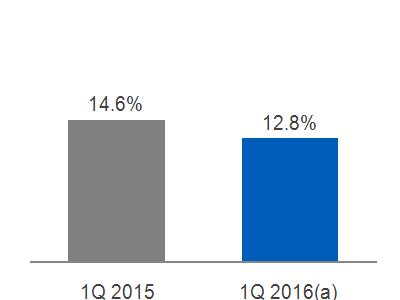
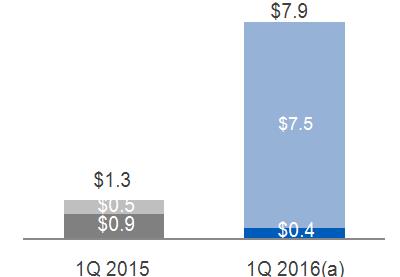
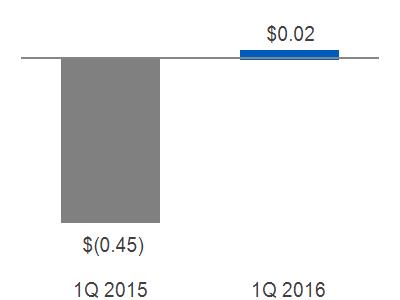
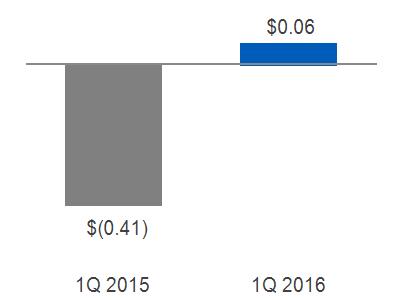
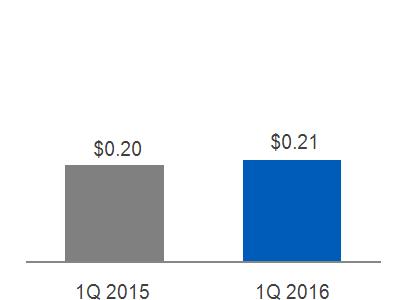

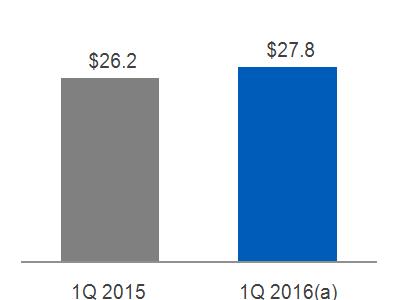
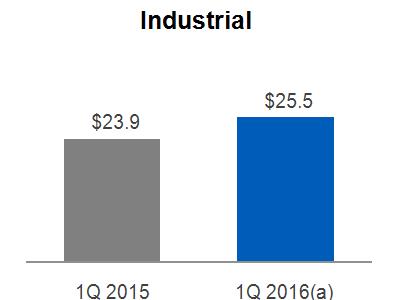
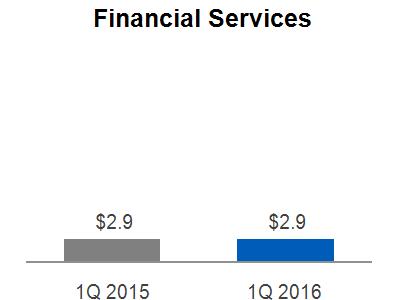
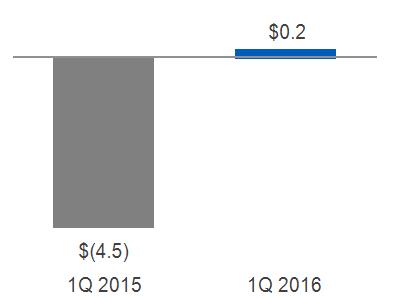
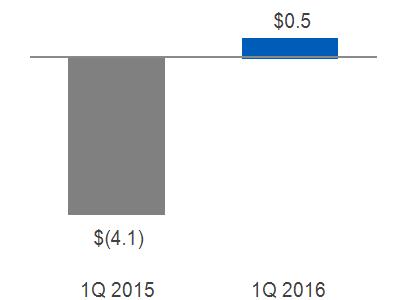
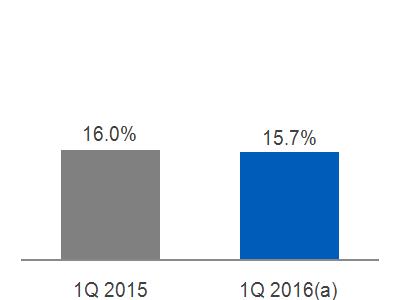
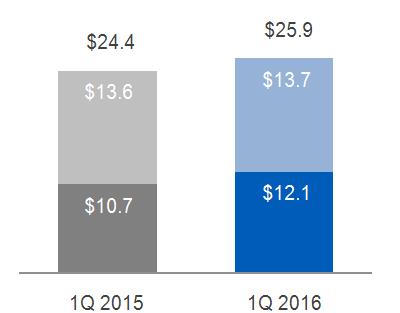
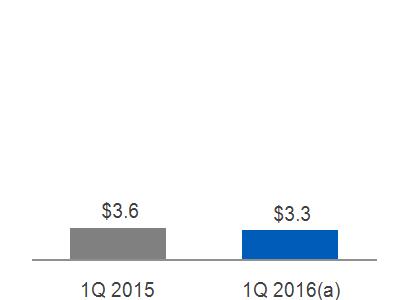
 POWER
POWER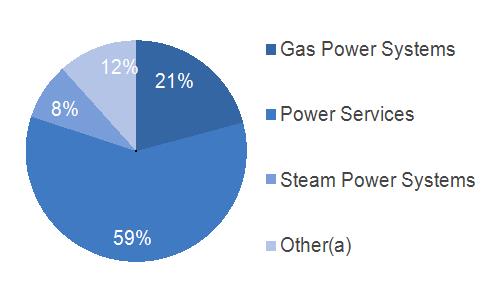
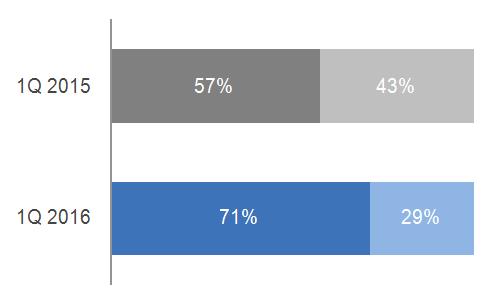
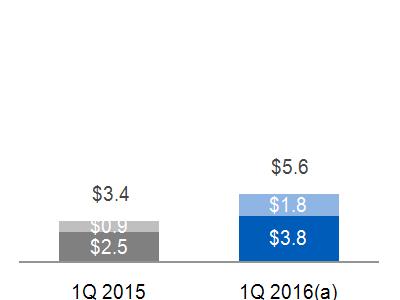
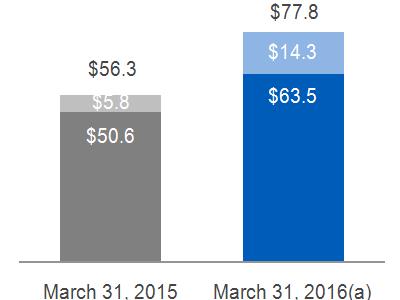

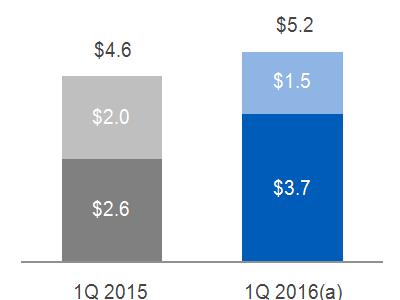
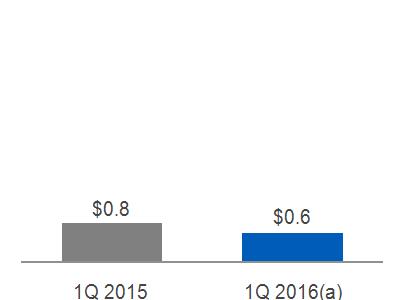
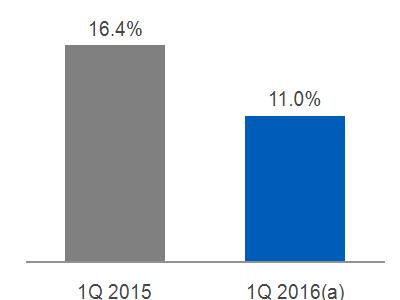
 RENEWABLE ENERGY
RENEWABLE ENERGY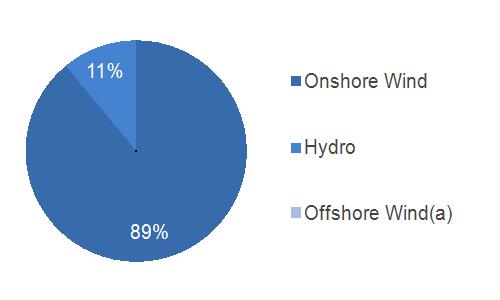
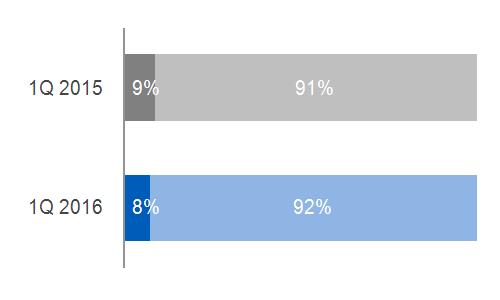
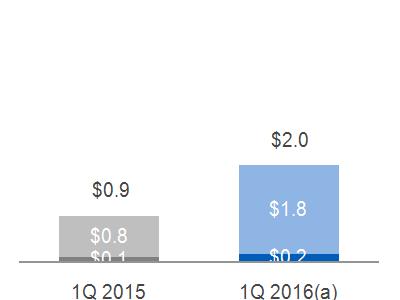
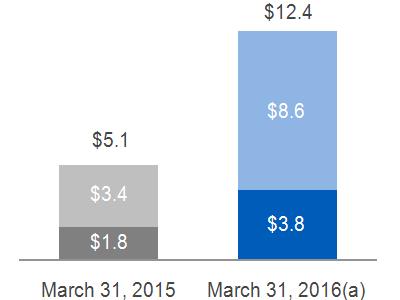

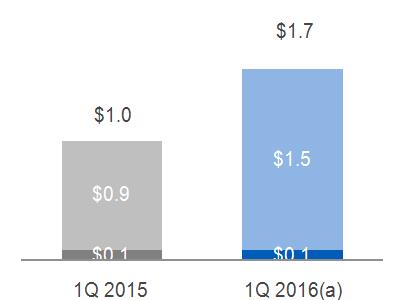

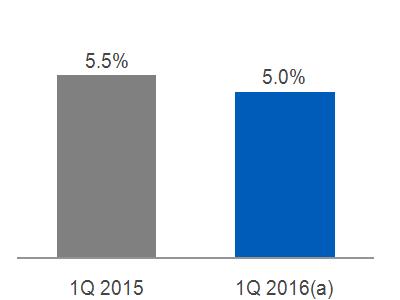
 OIL & GAS
OIL & GAS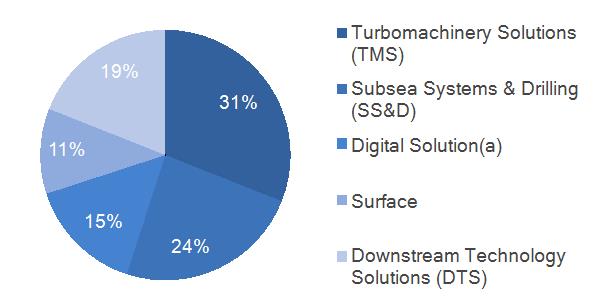
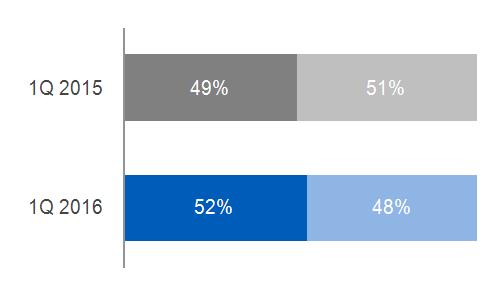
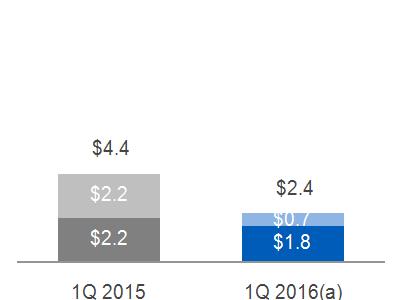
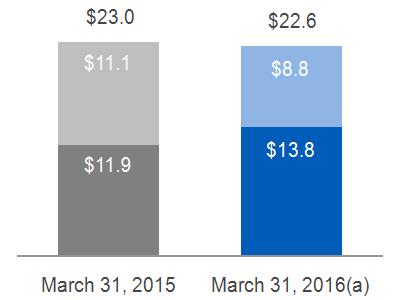
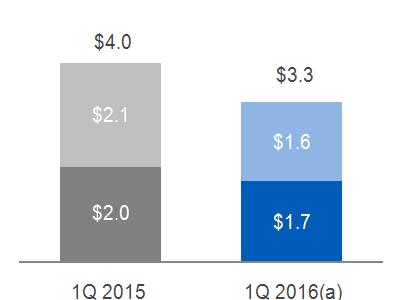
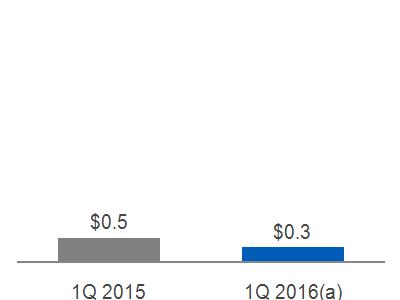
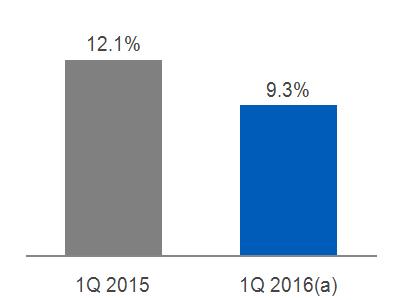
 ENERGY CONNECTIONS
ENERGY CONNECTIONS
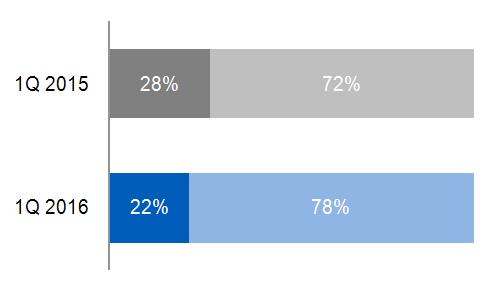
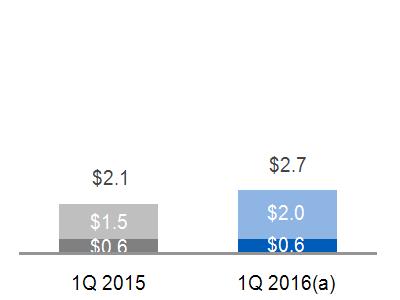
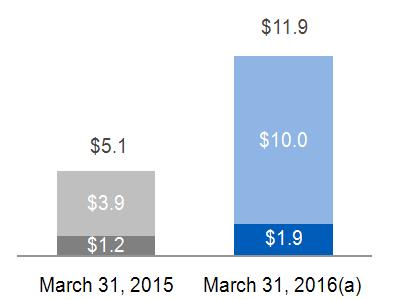
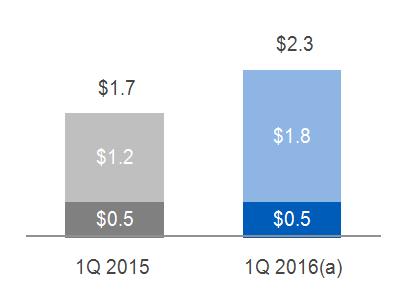
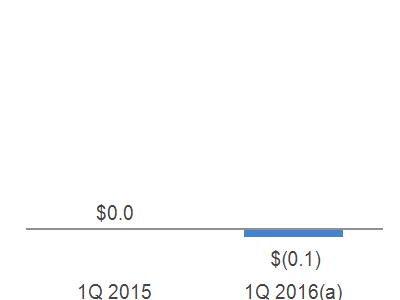
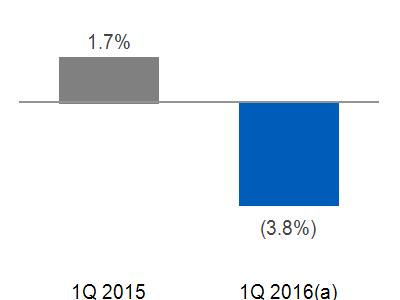
 AVIATION
AVIATION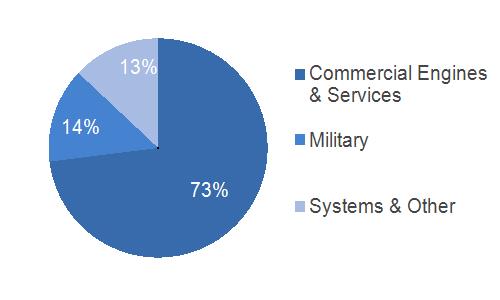
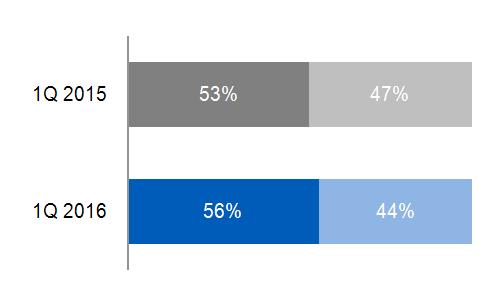
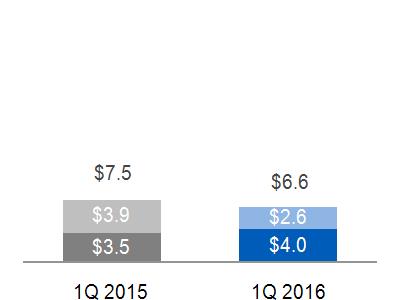
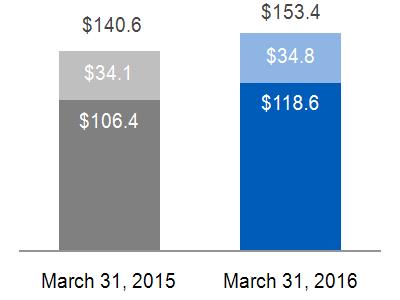

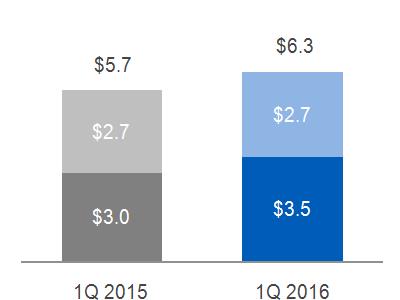

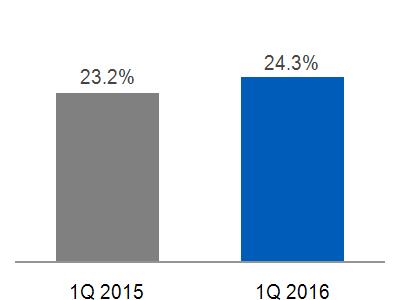
 HEALTHCARE
HEALTHCARE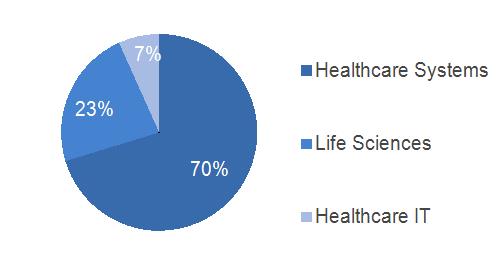
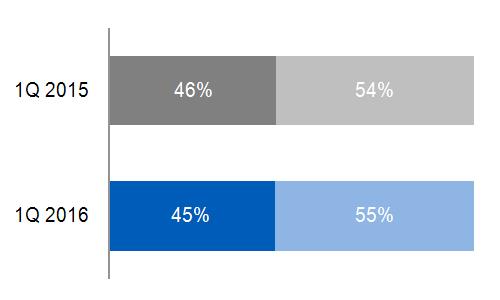
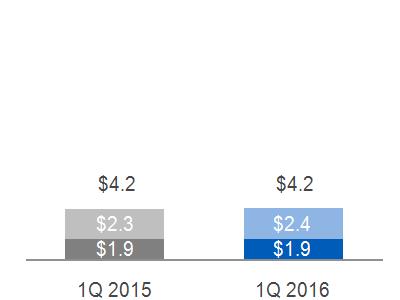
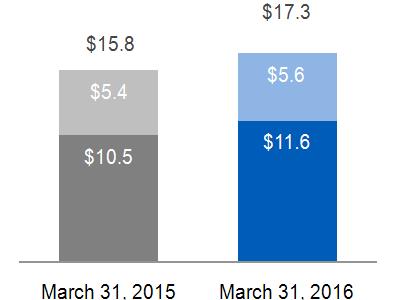
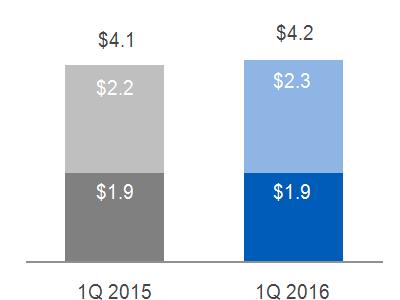
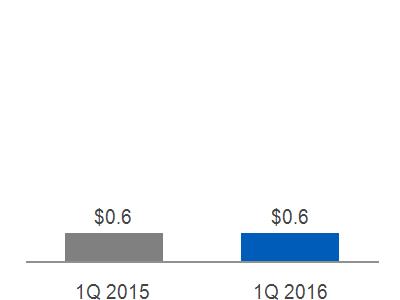
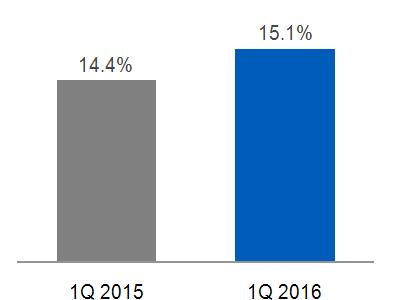
 TRANSPORTATION
TRANSPORTATION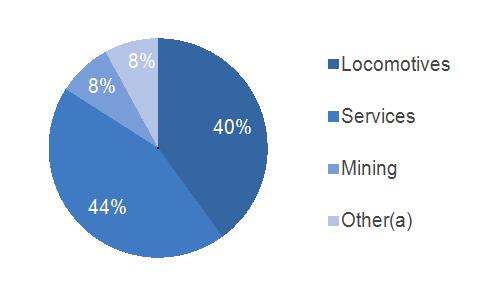
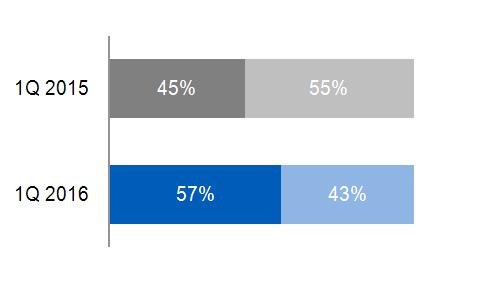
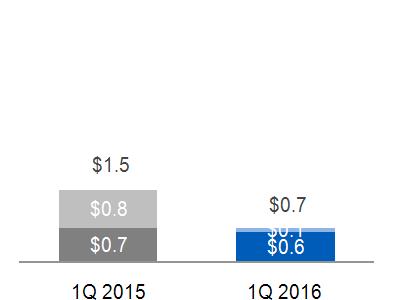
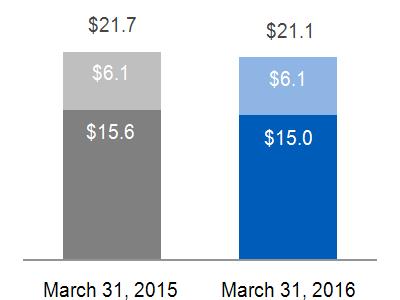

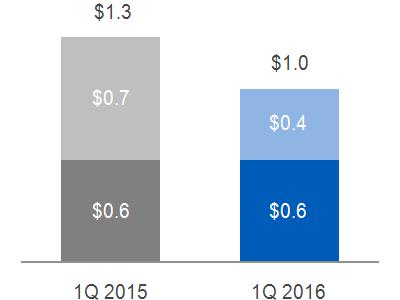
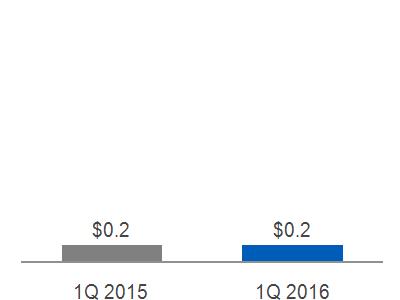
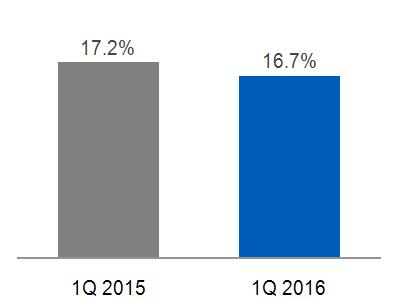
 APPLIANCES & LIGHTING
APPLIANCES & LIGHTING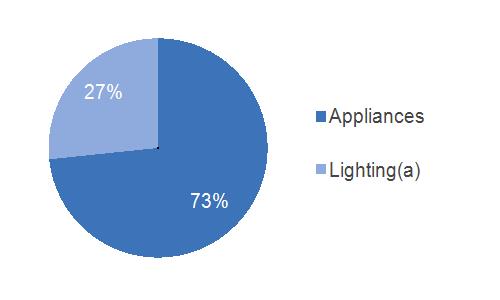
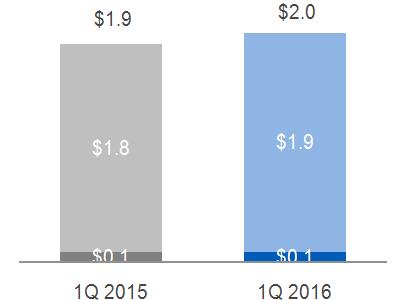


 CAPITAL
CAPITAL



